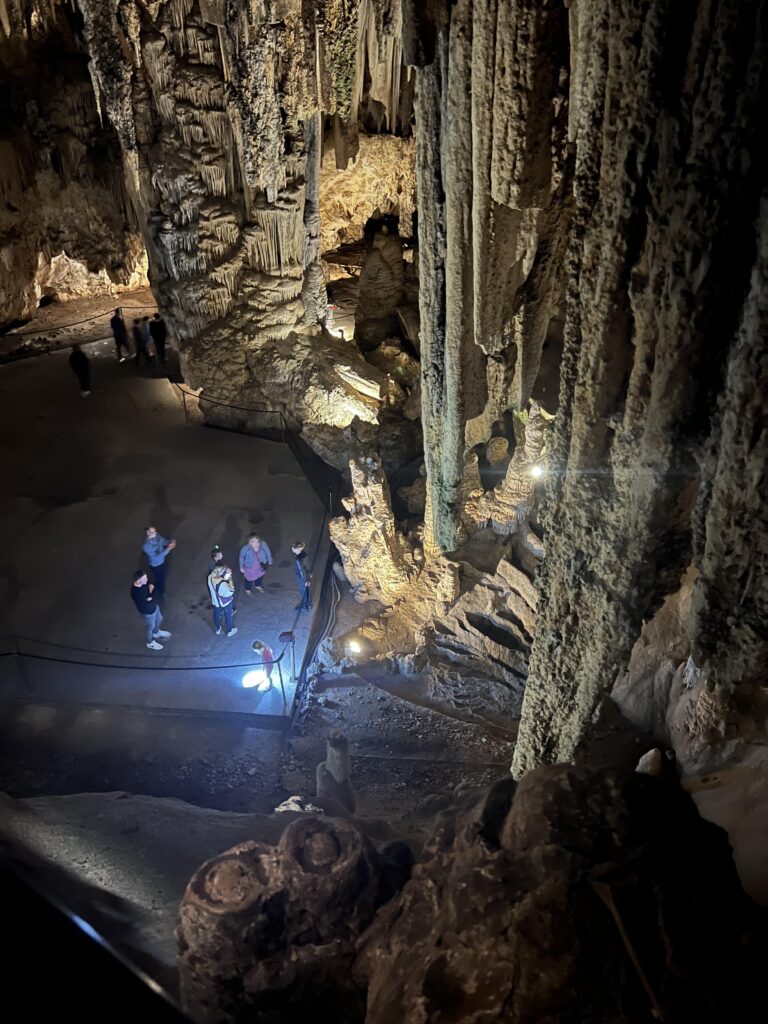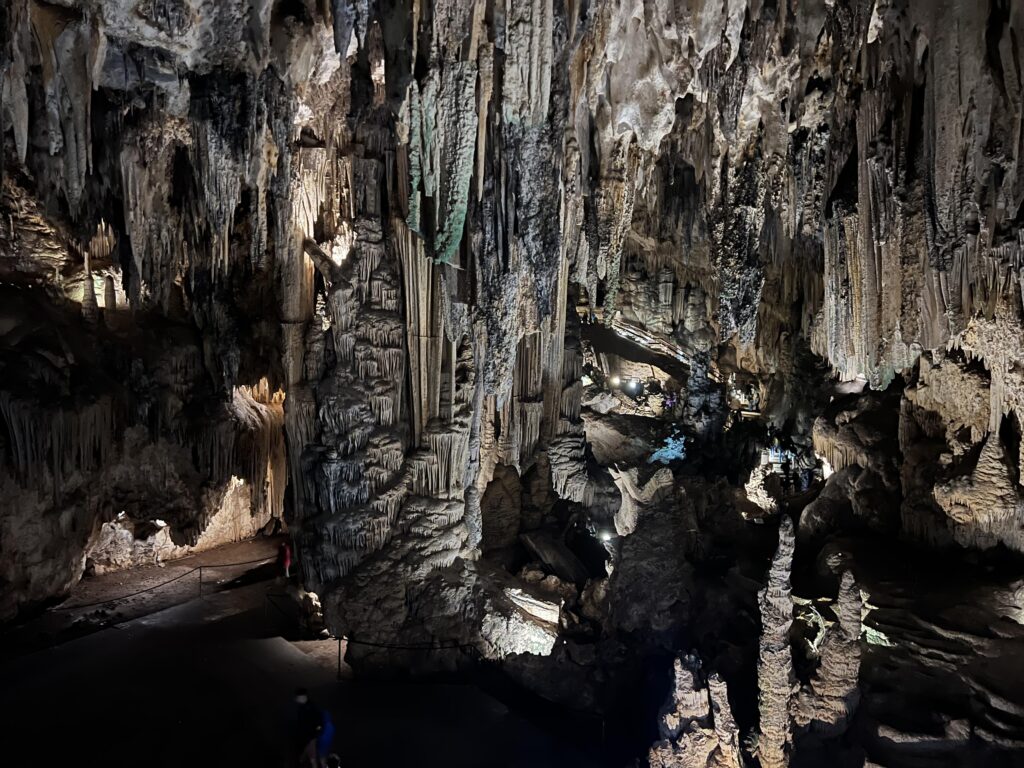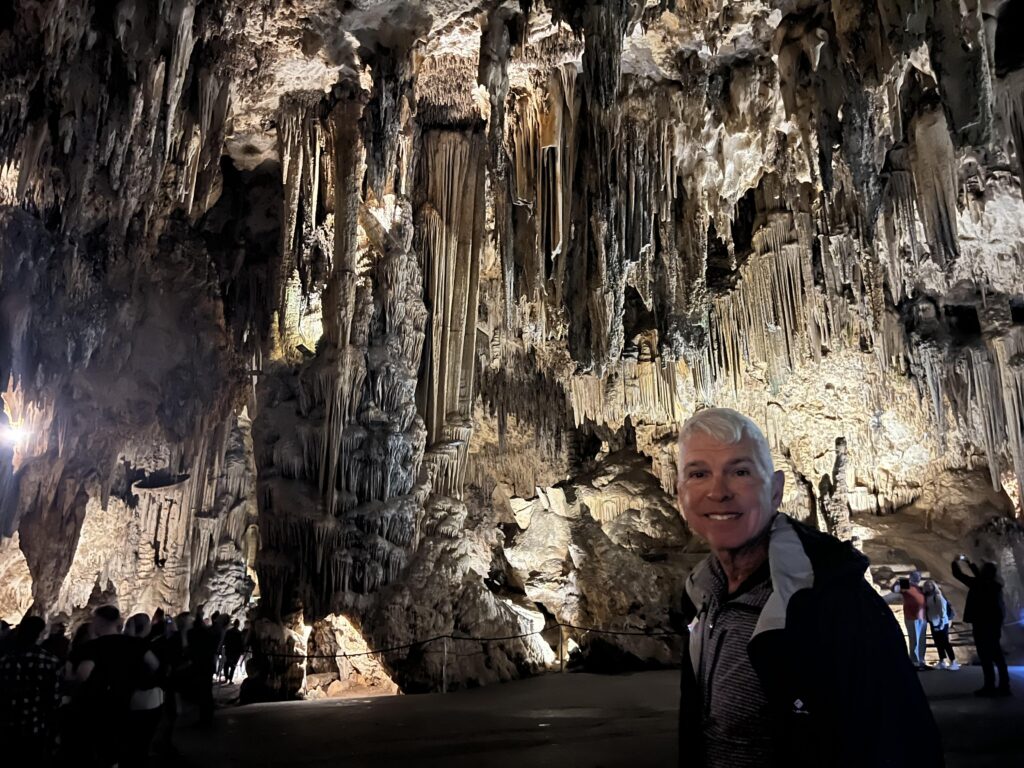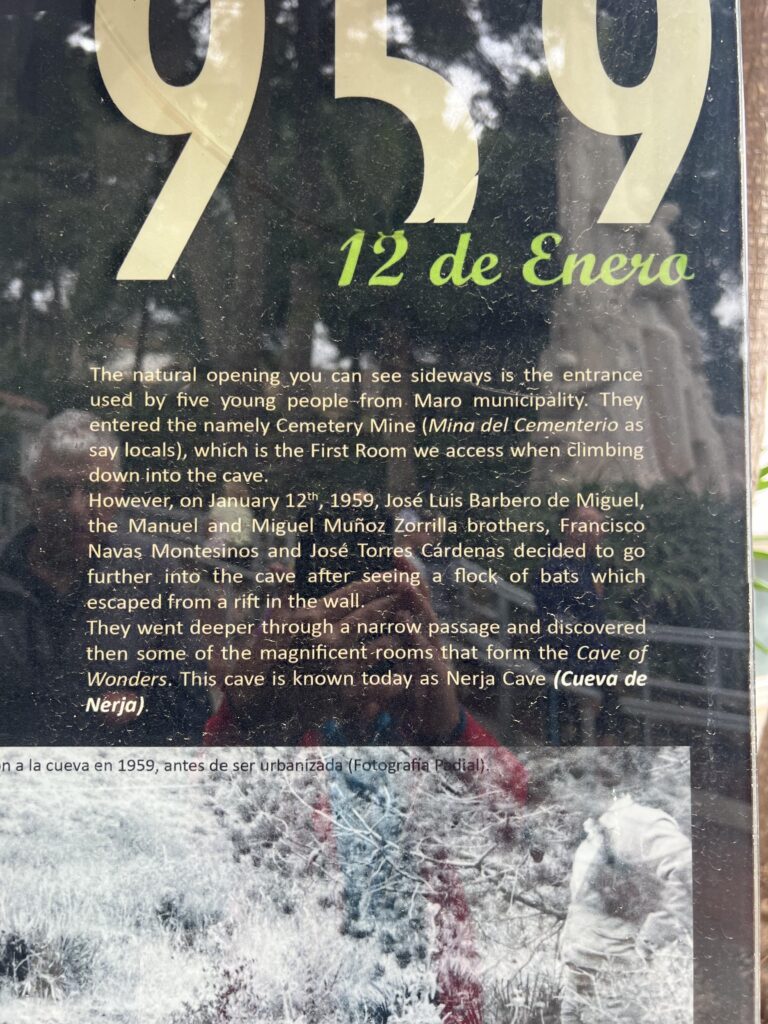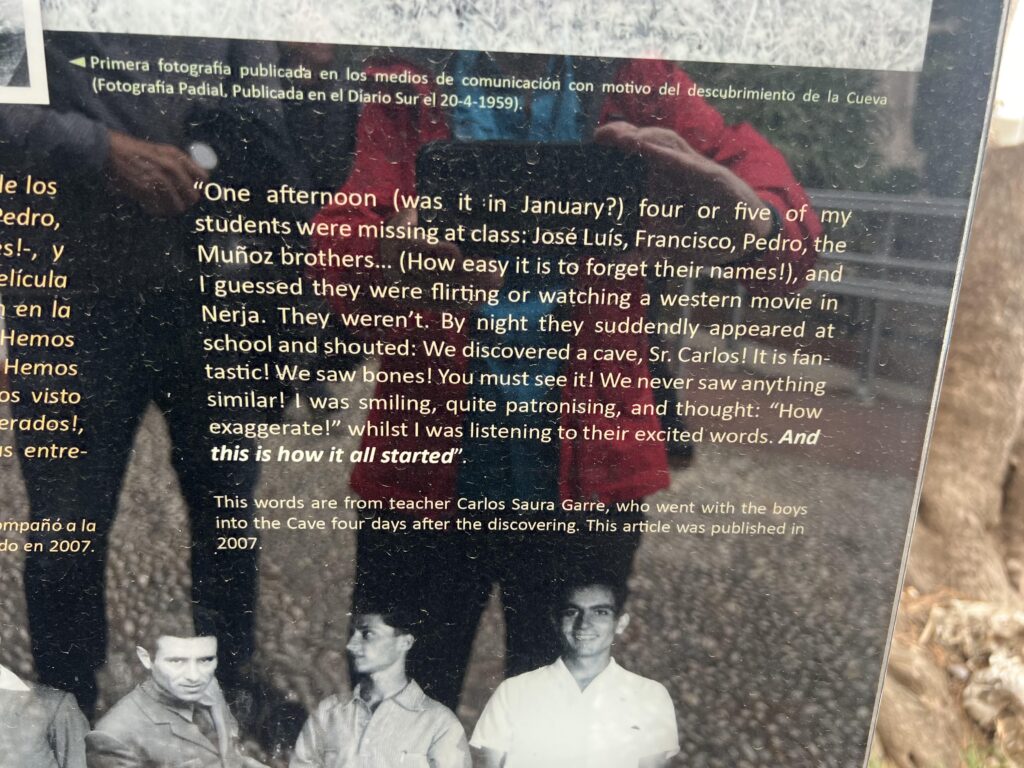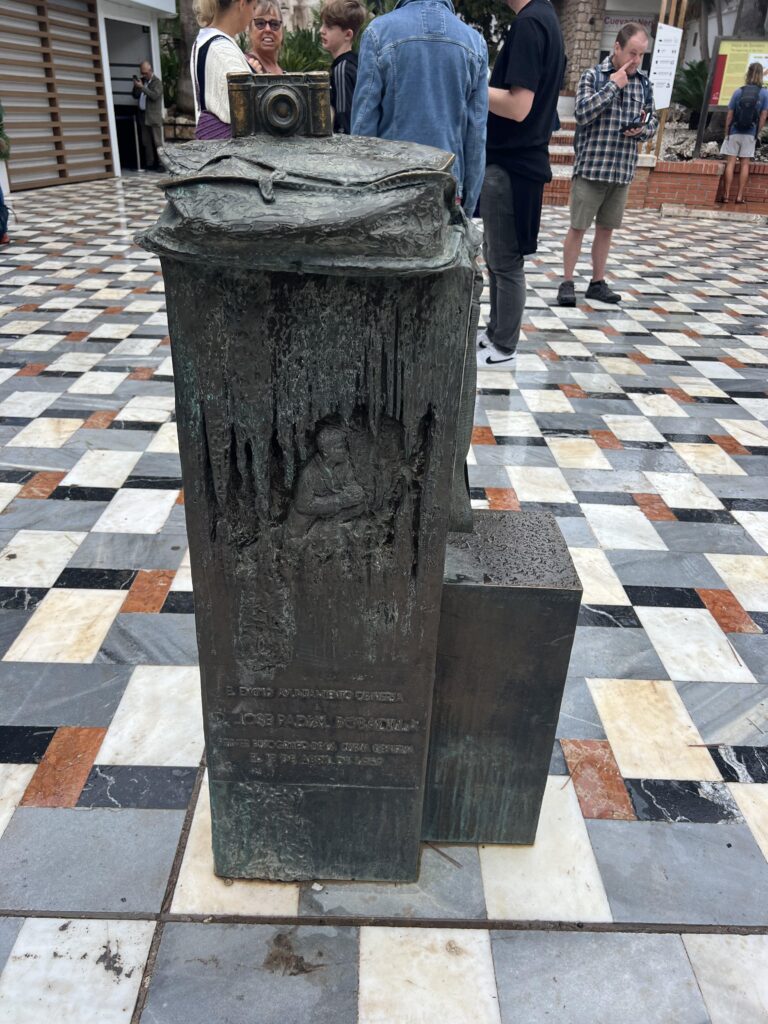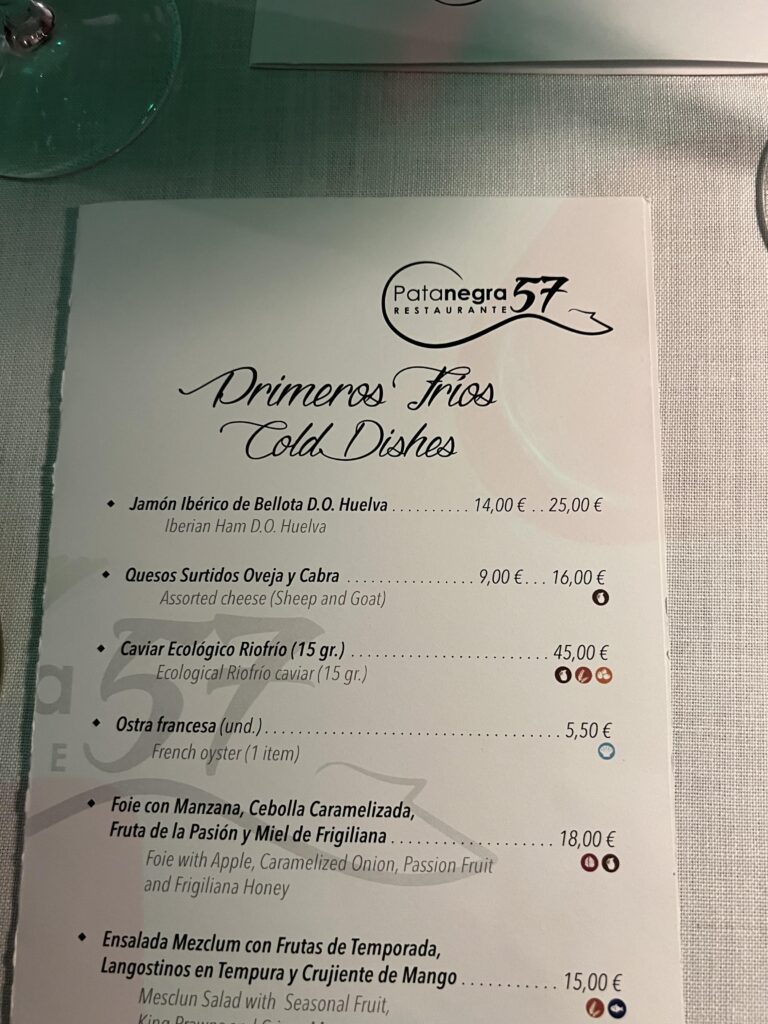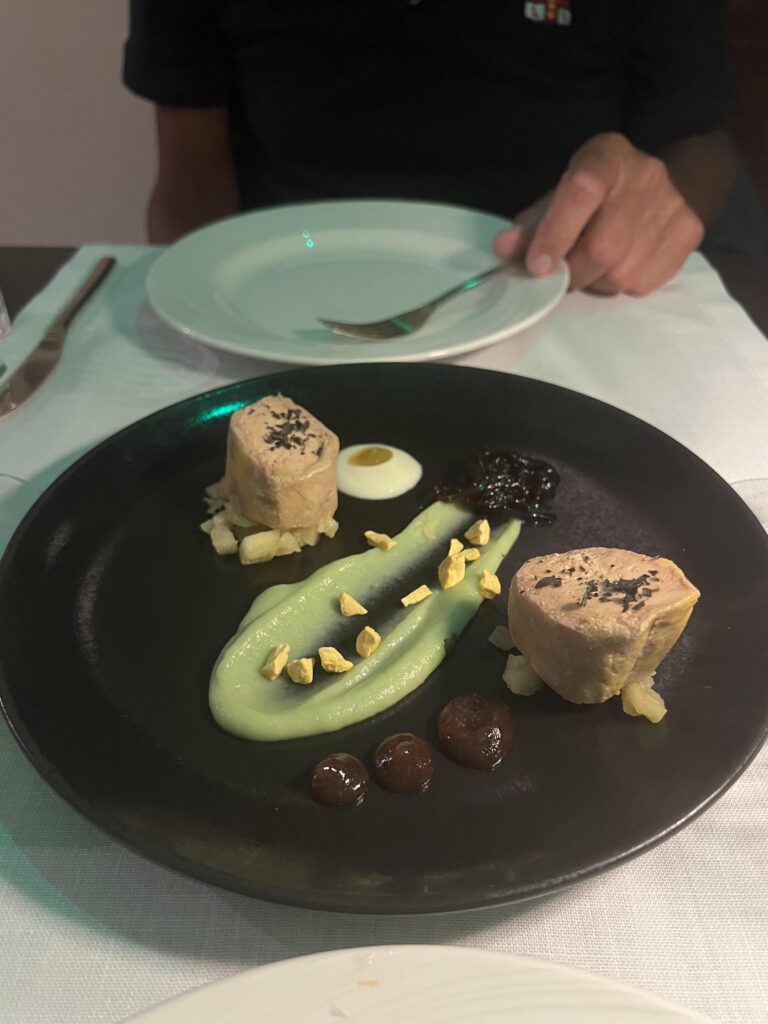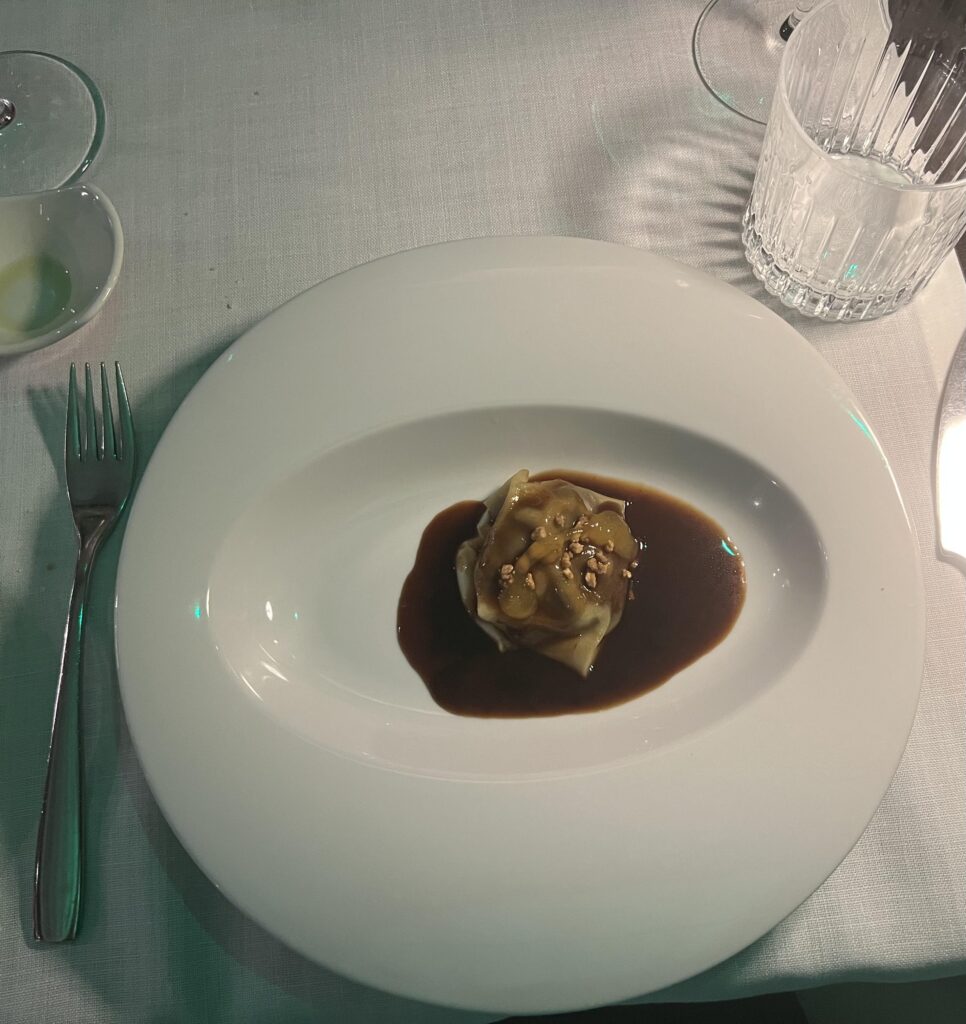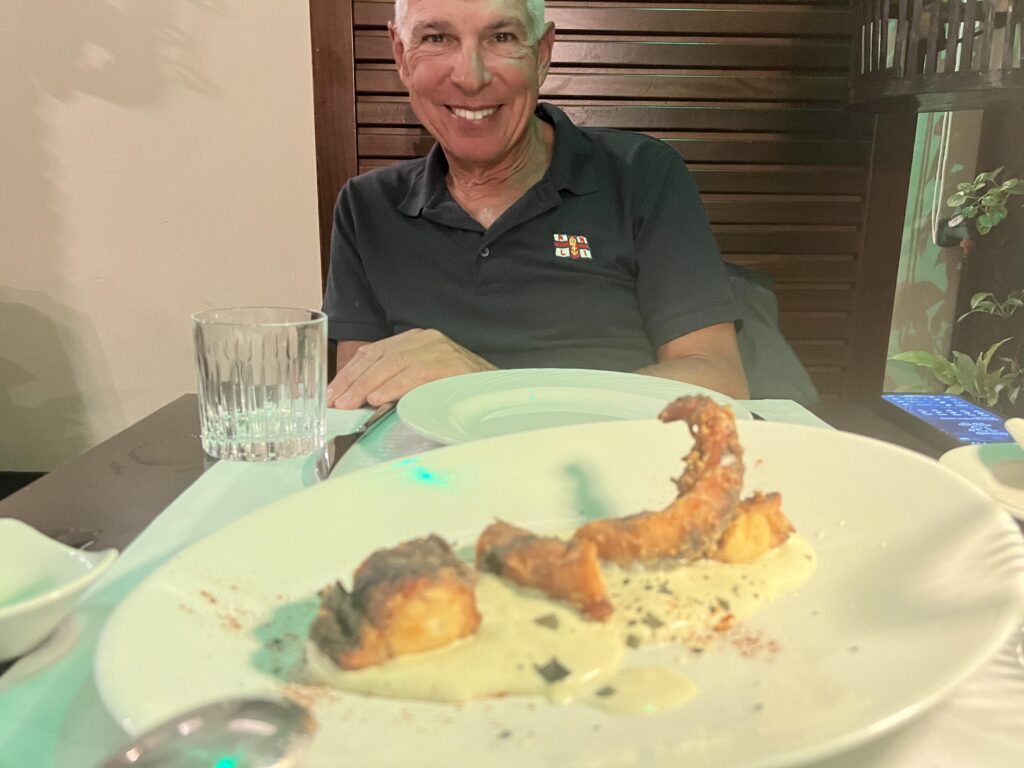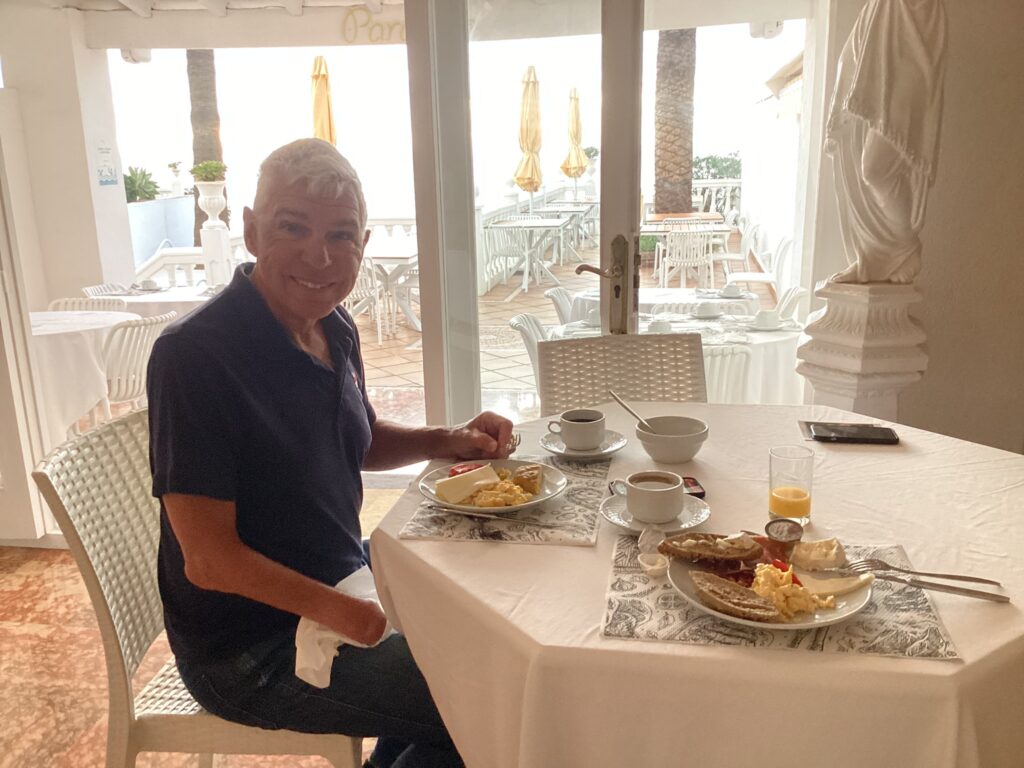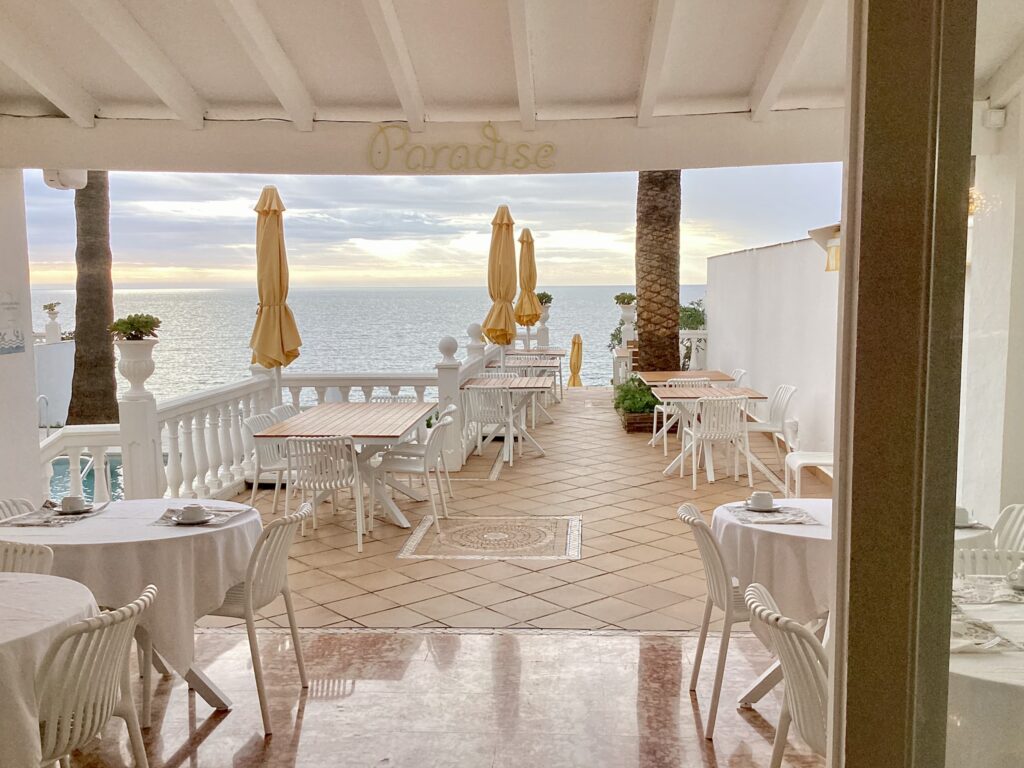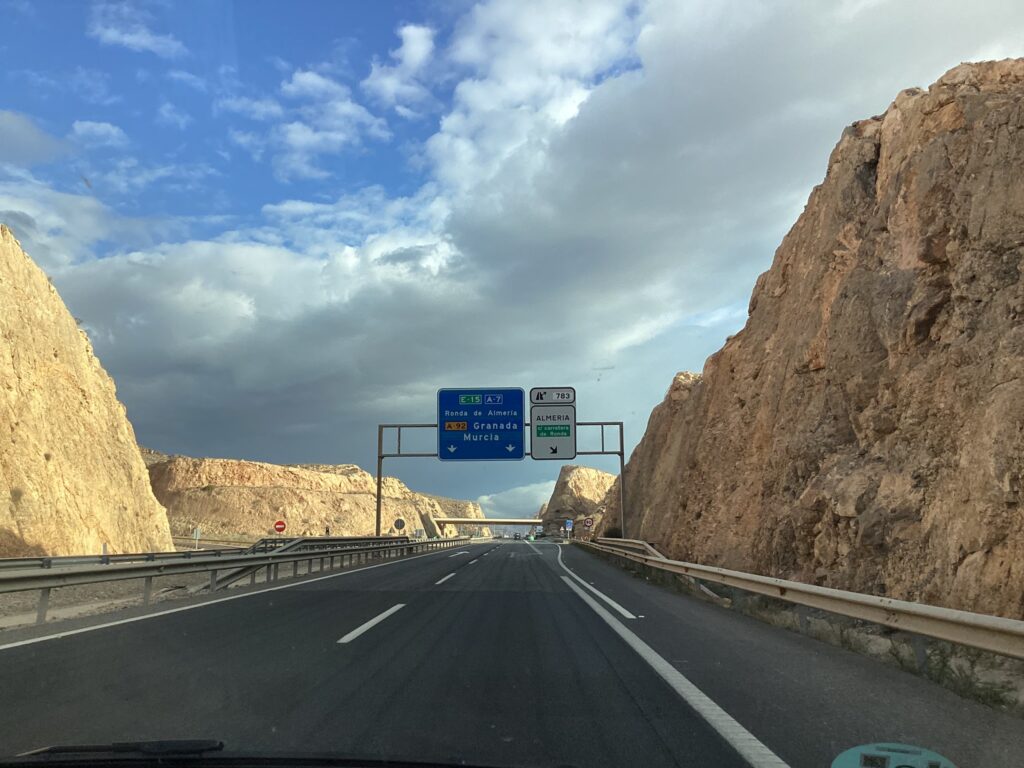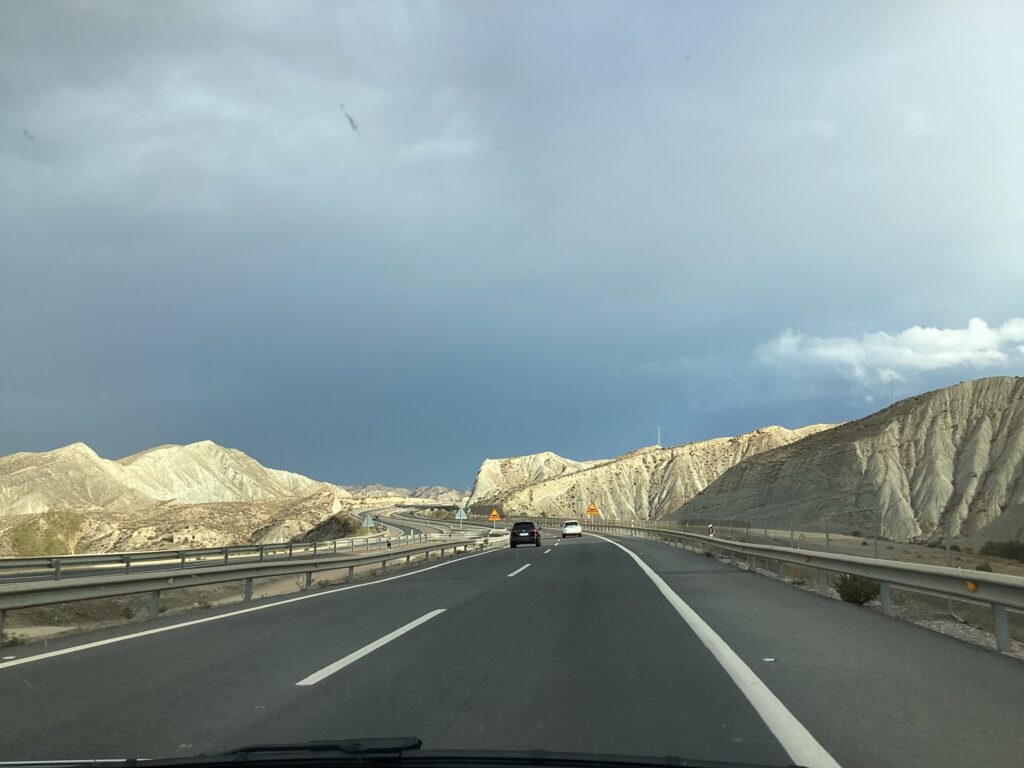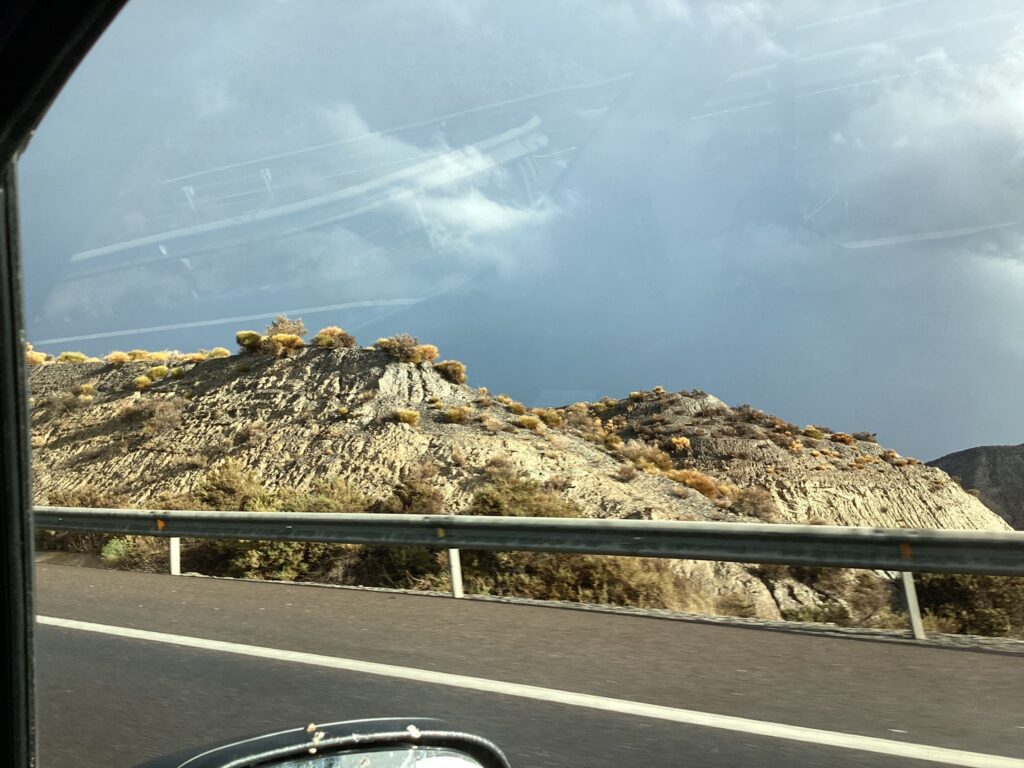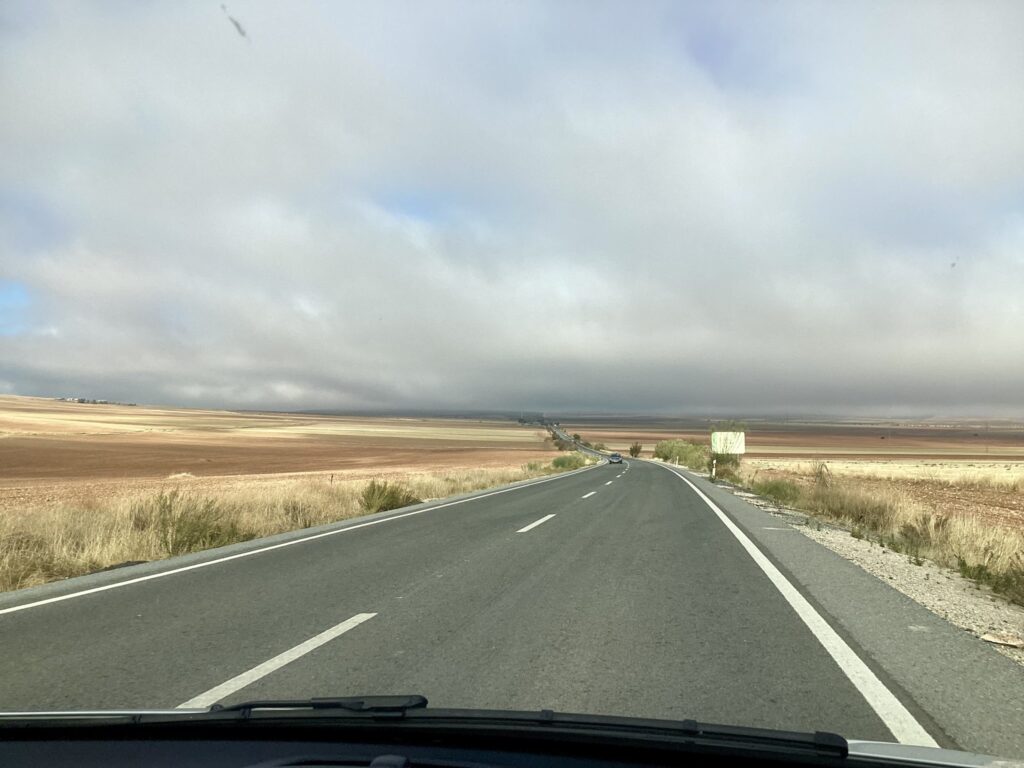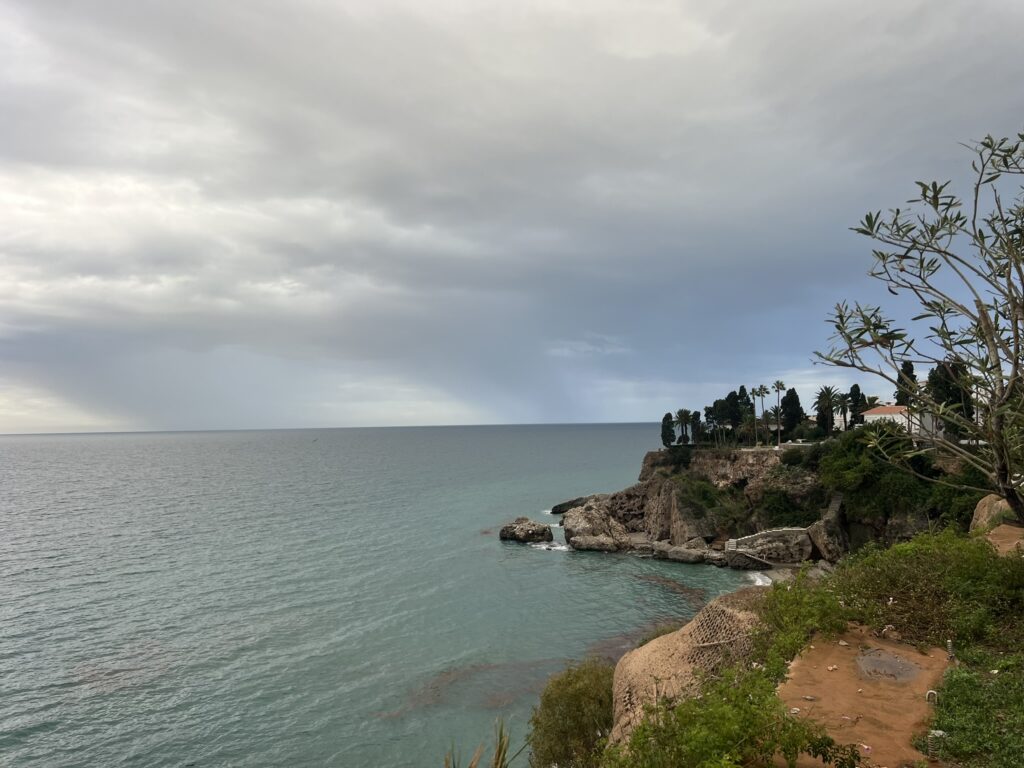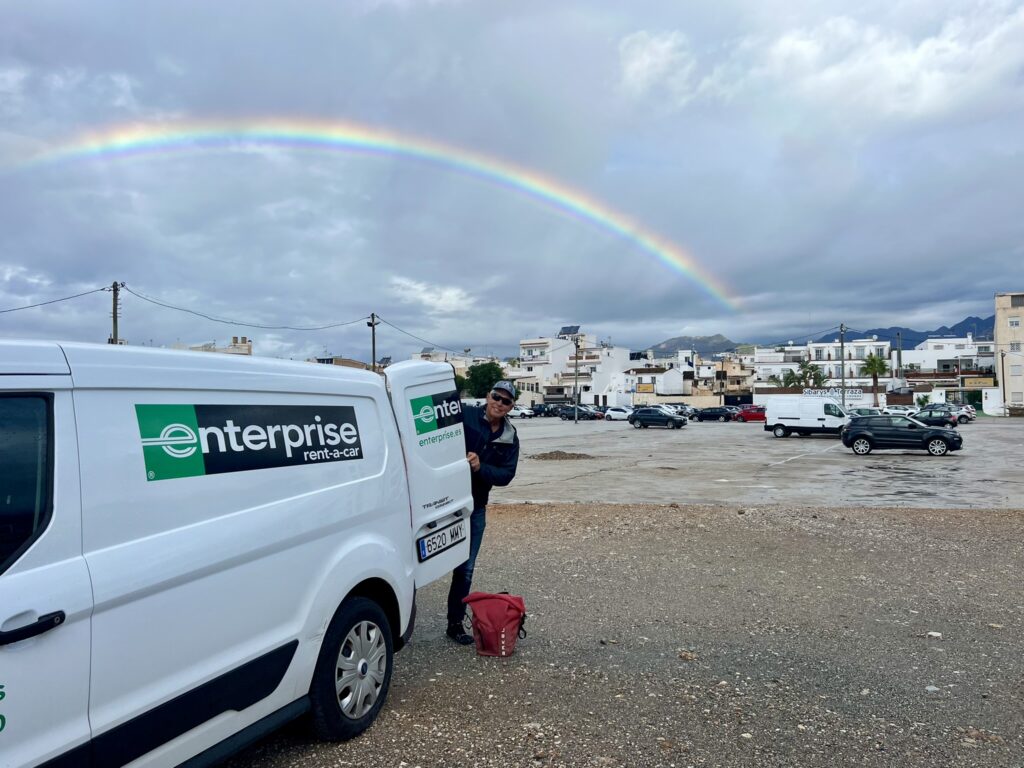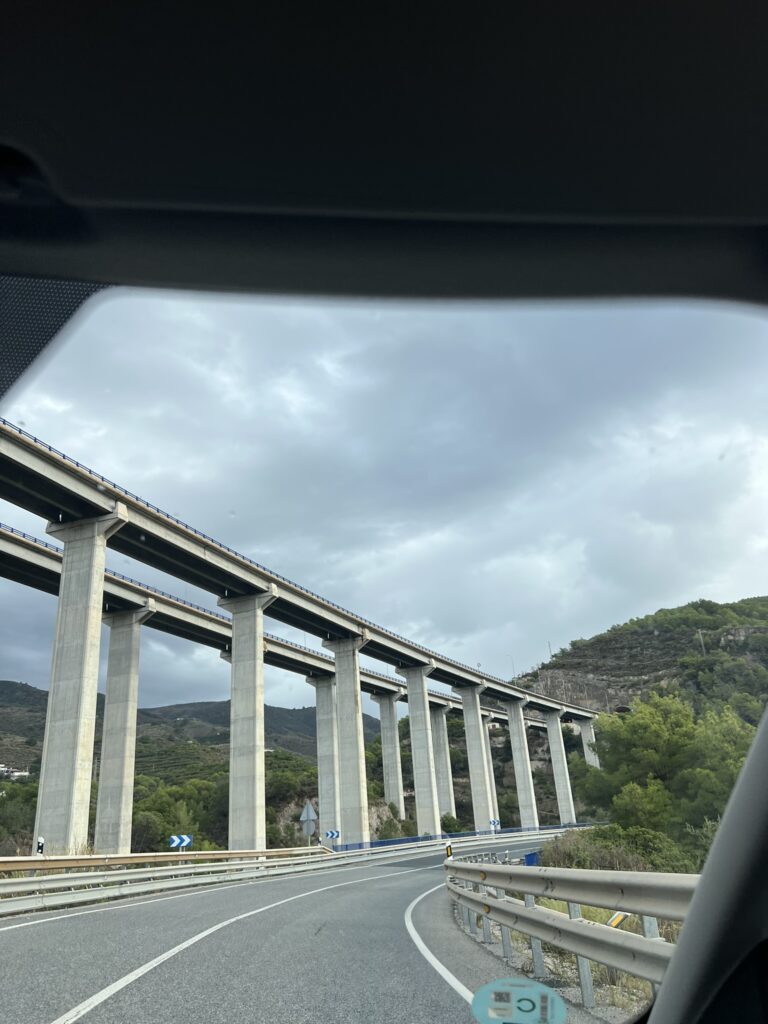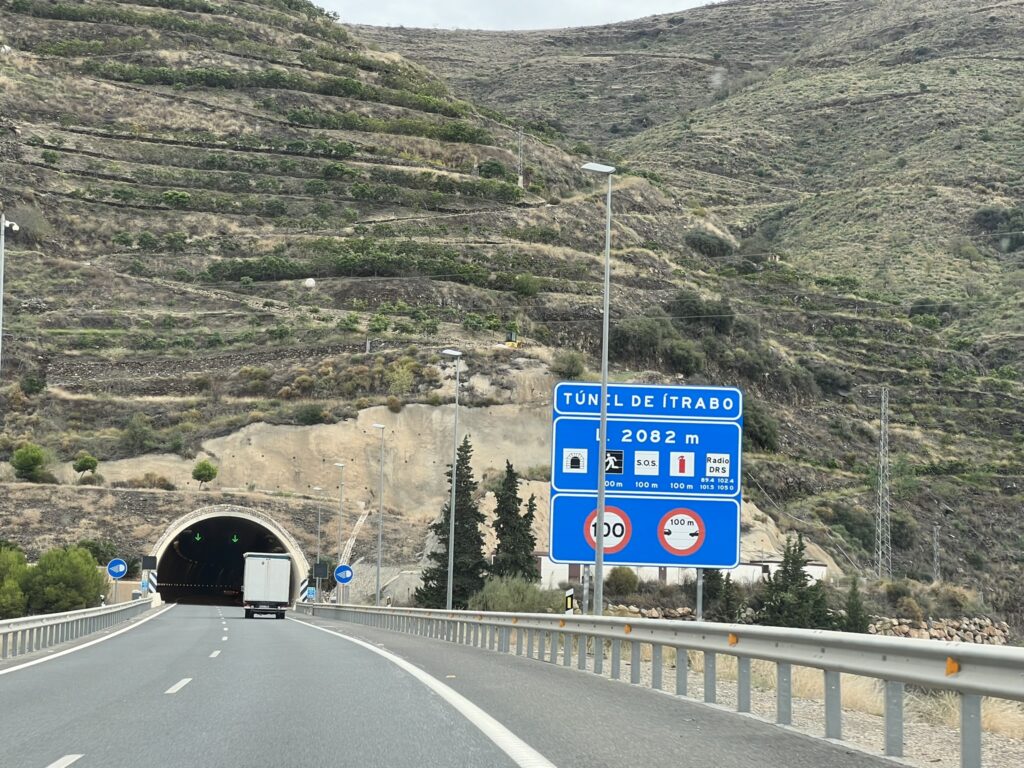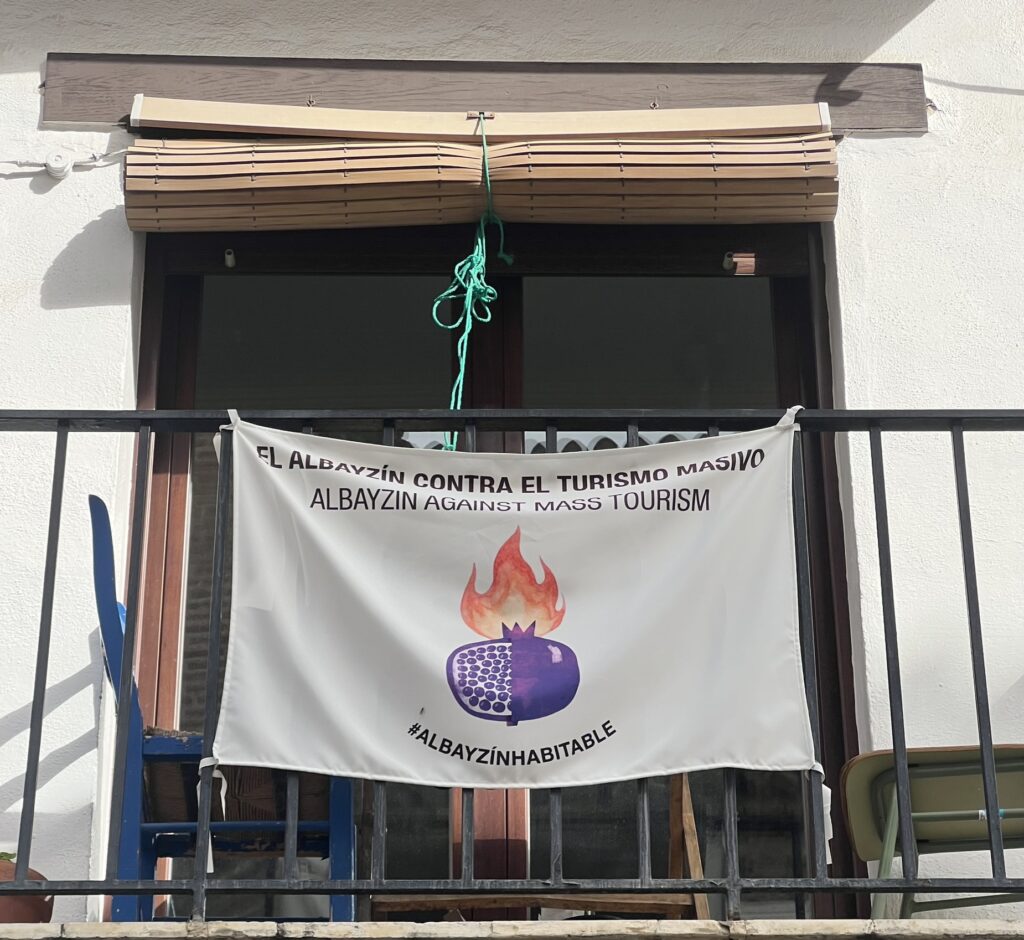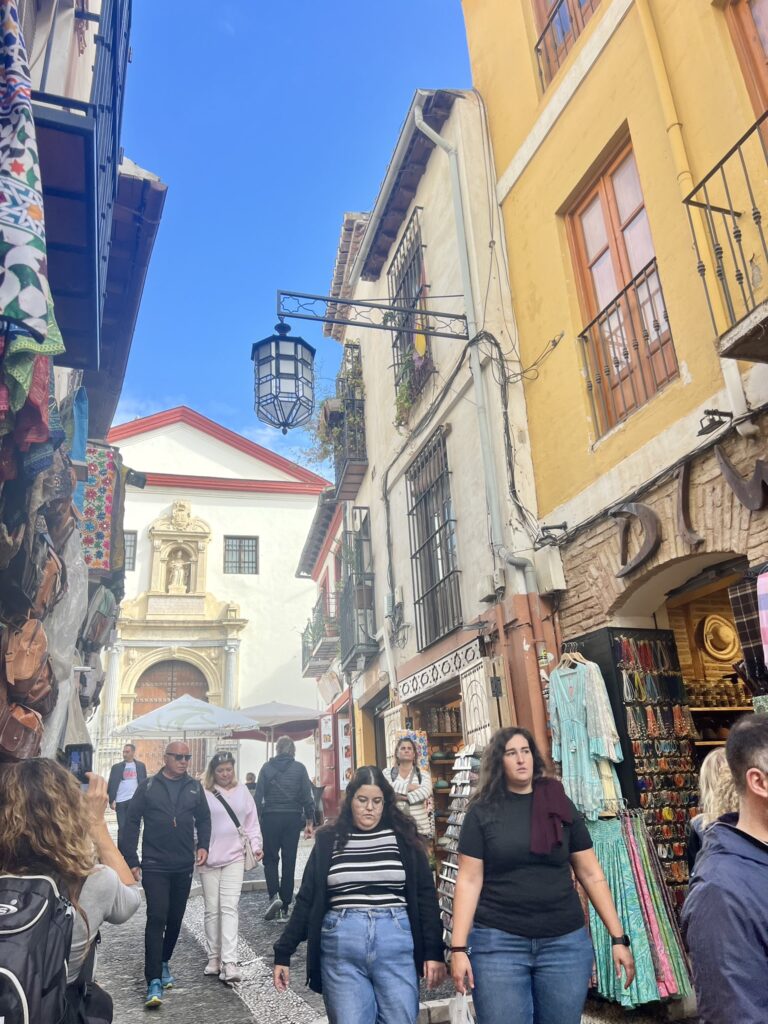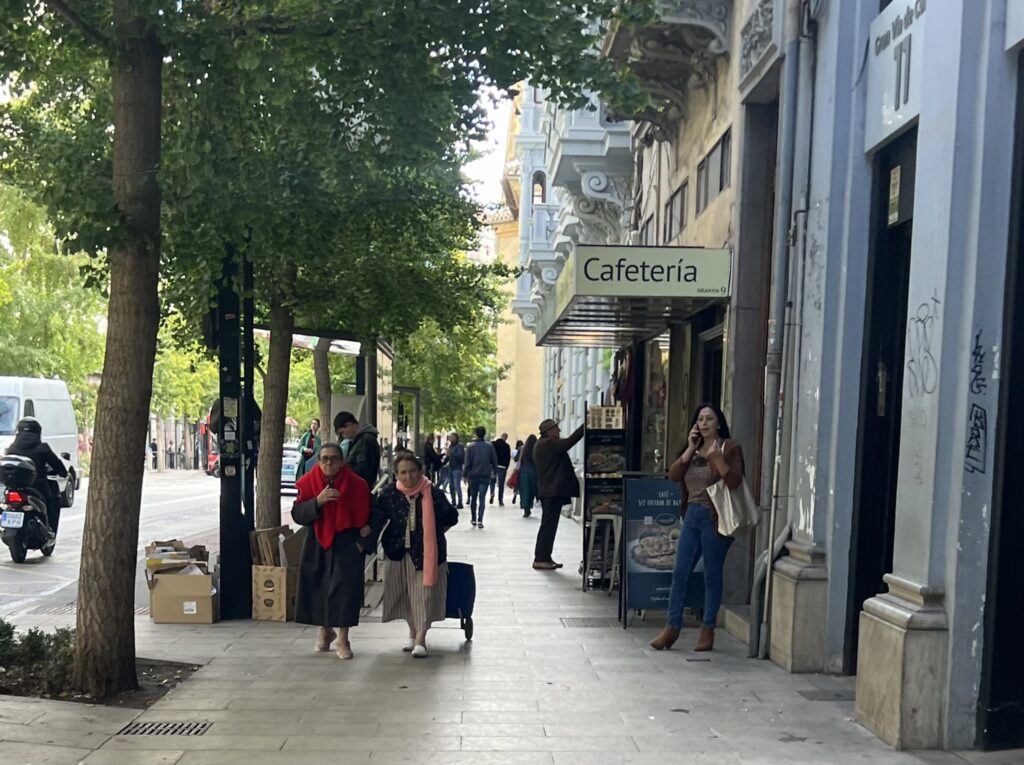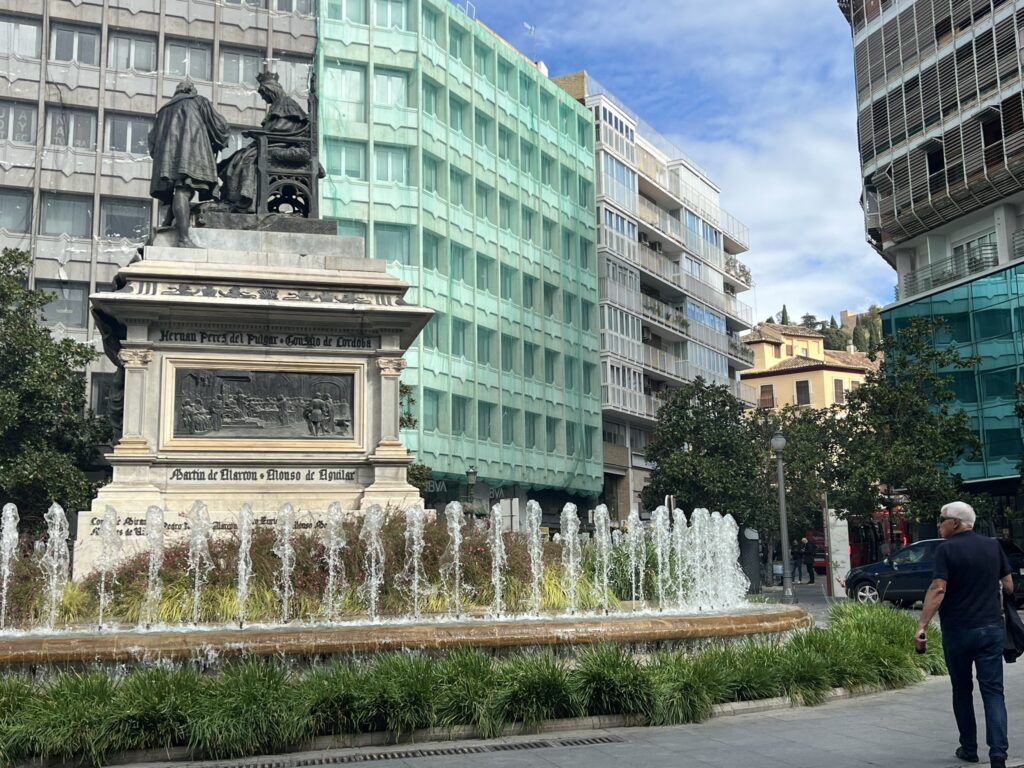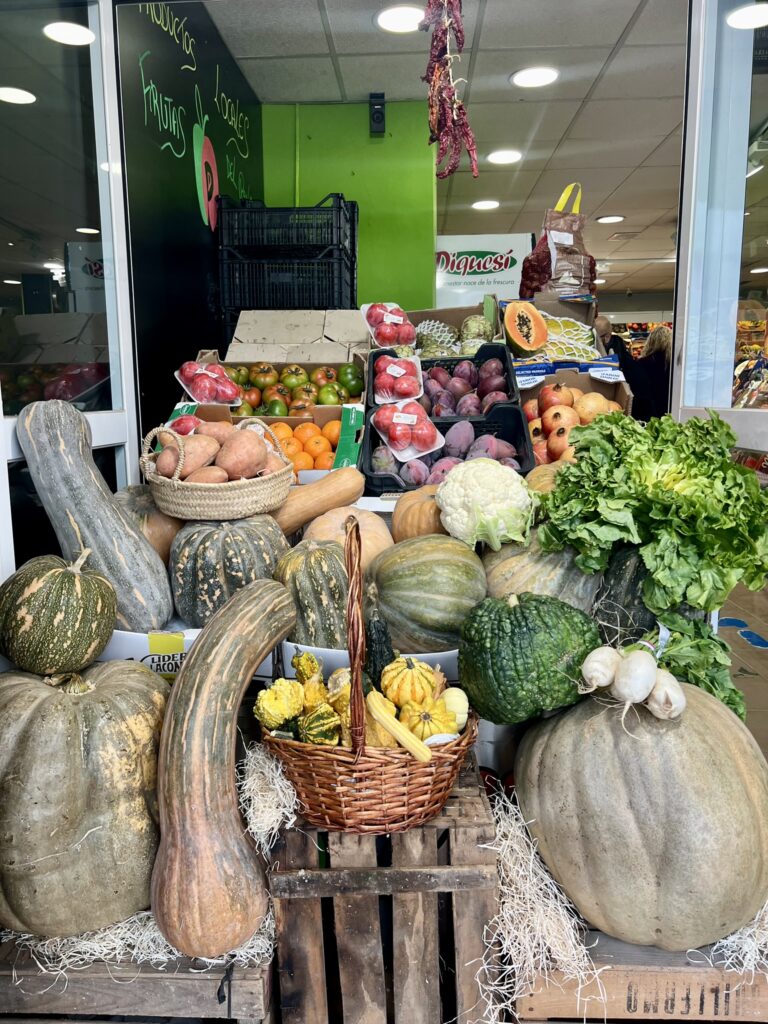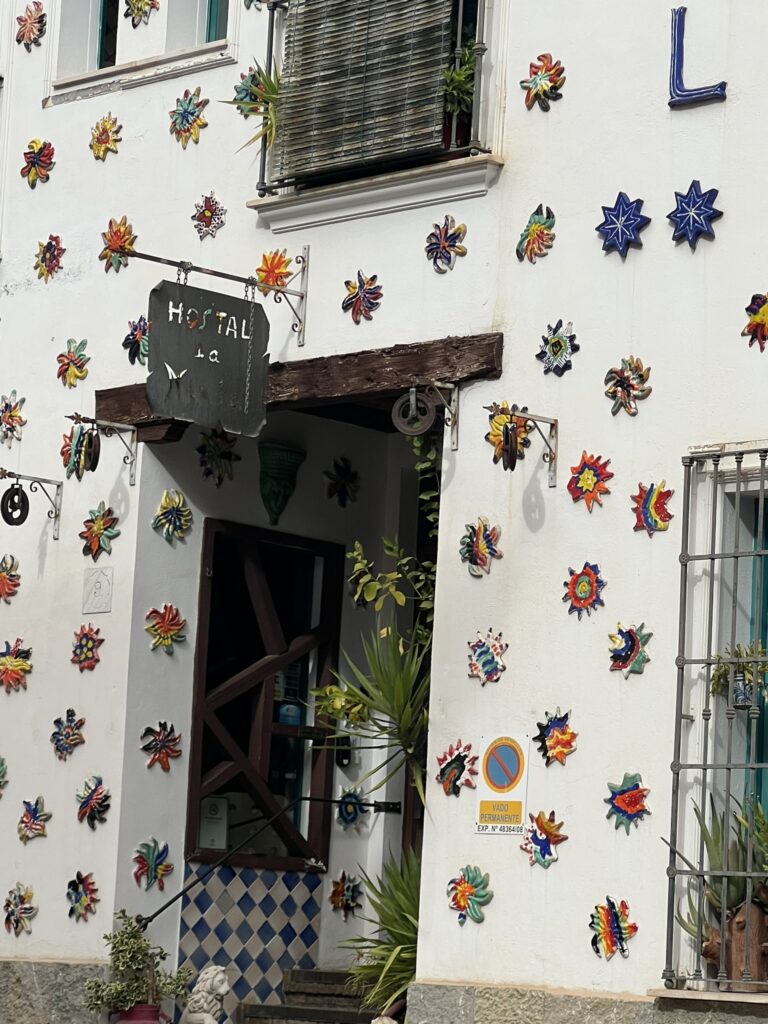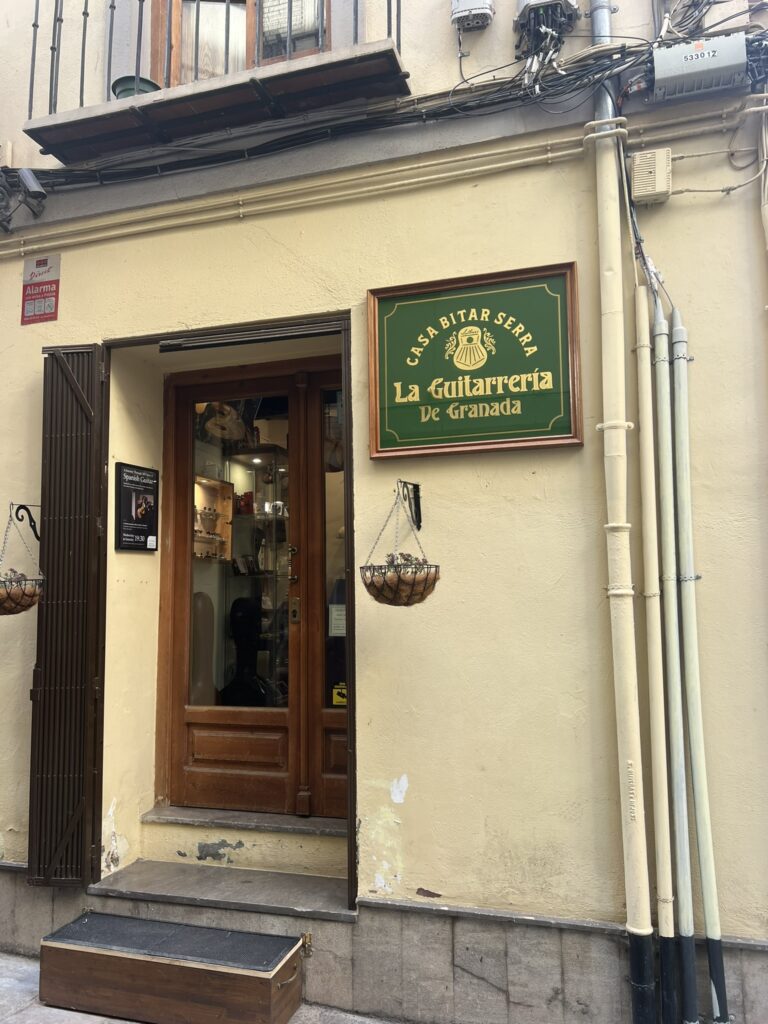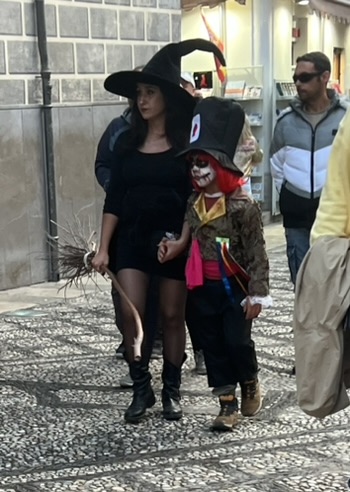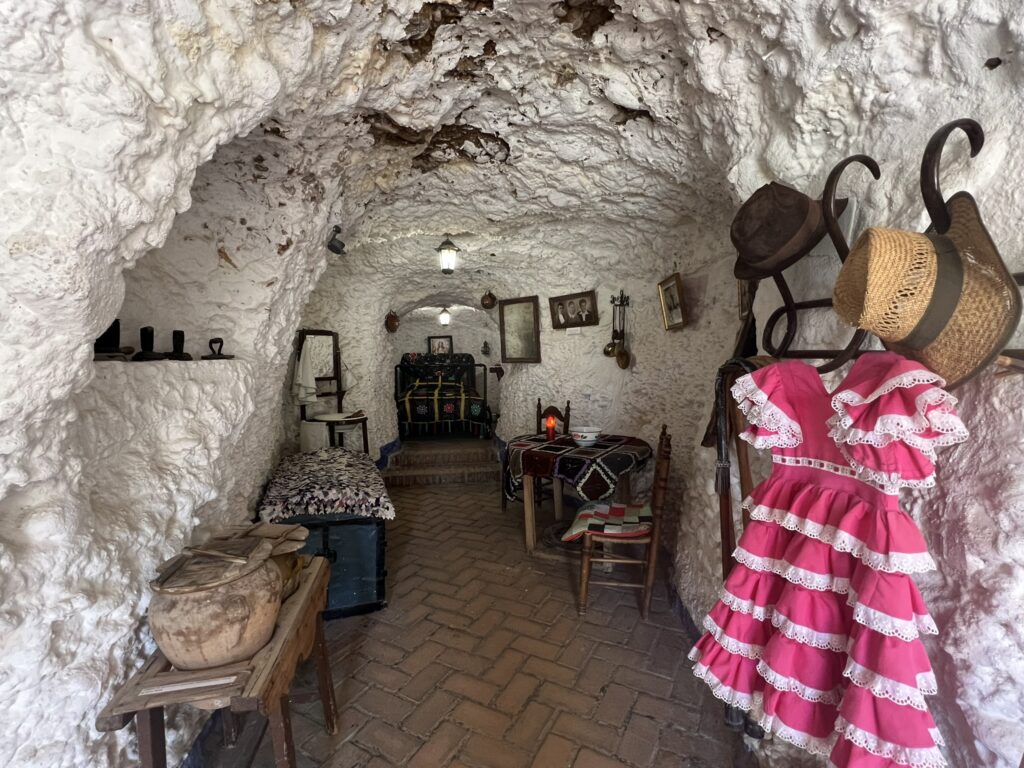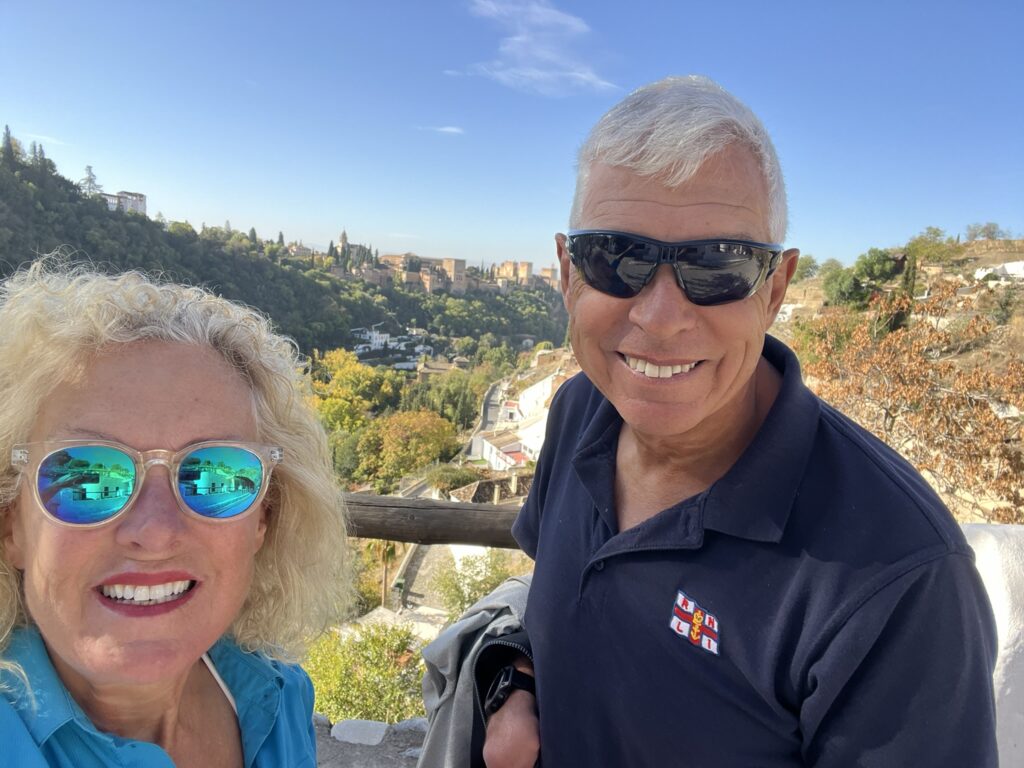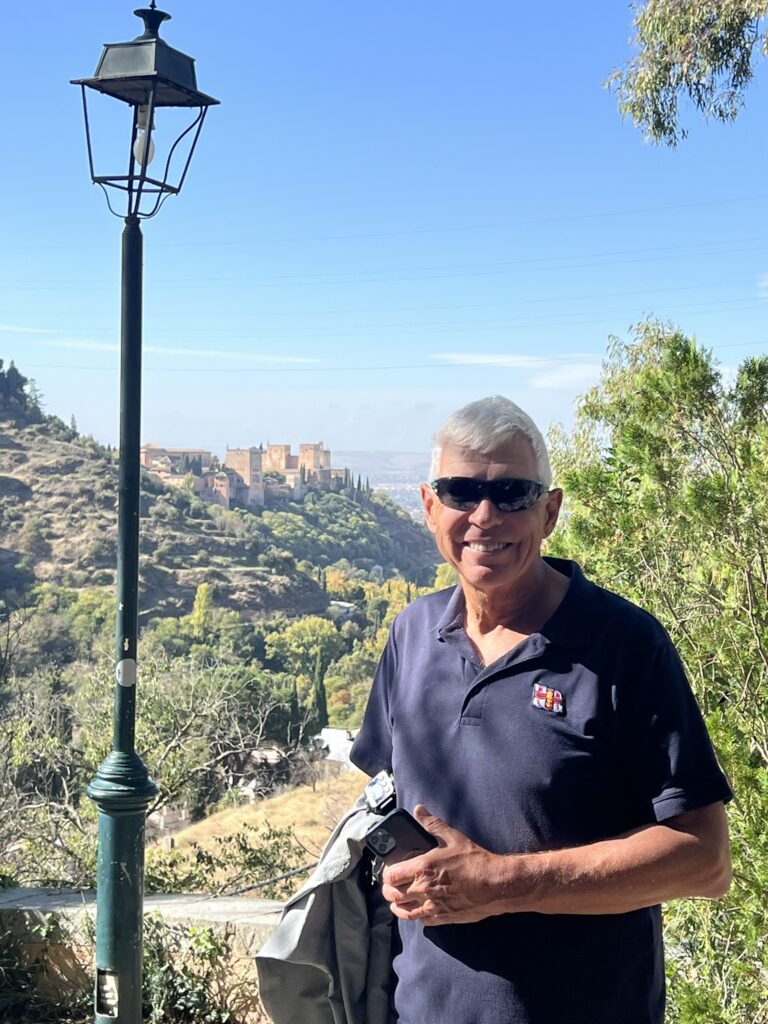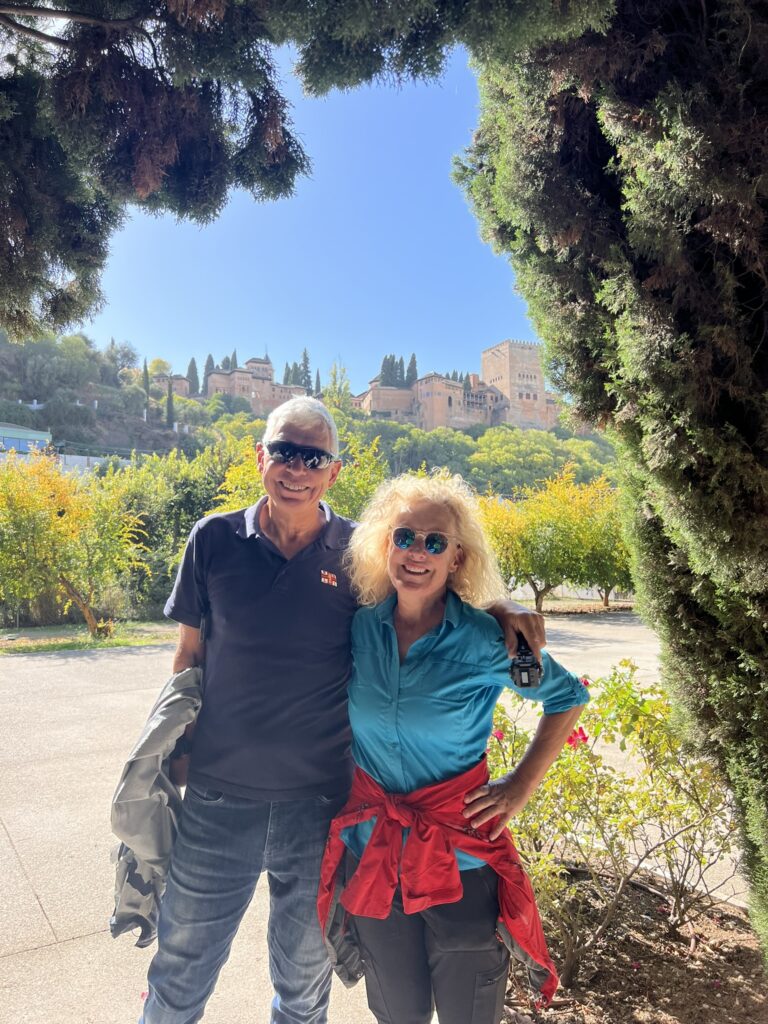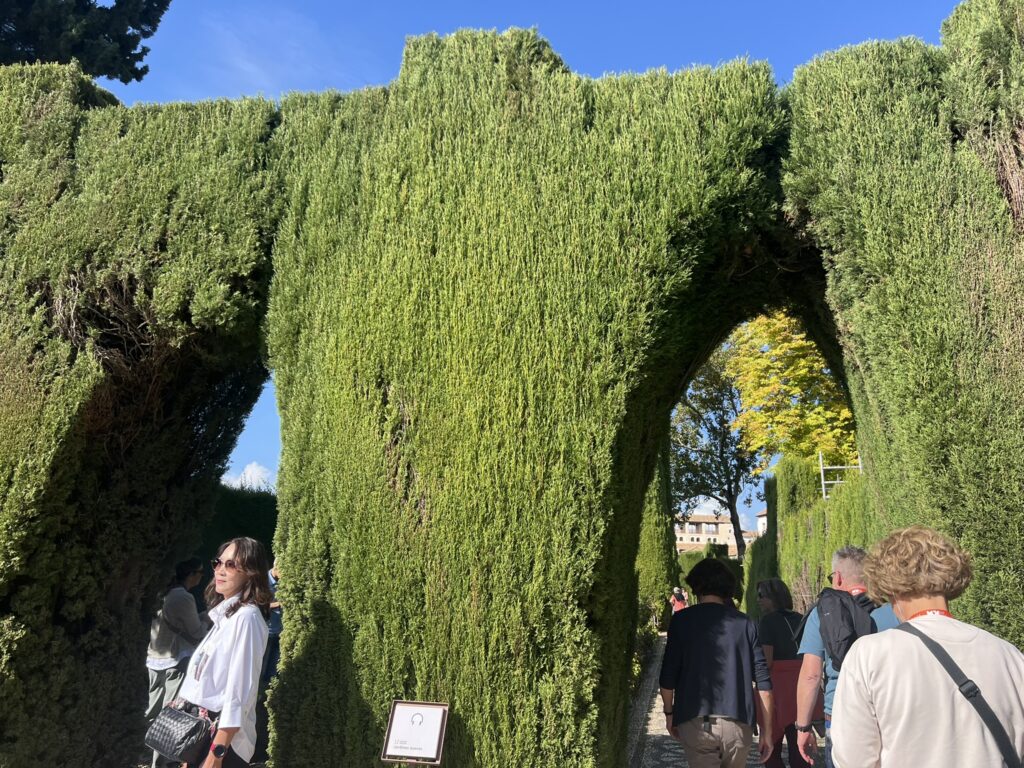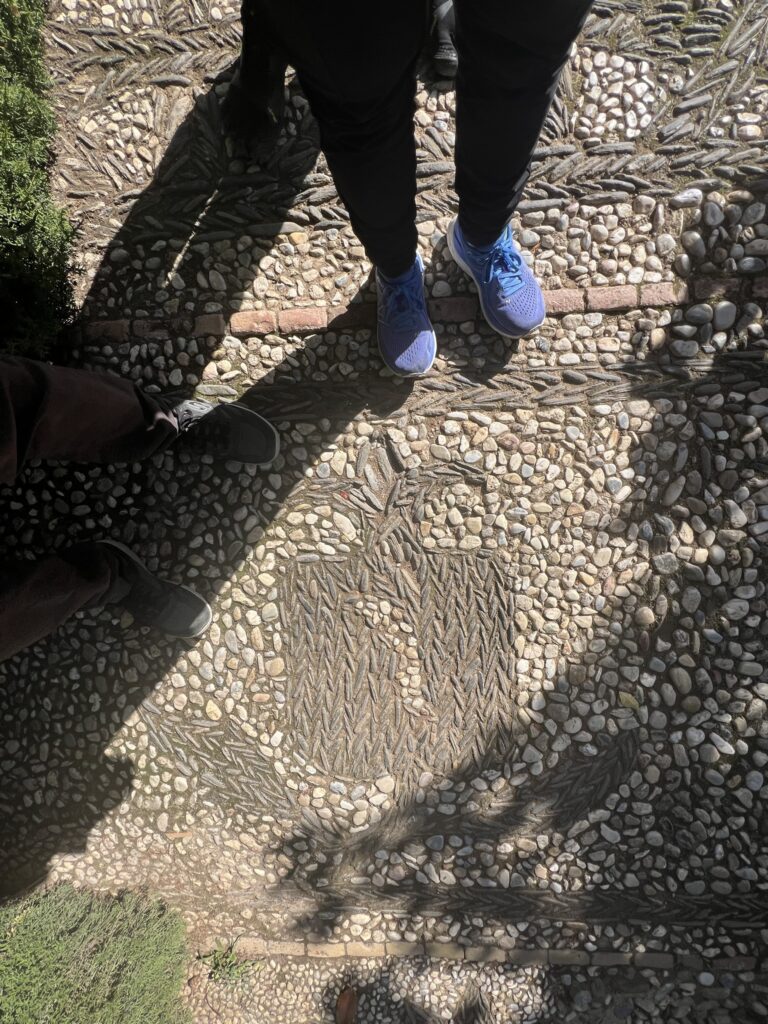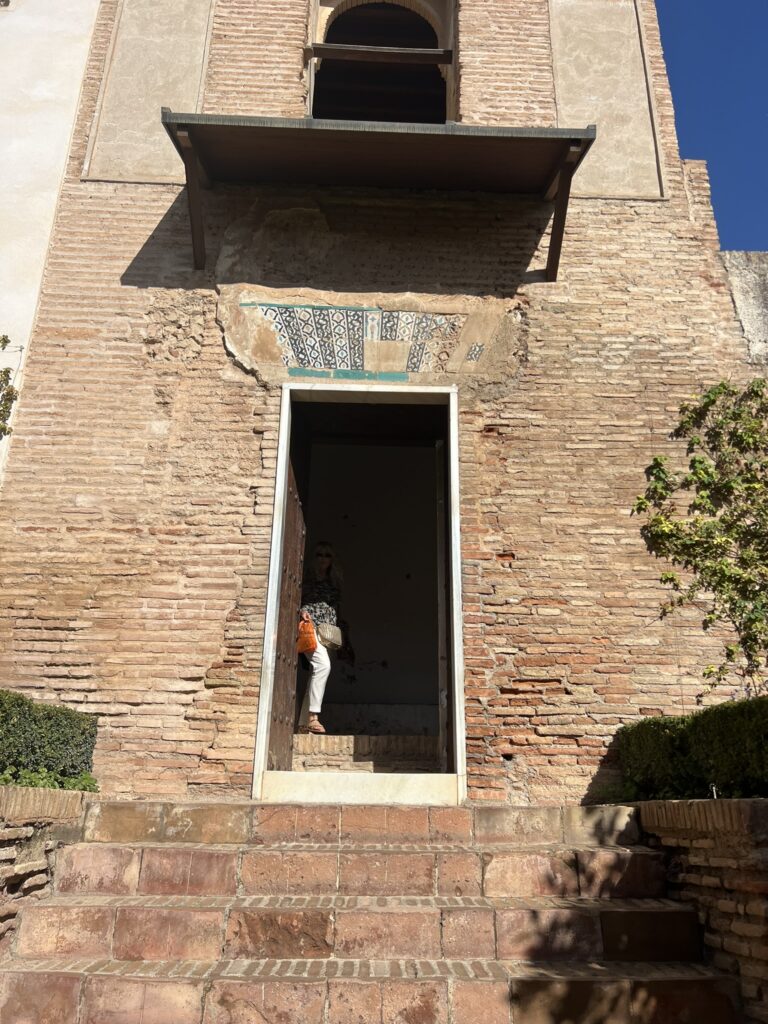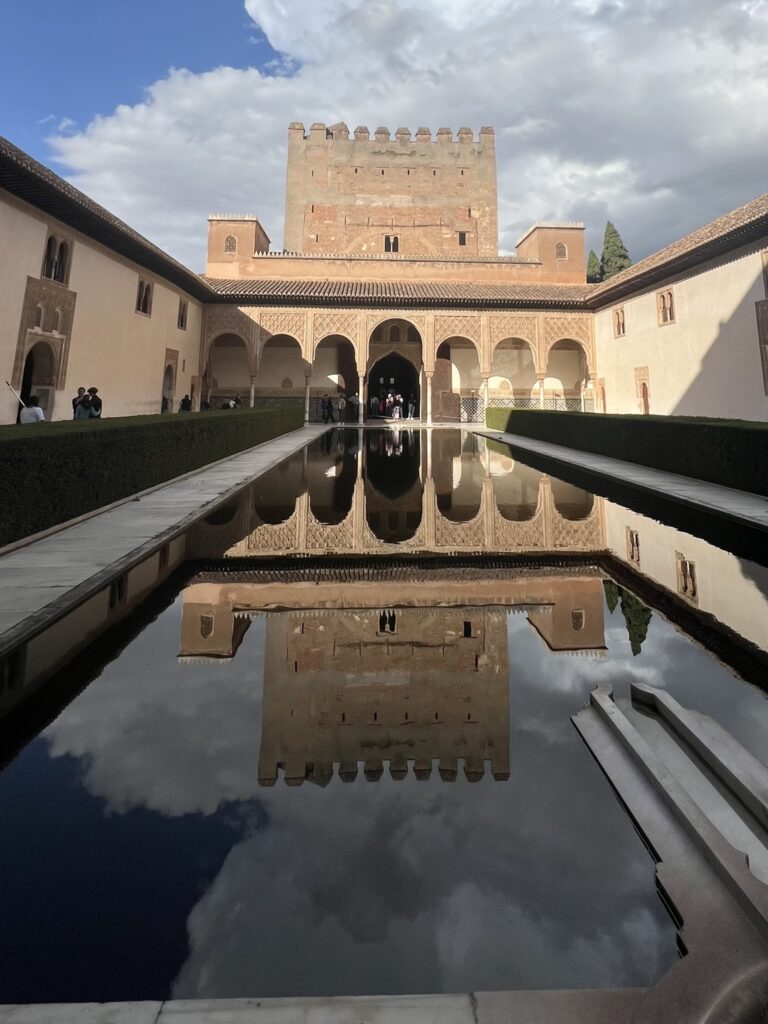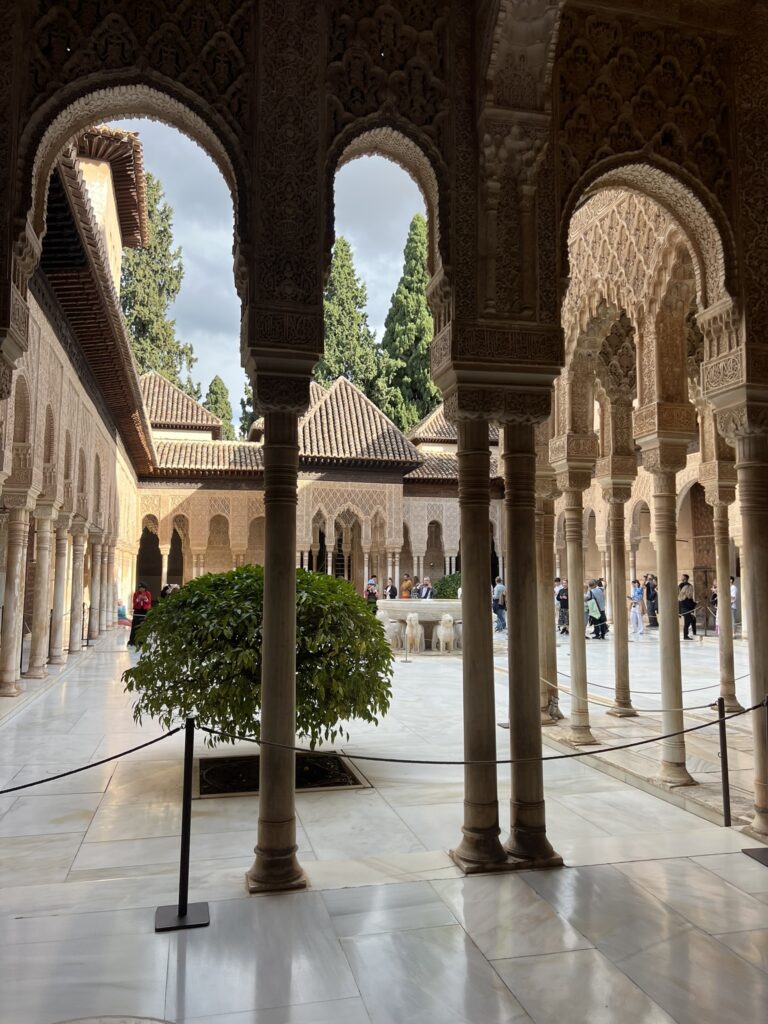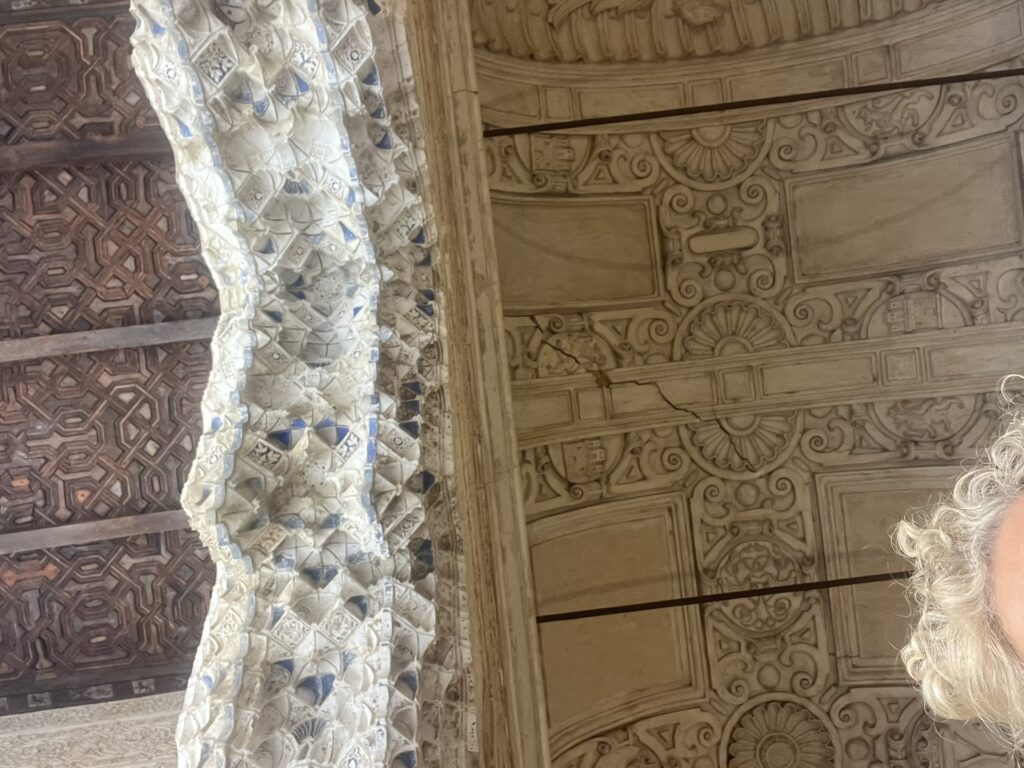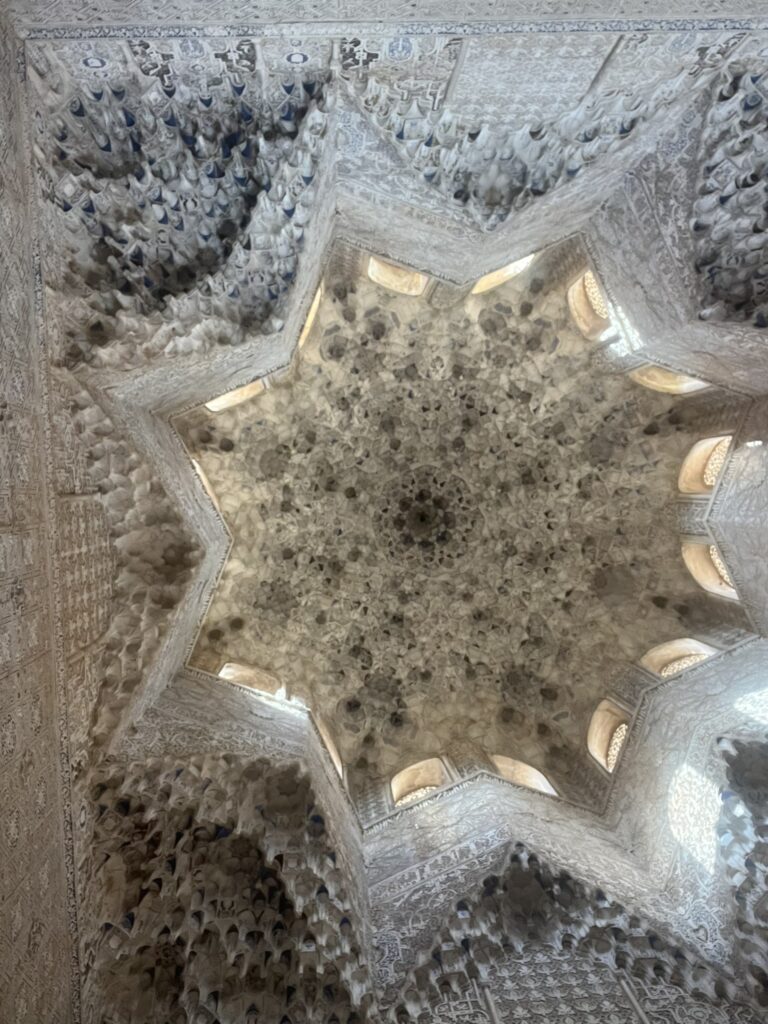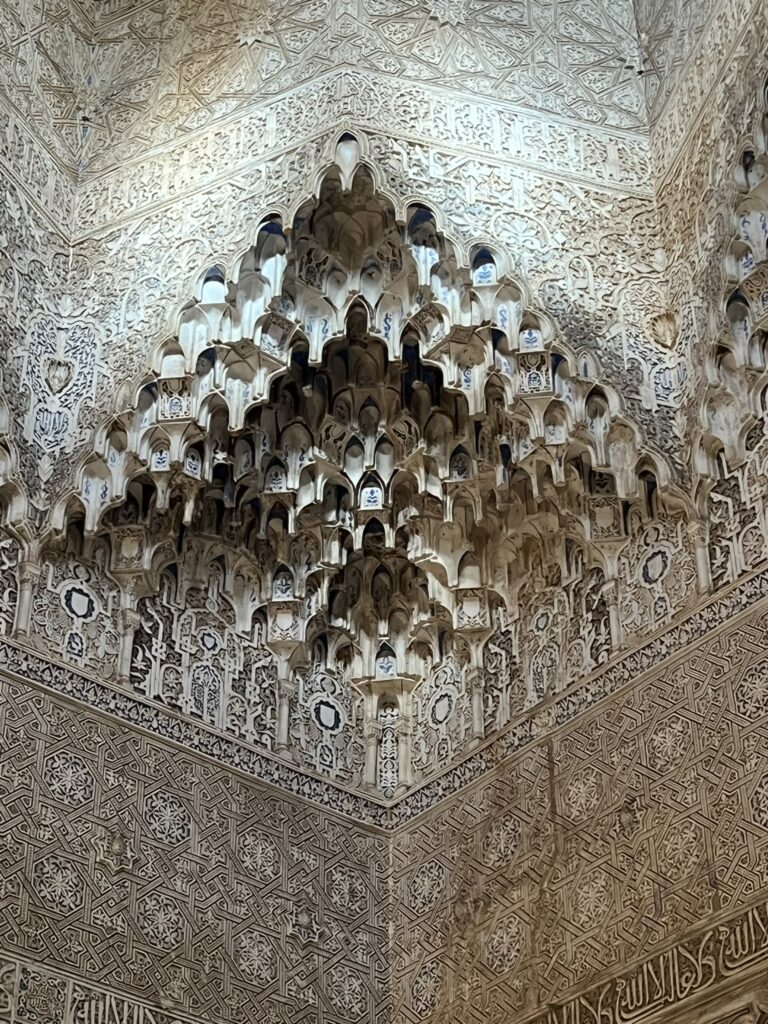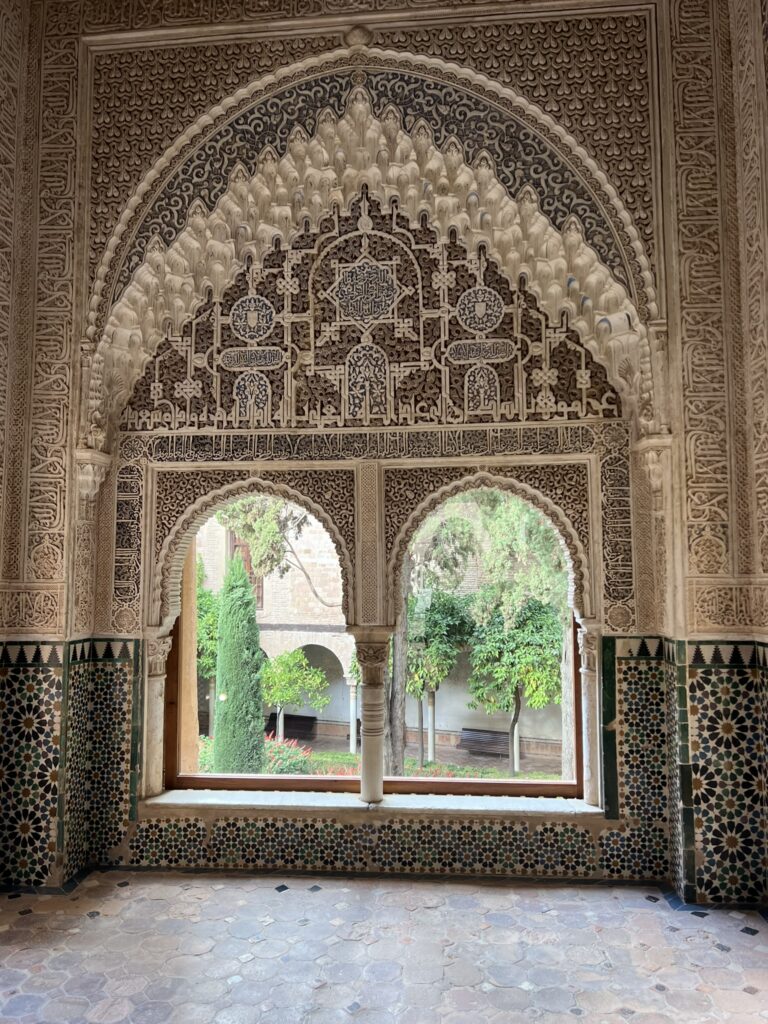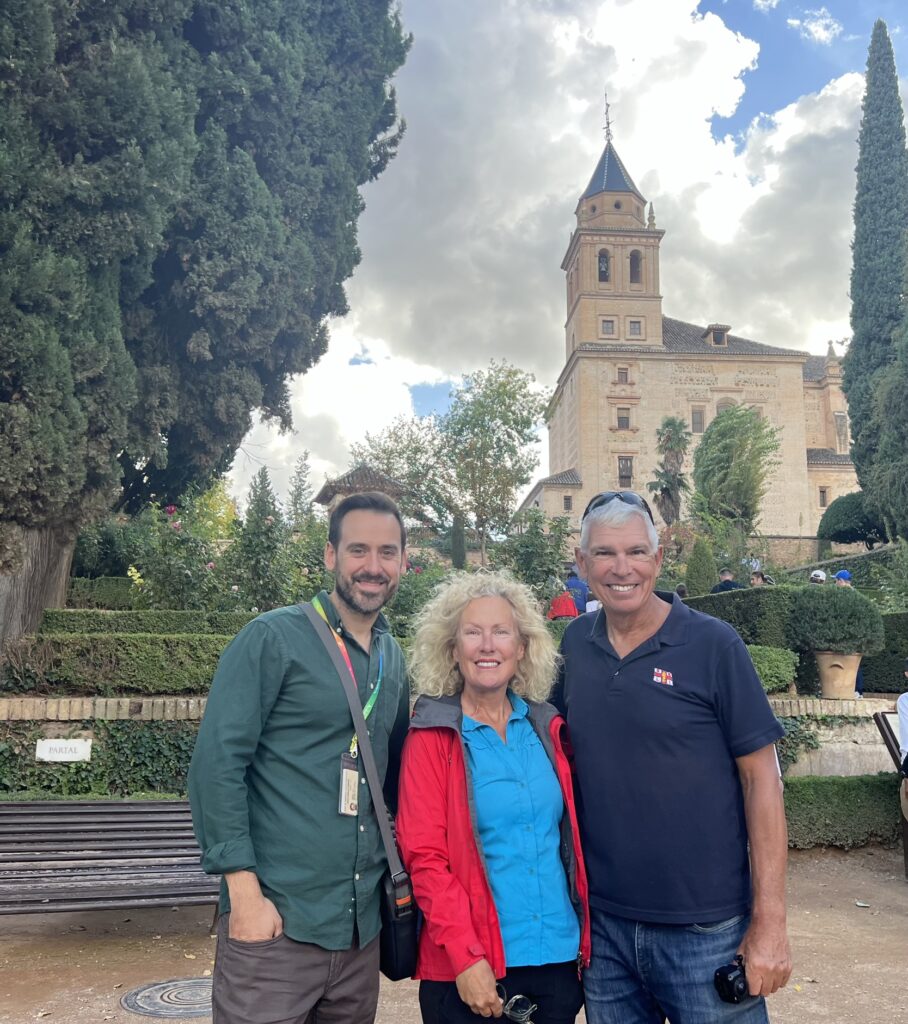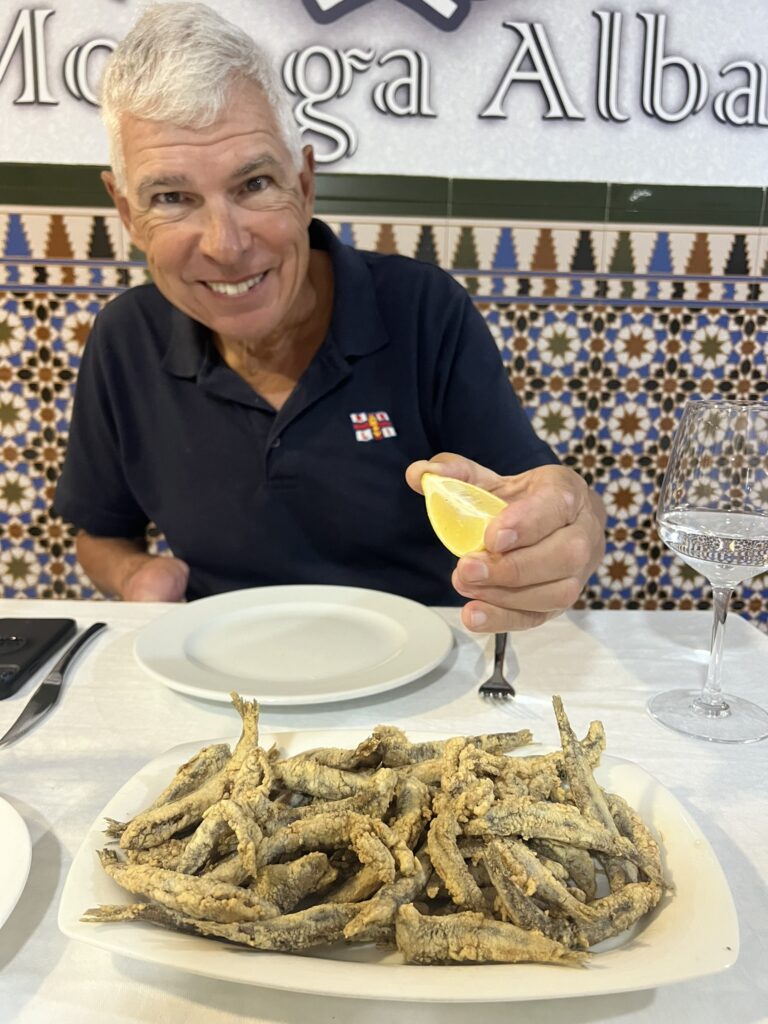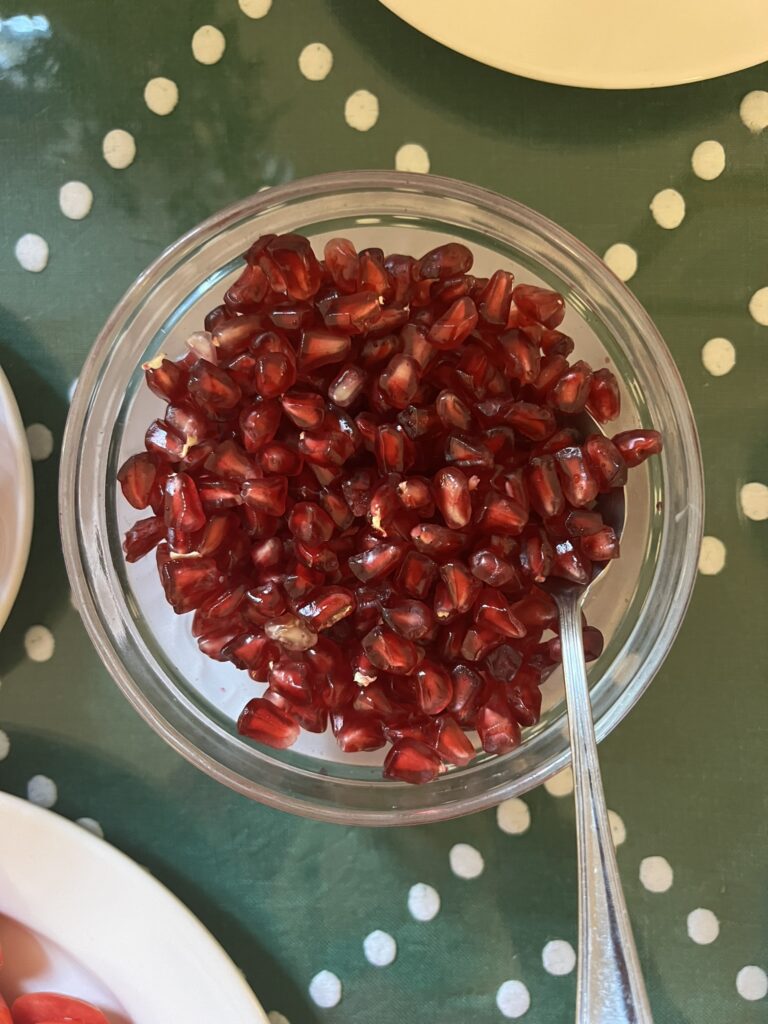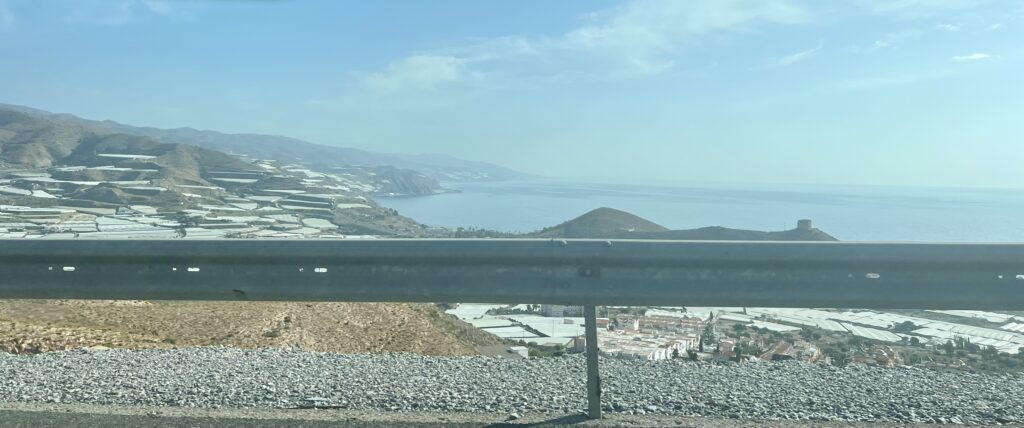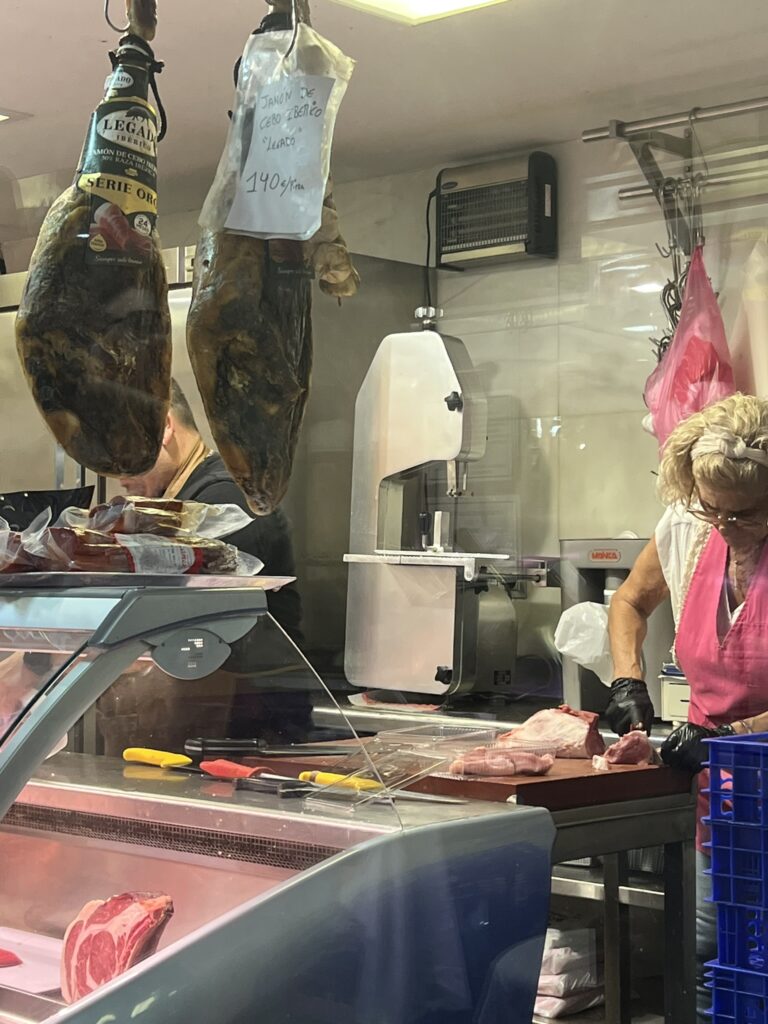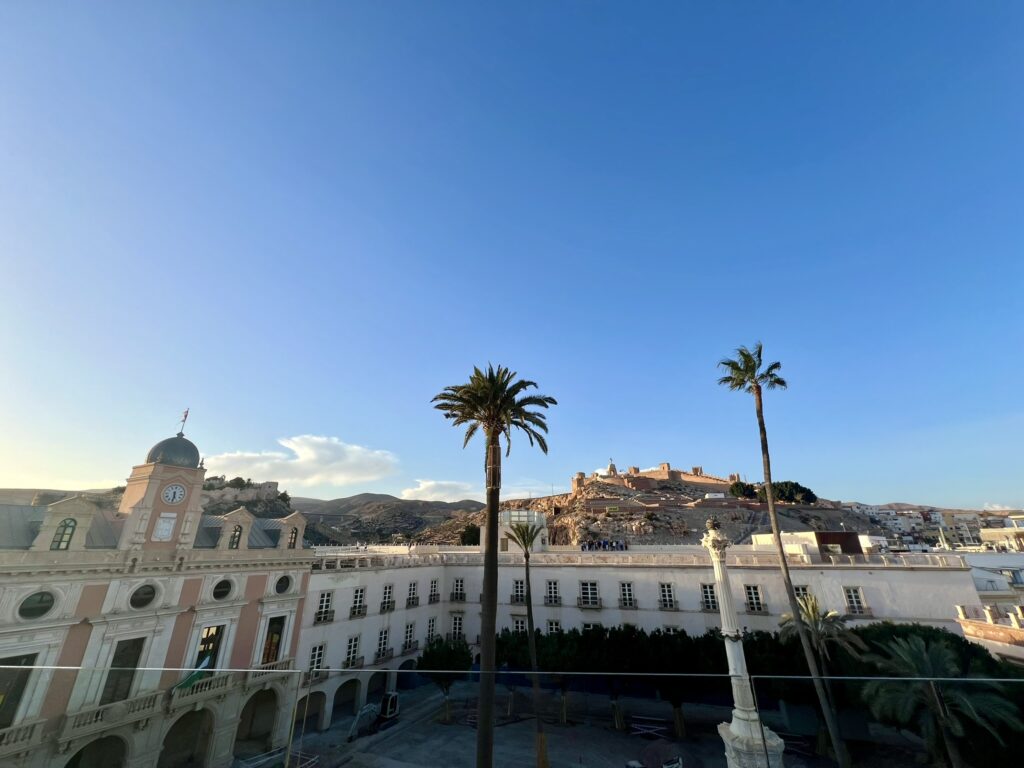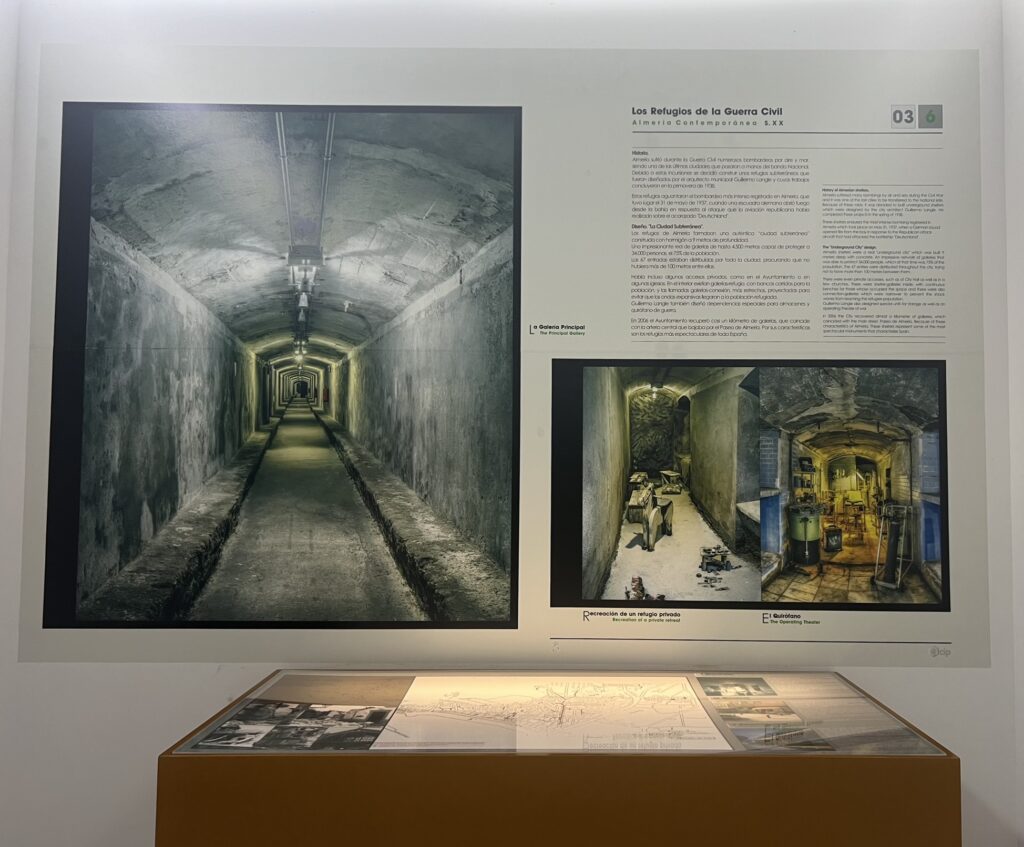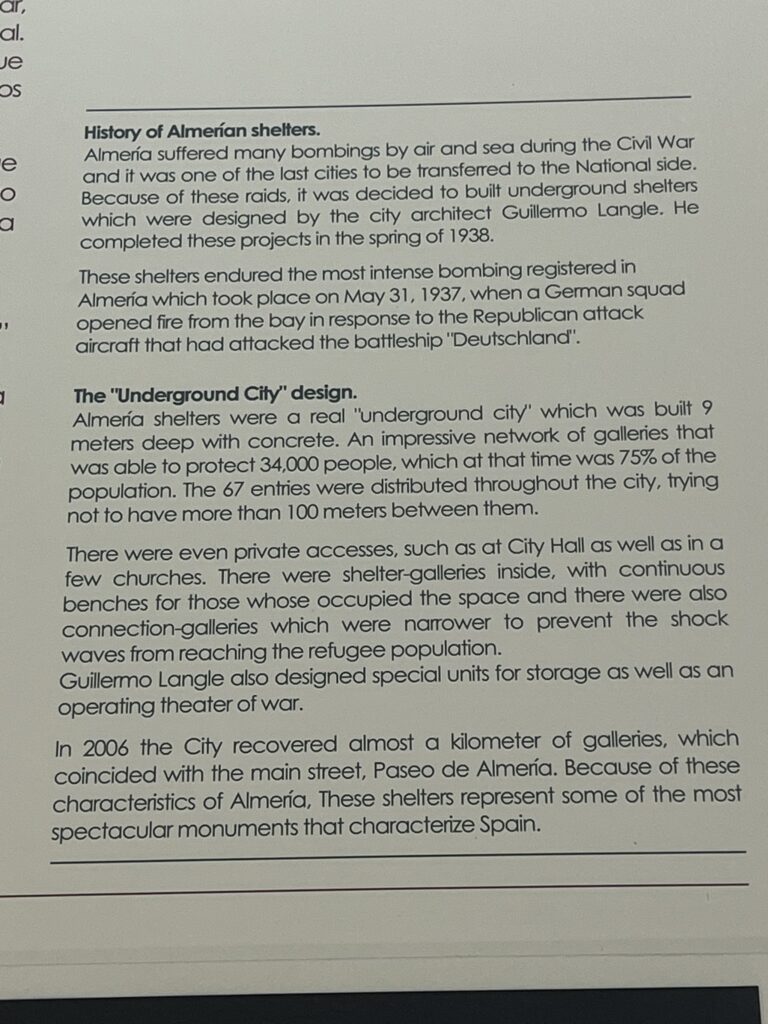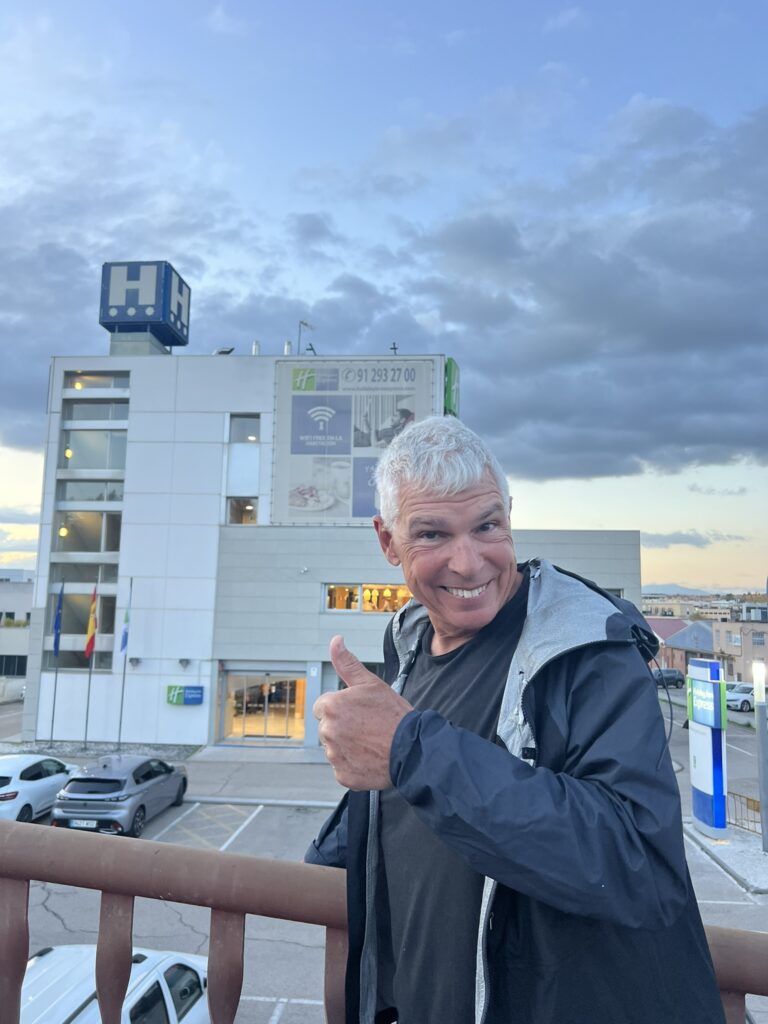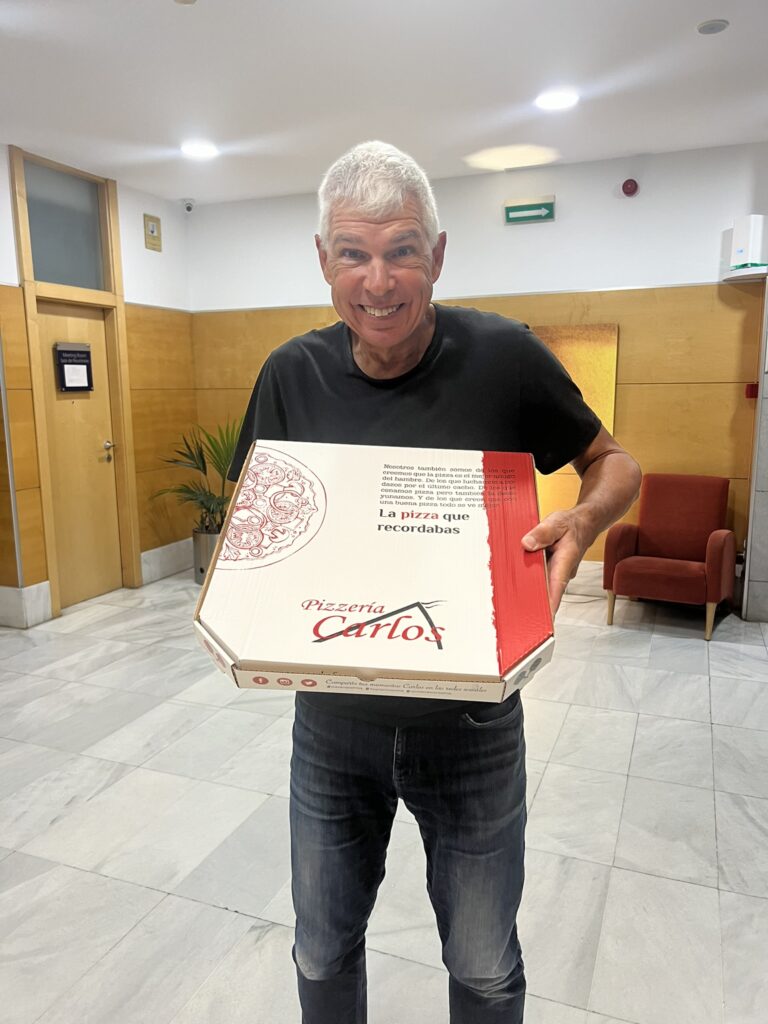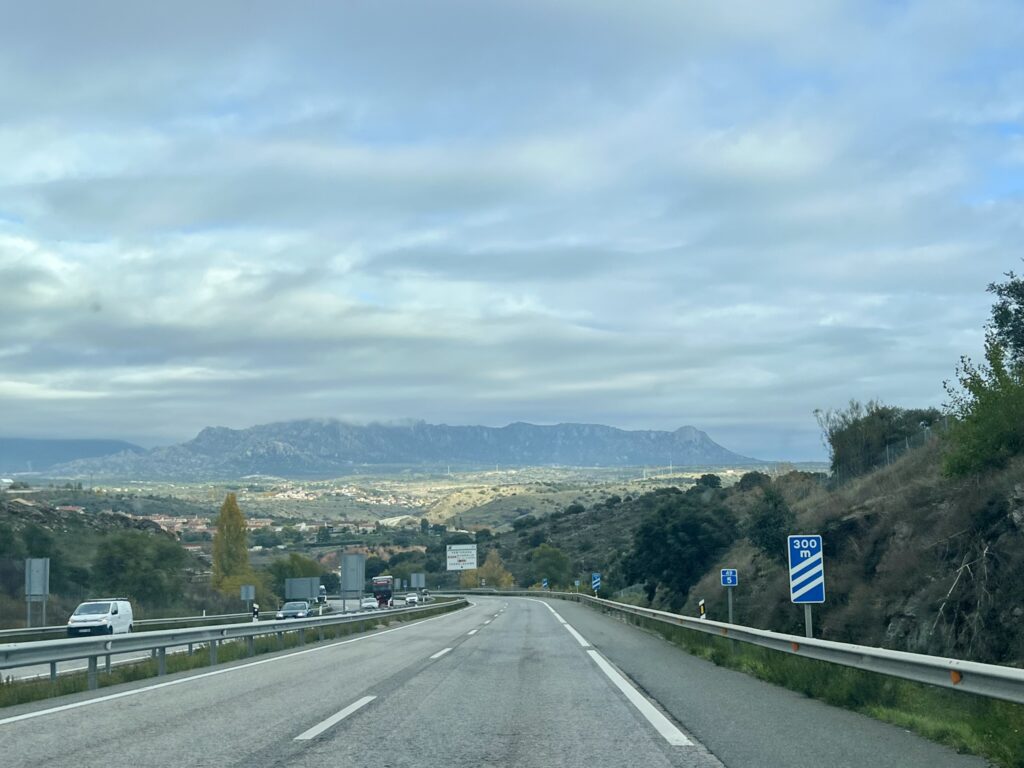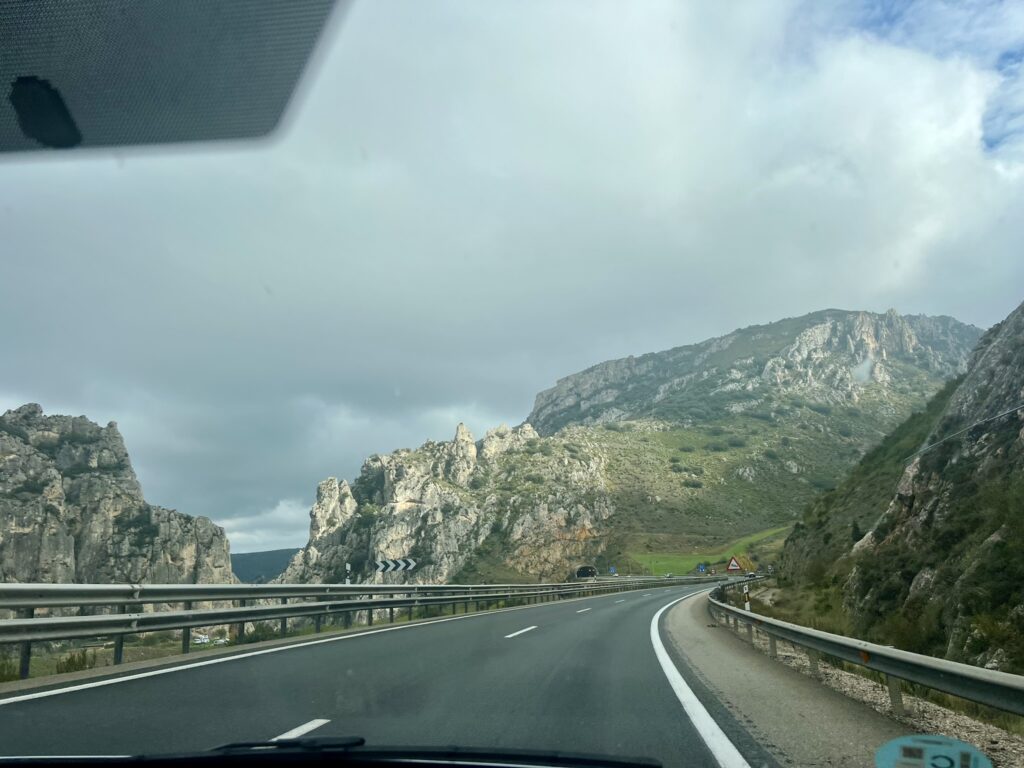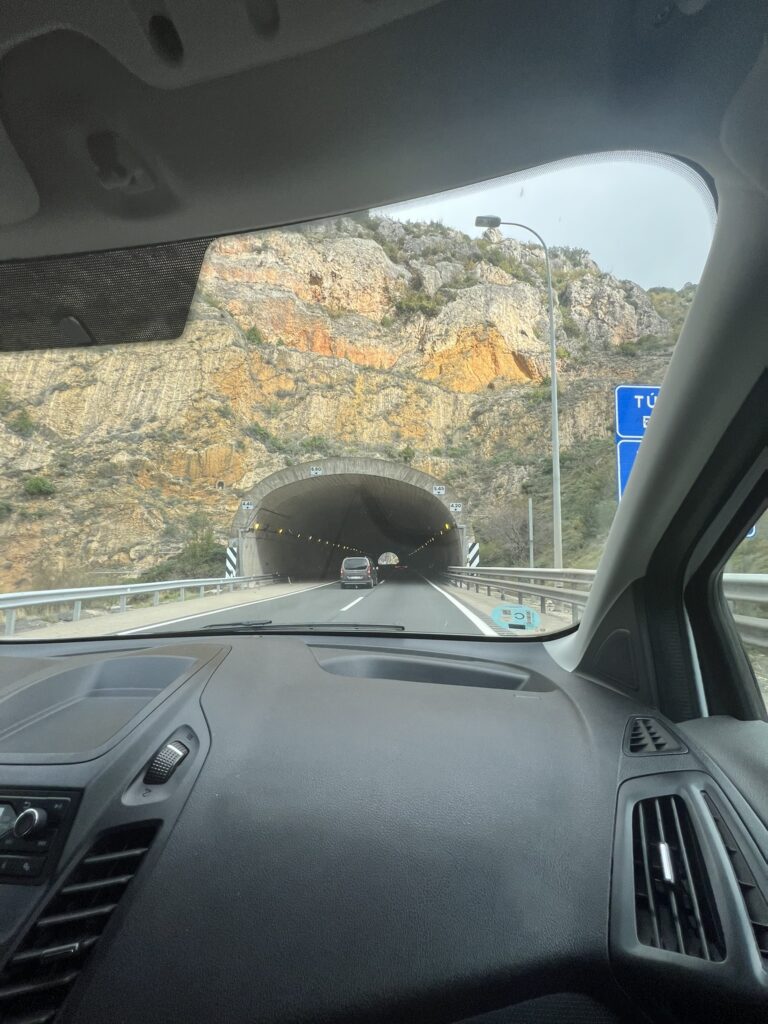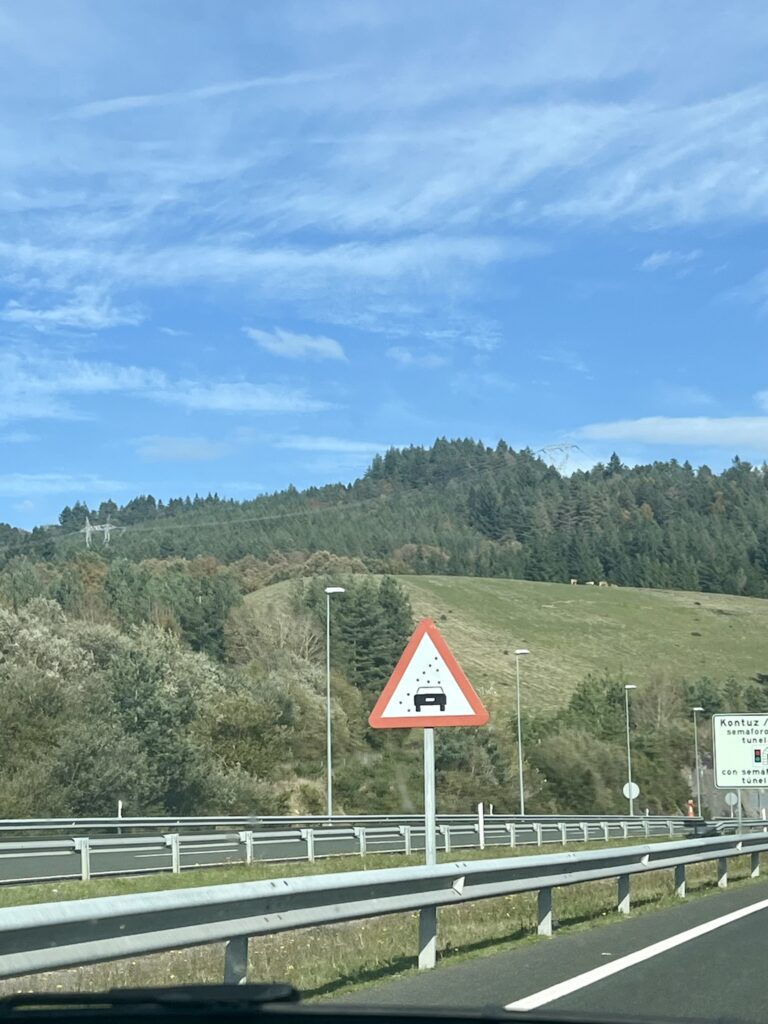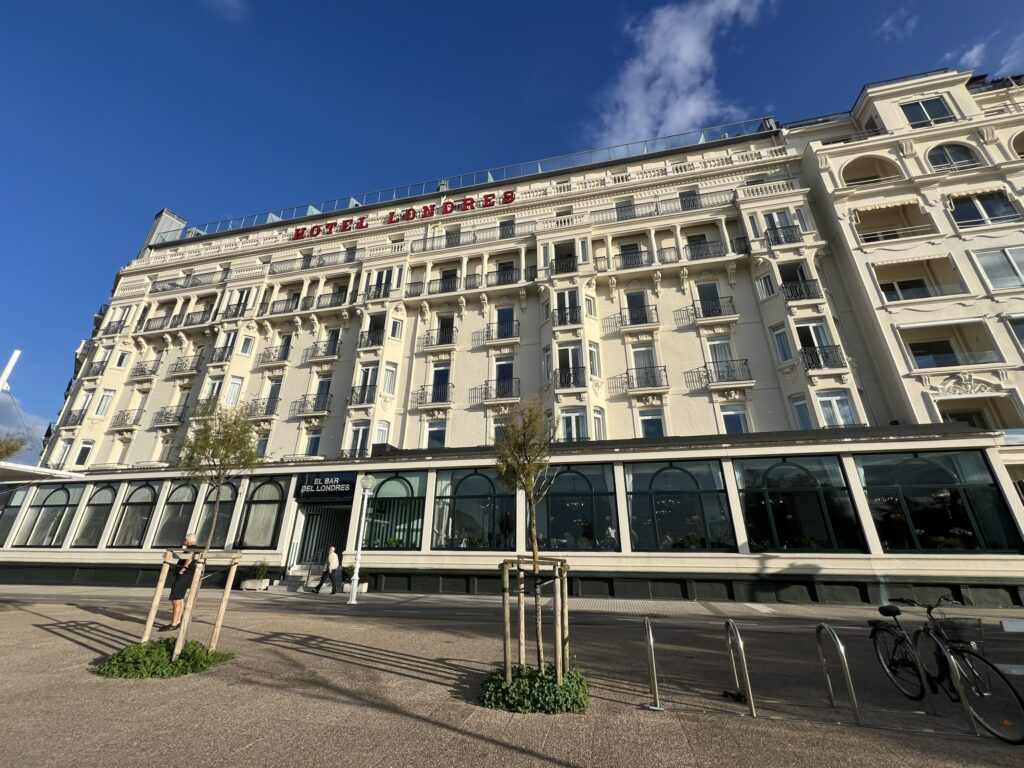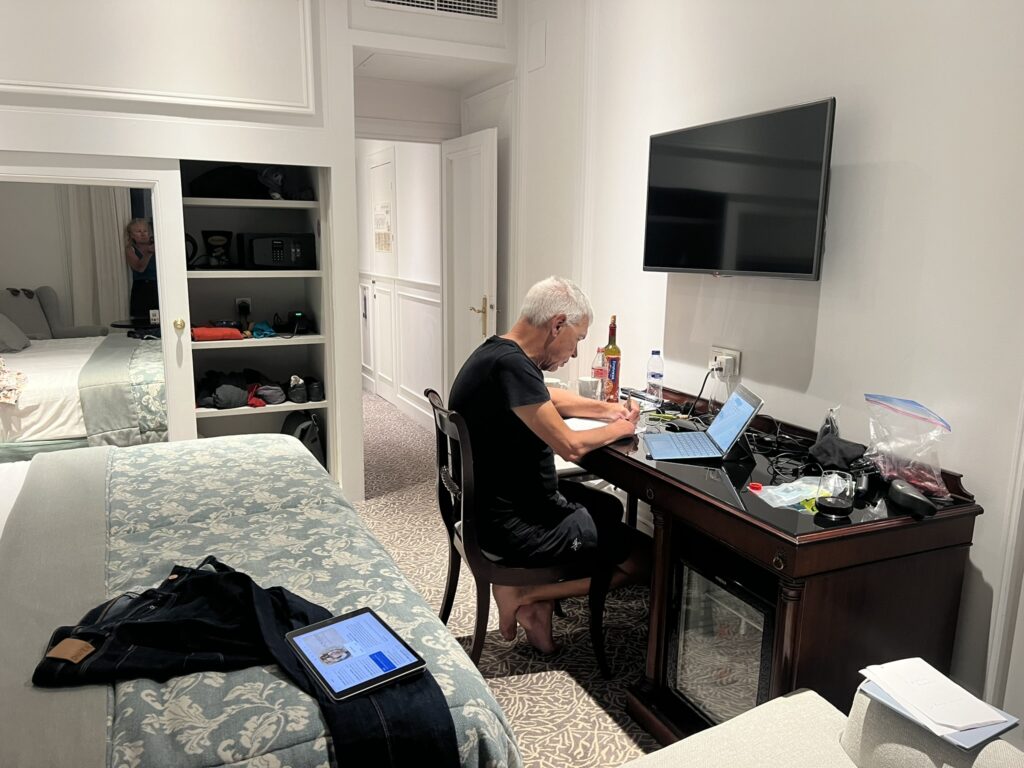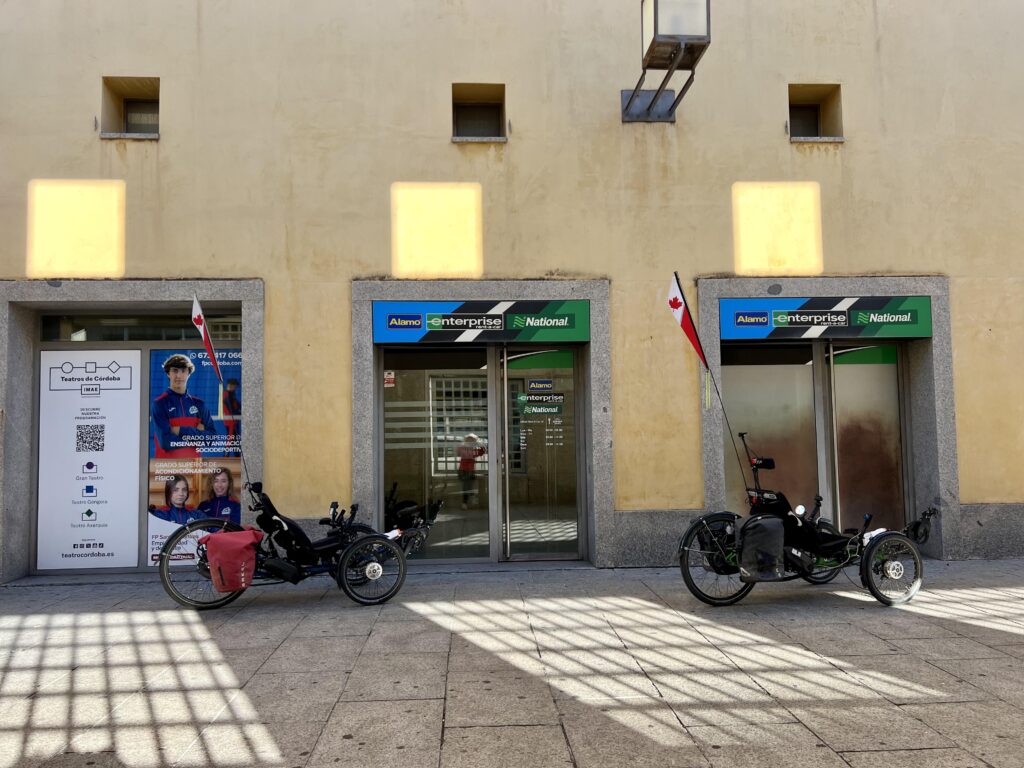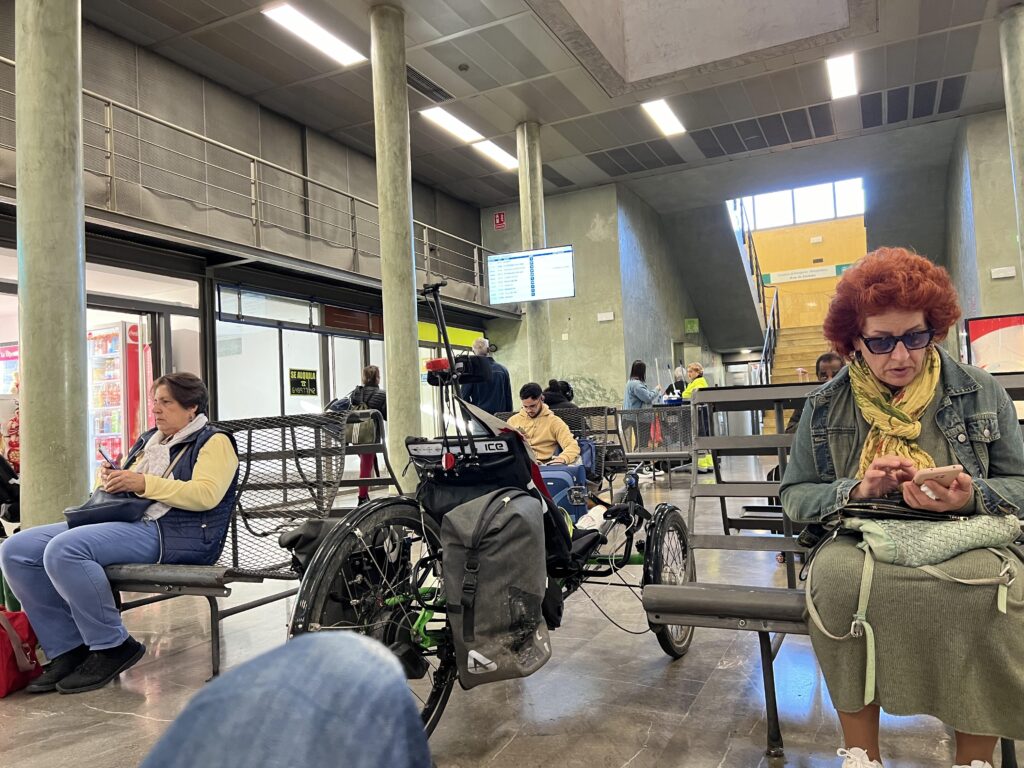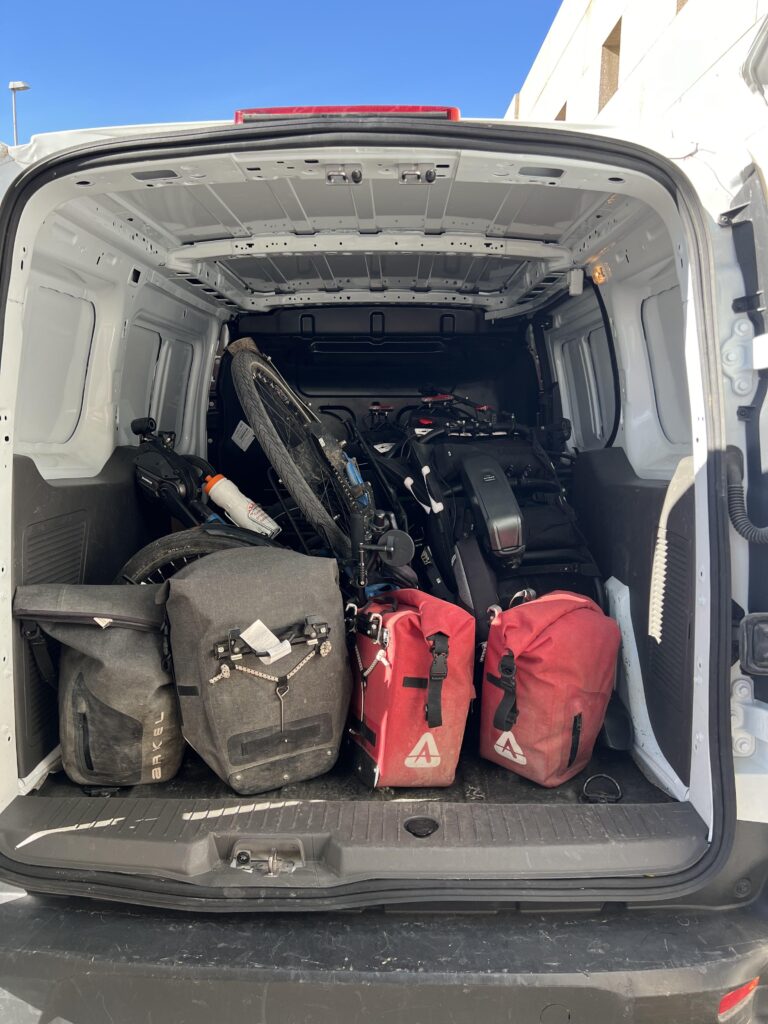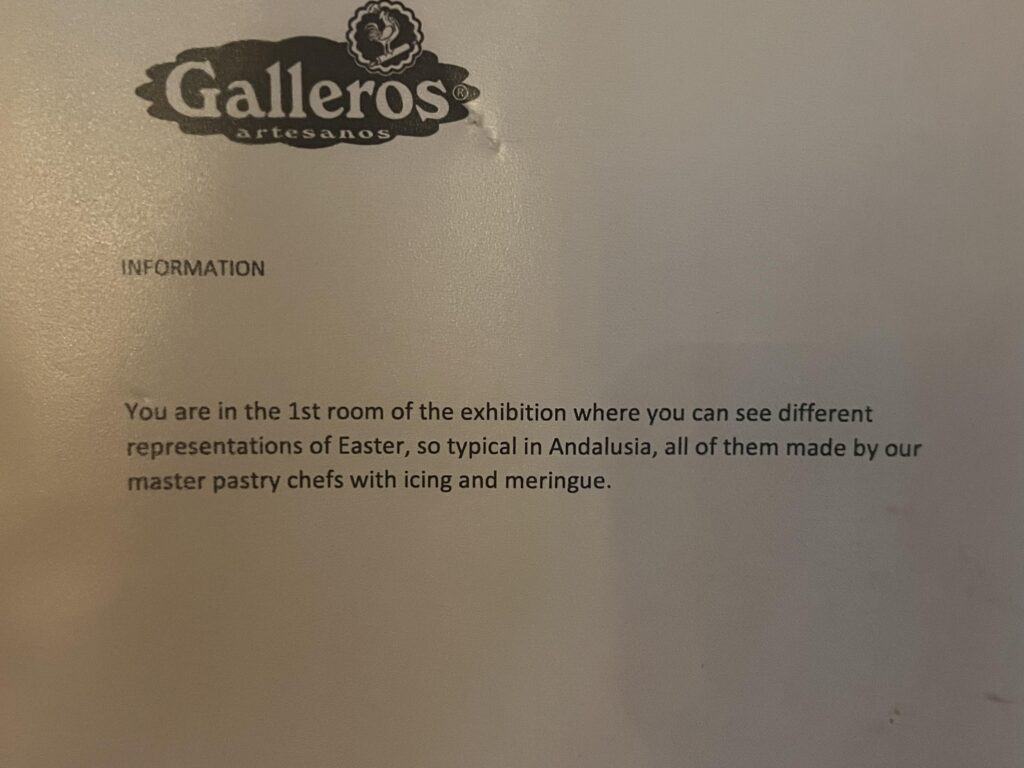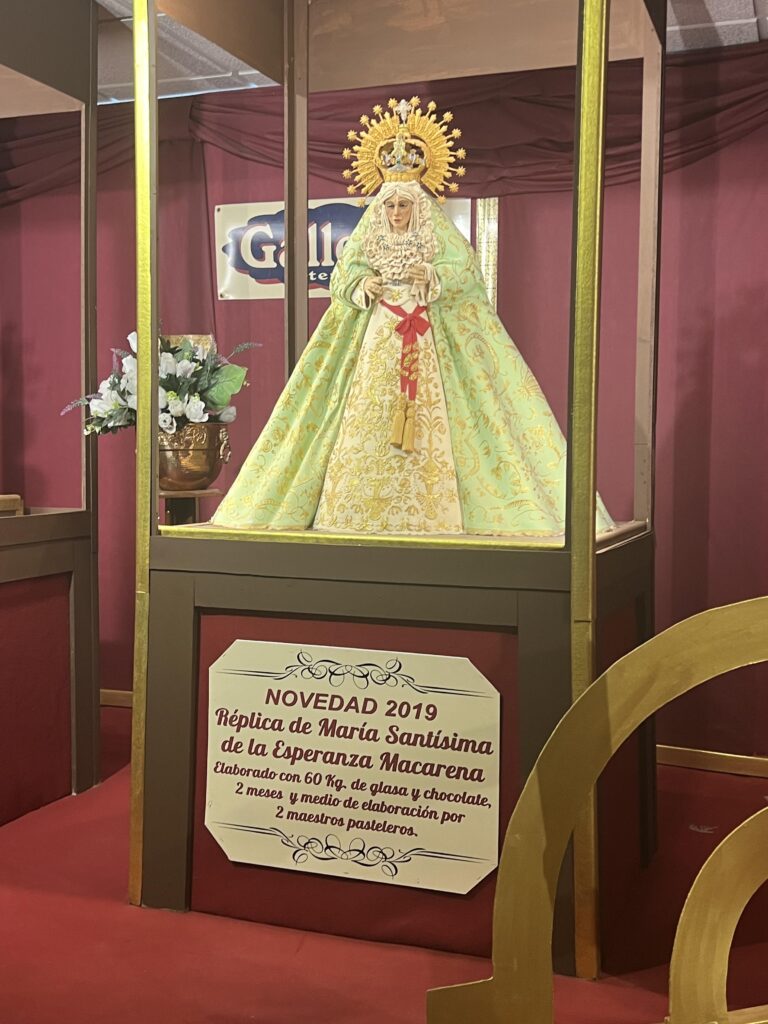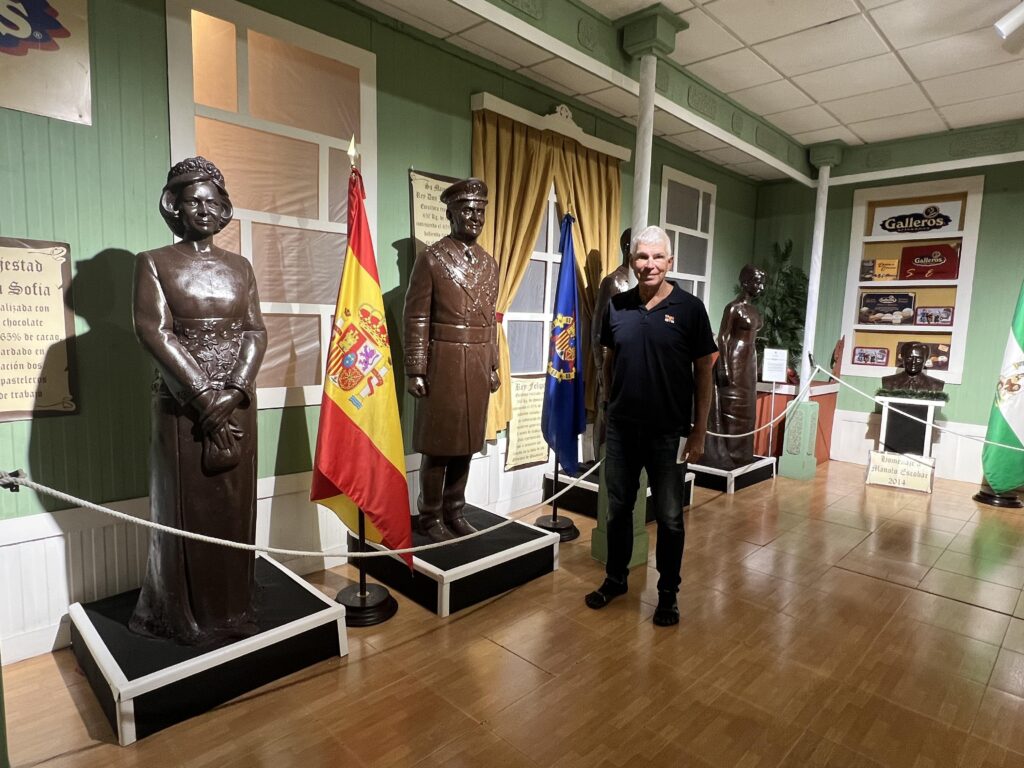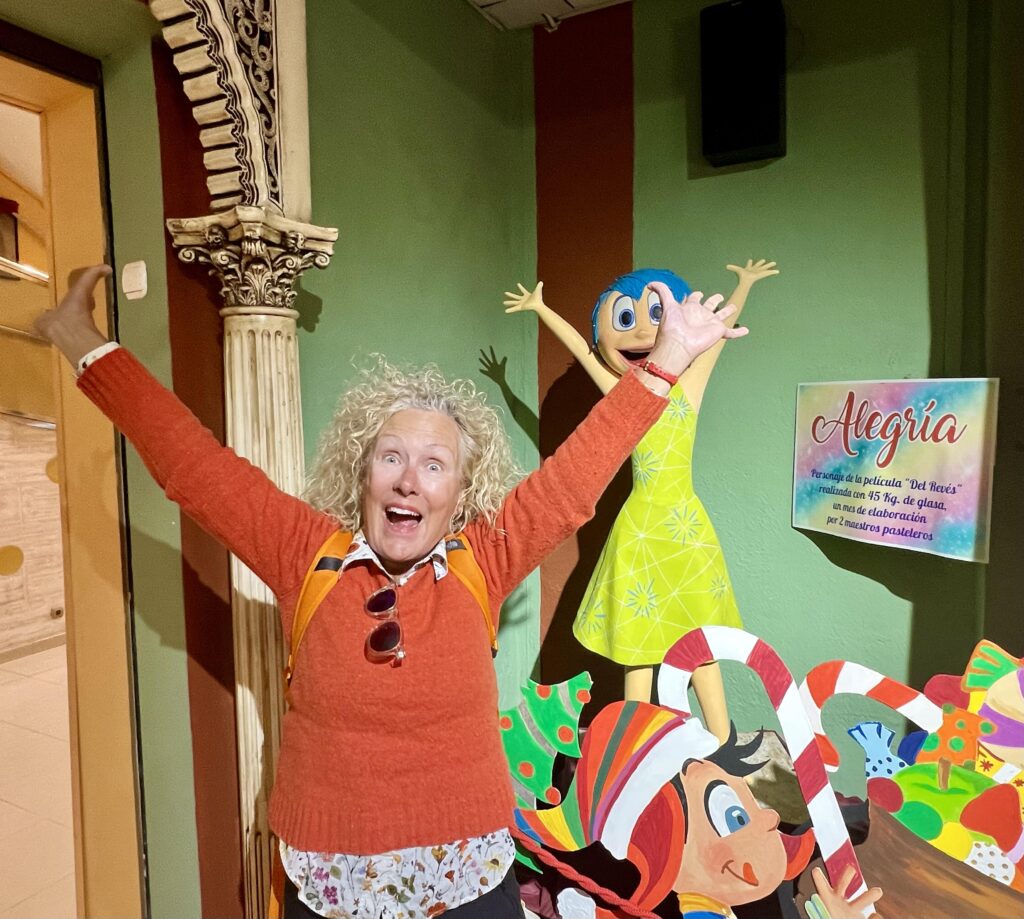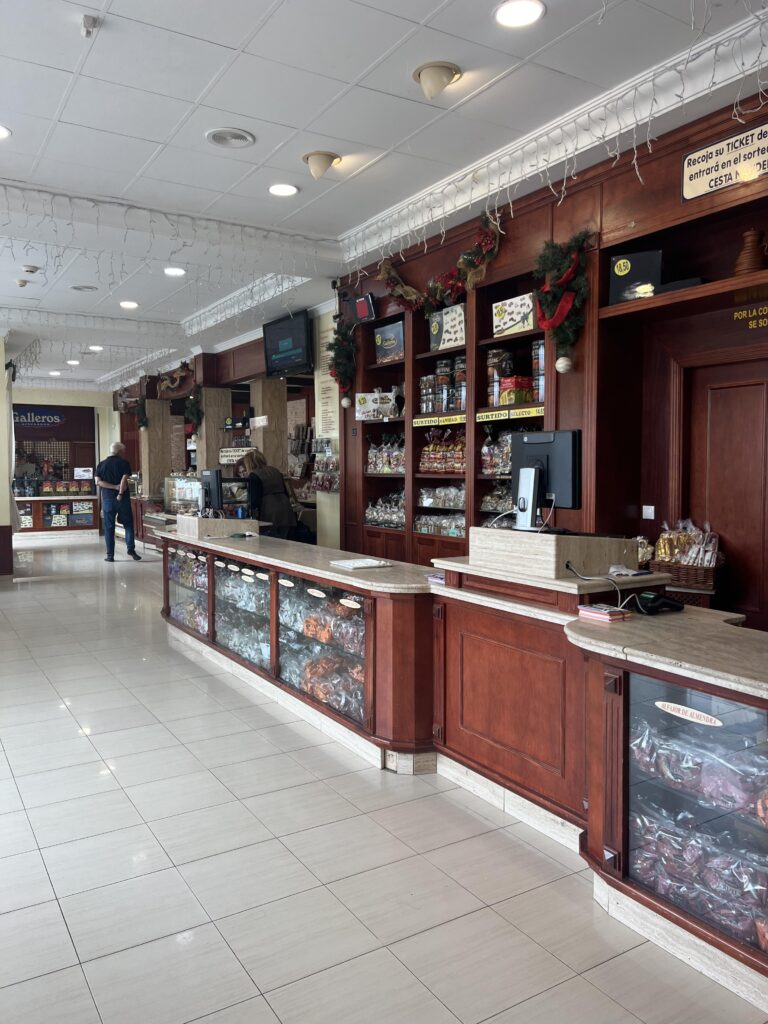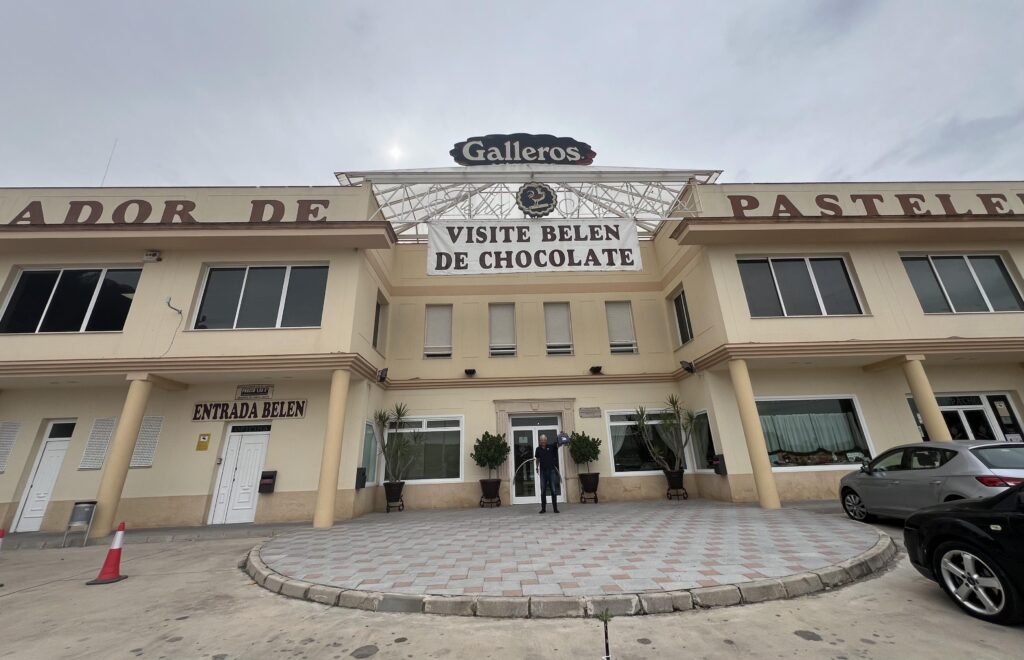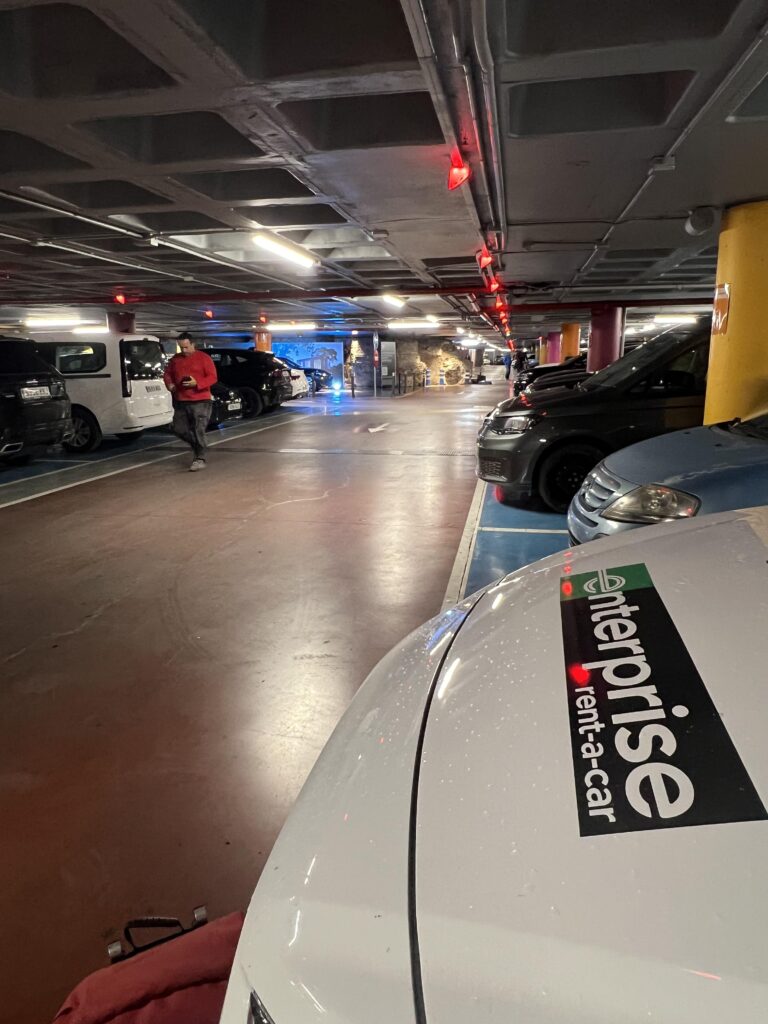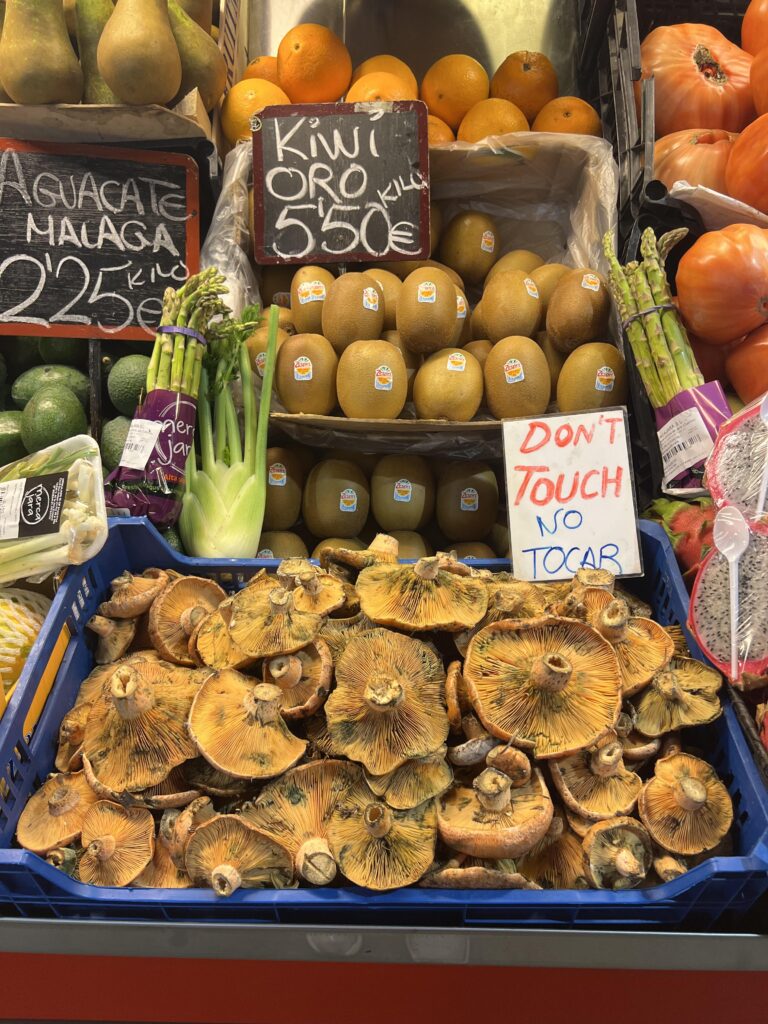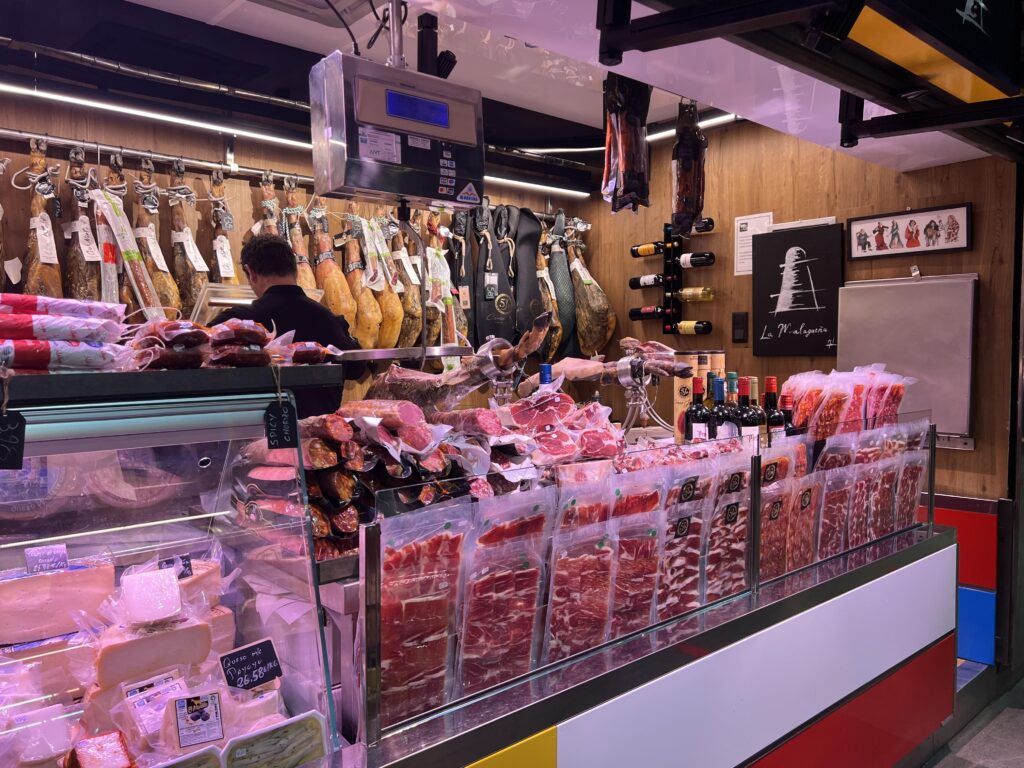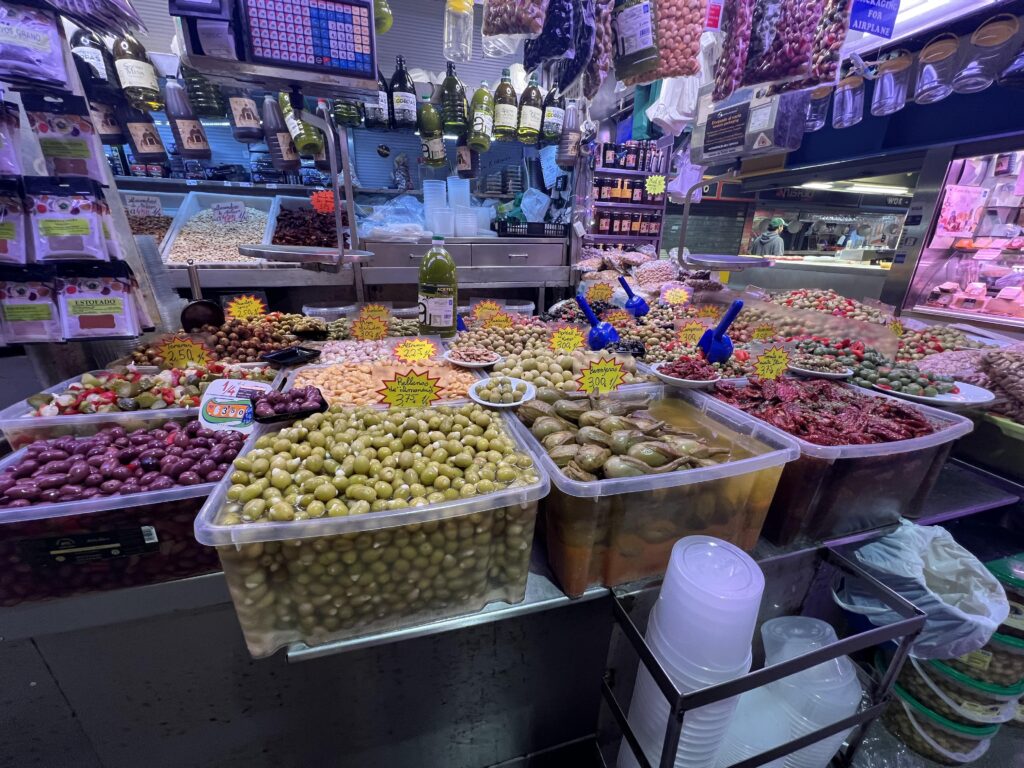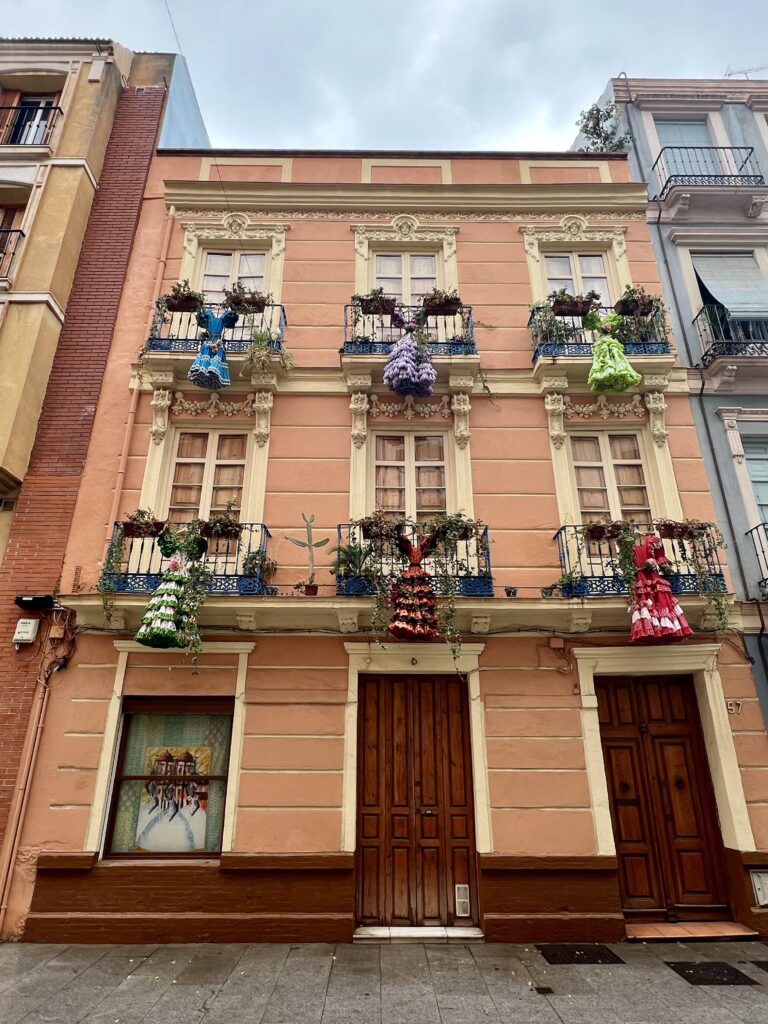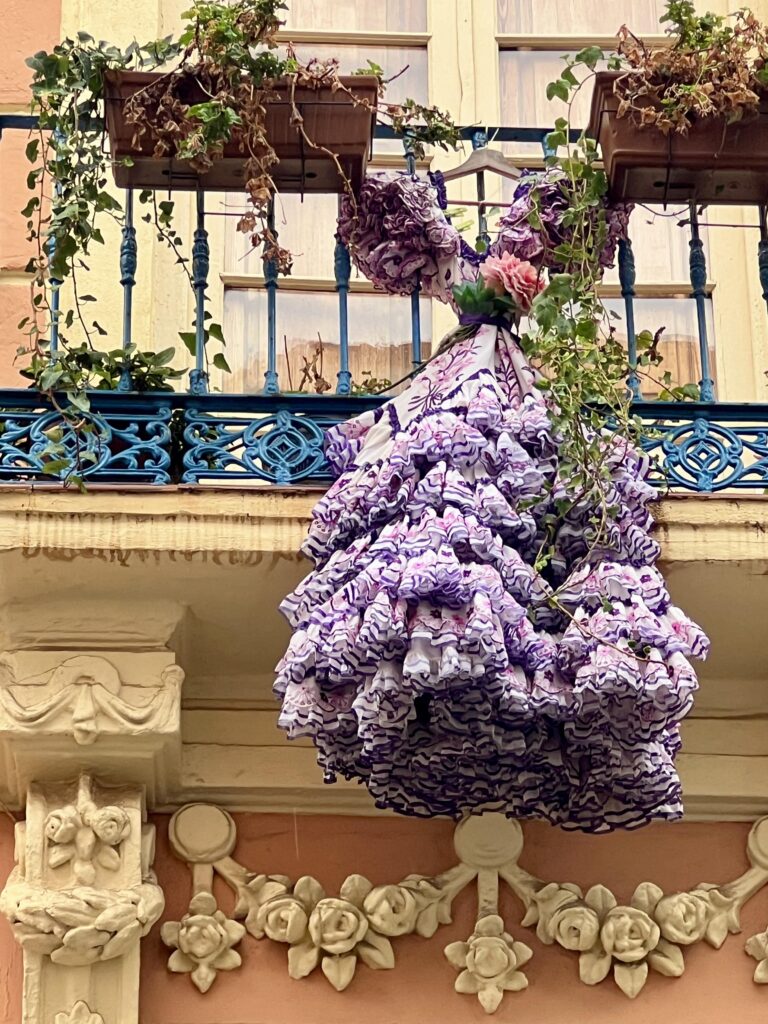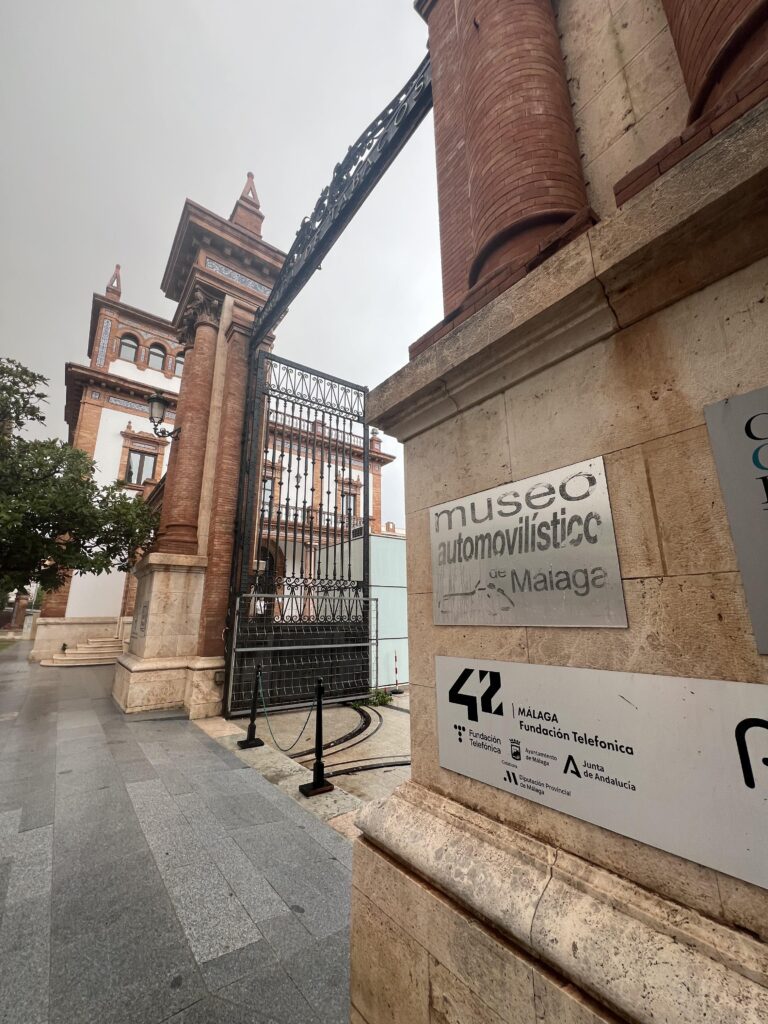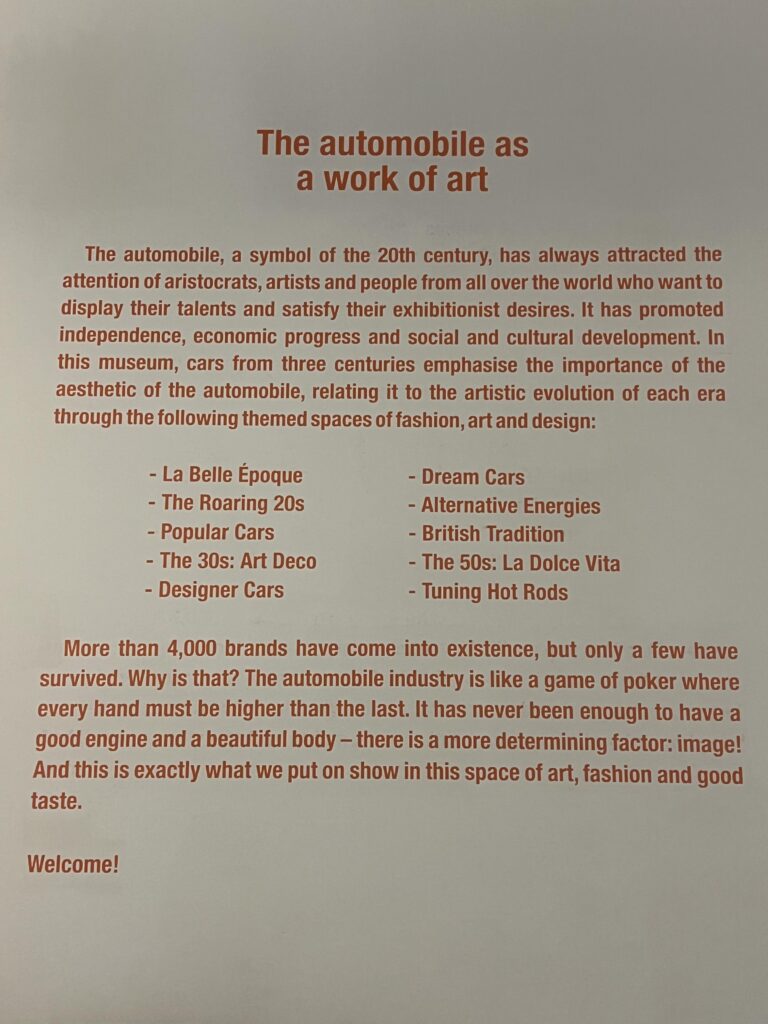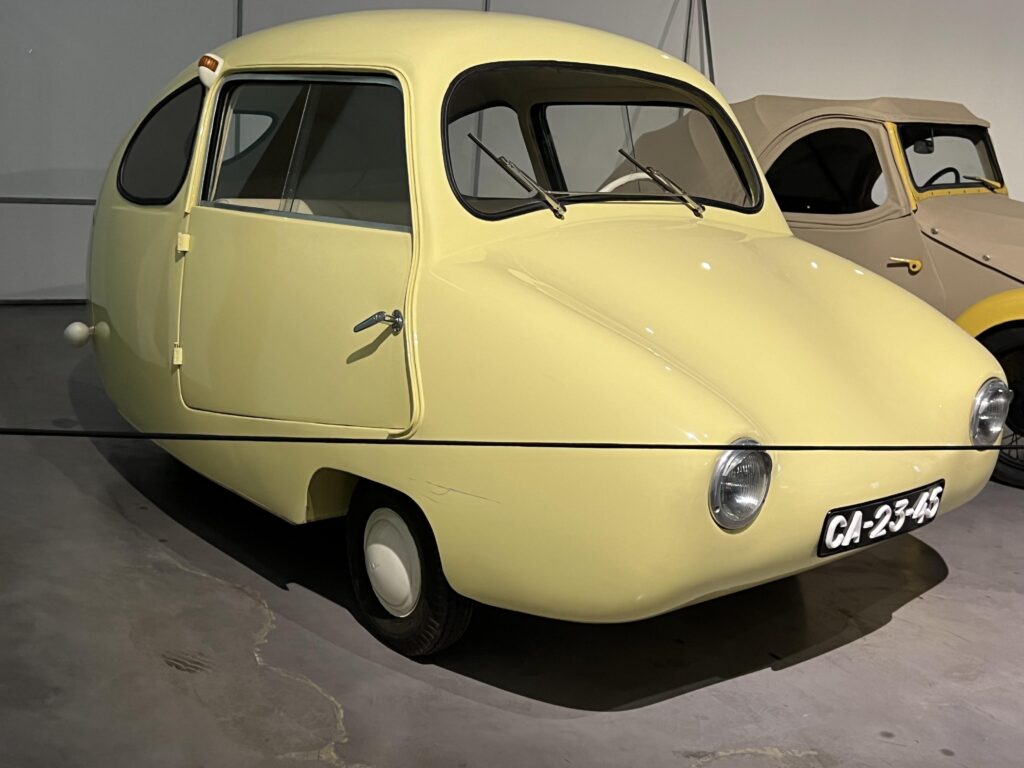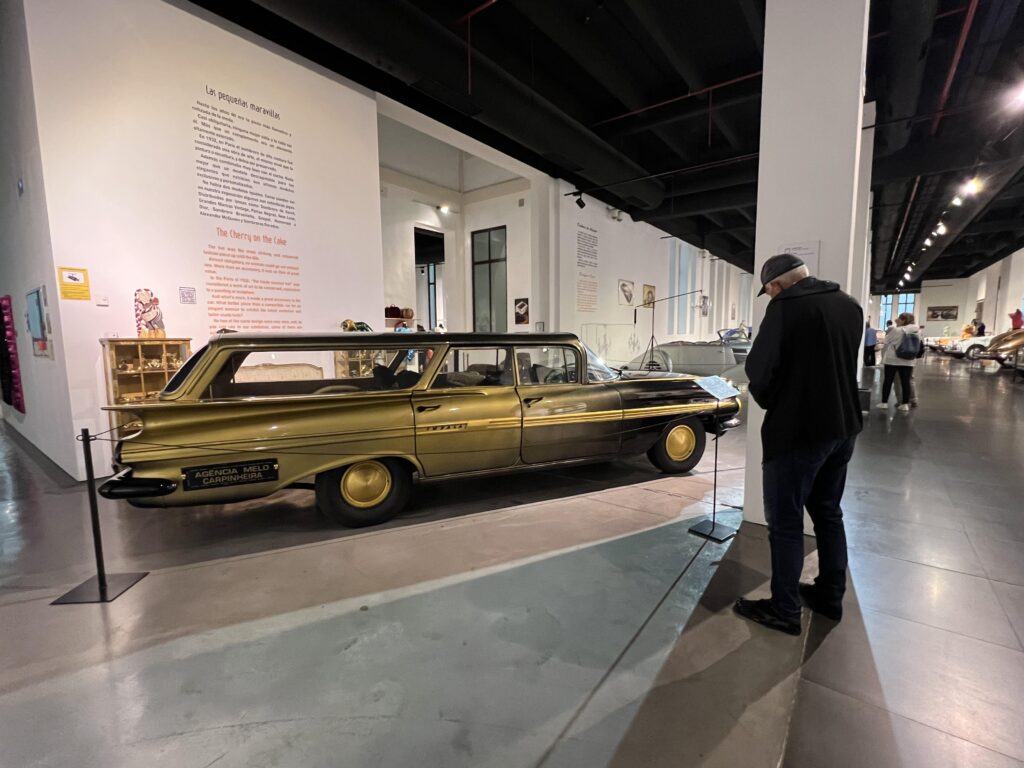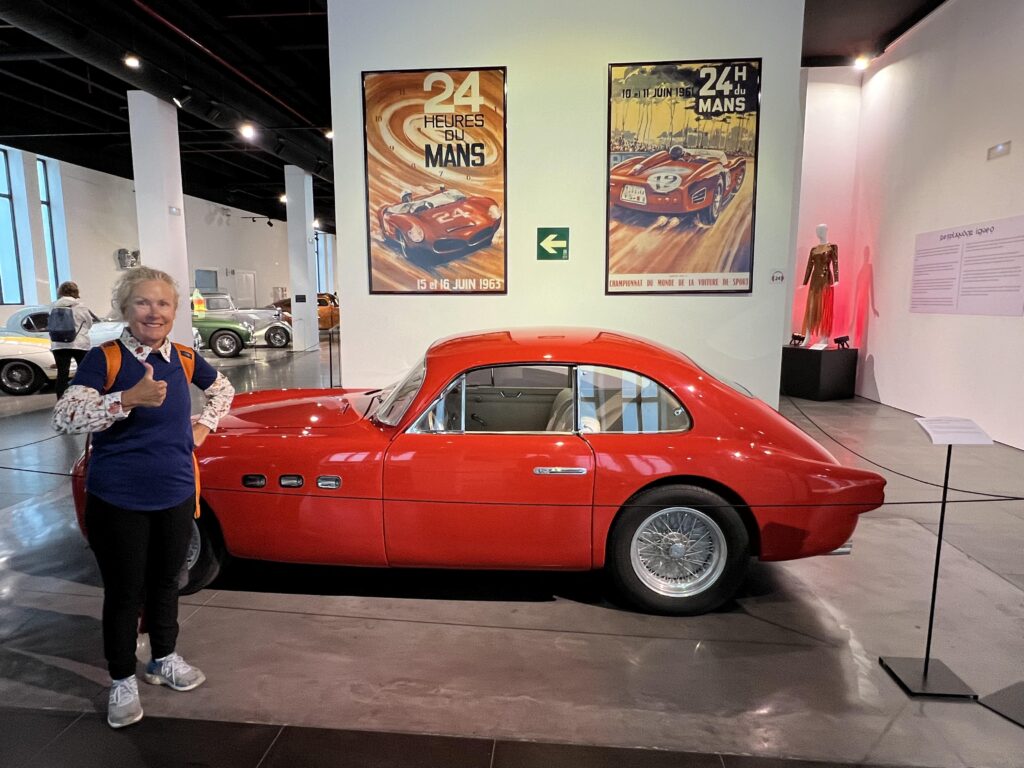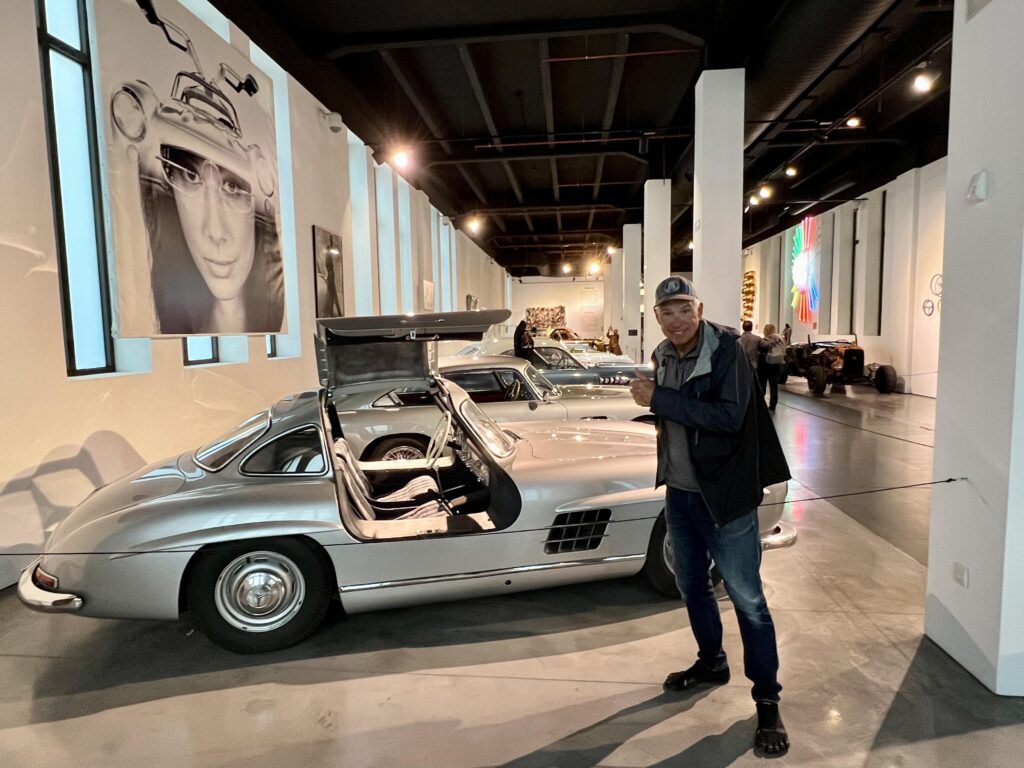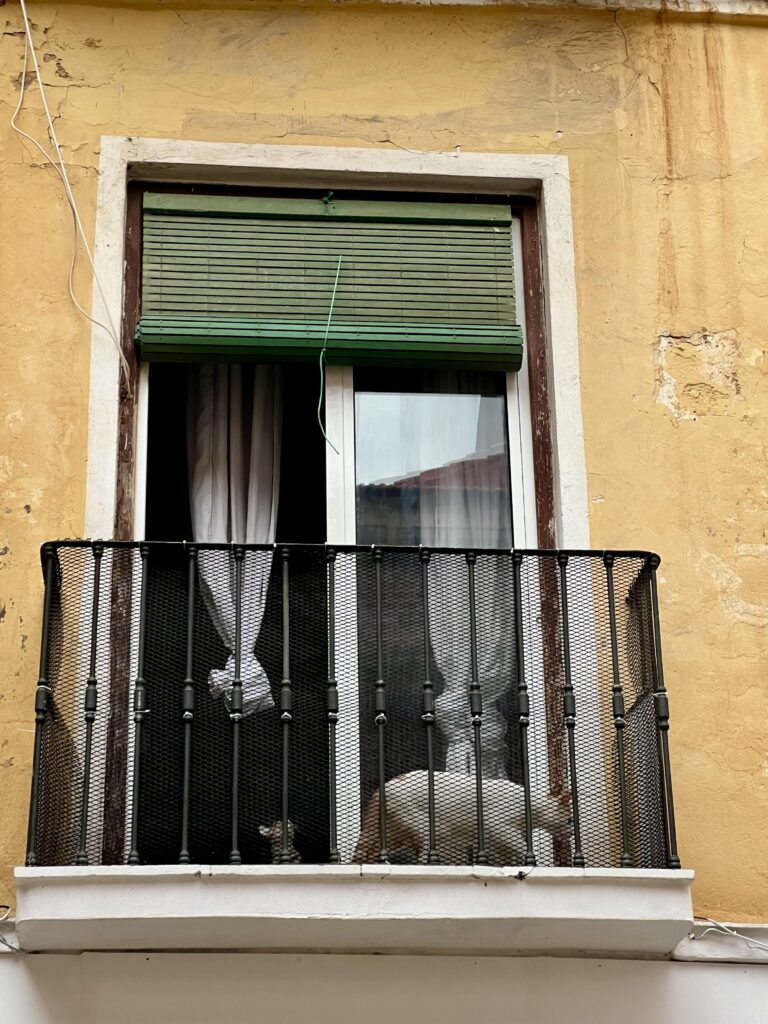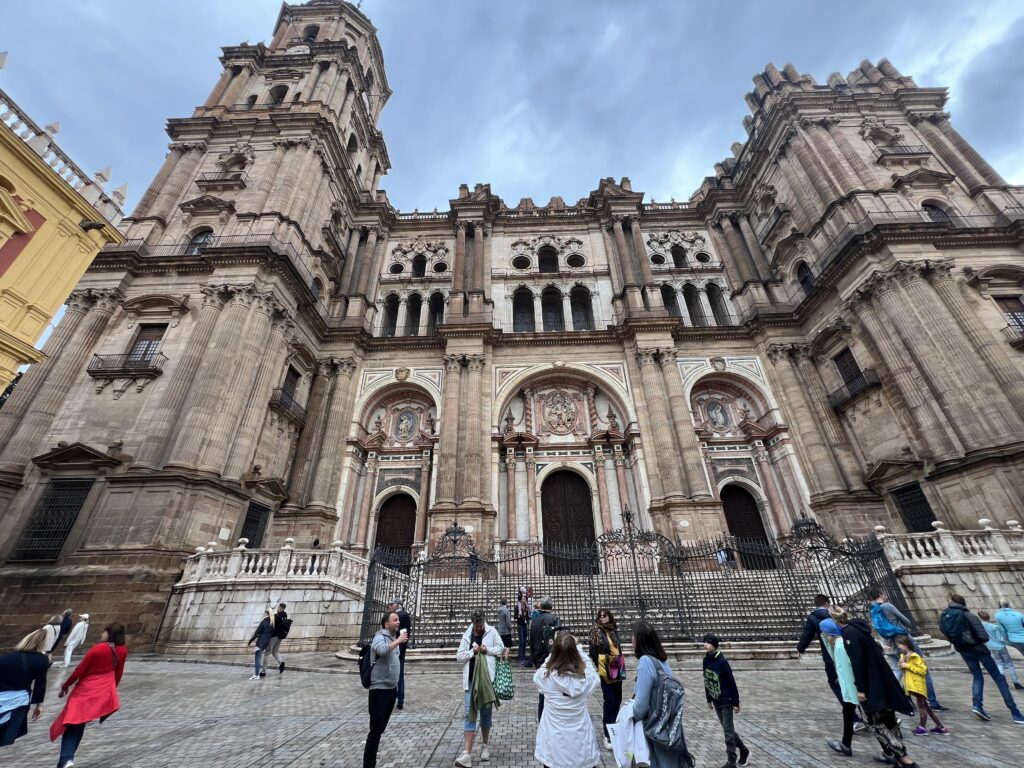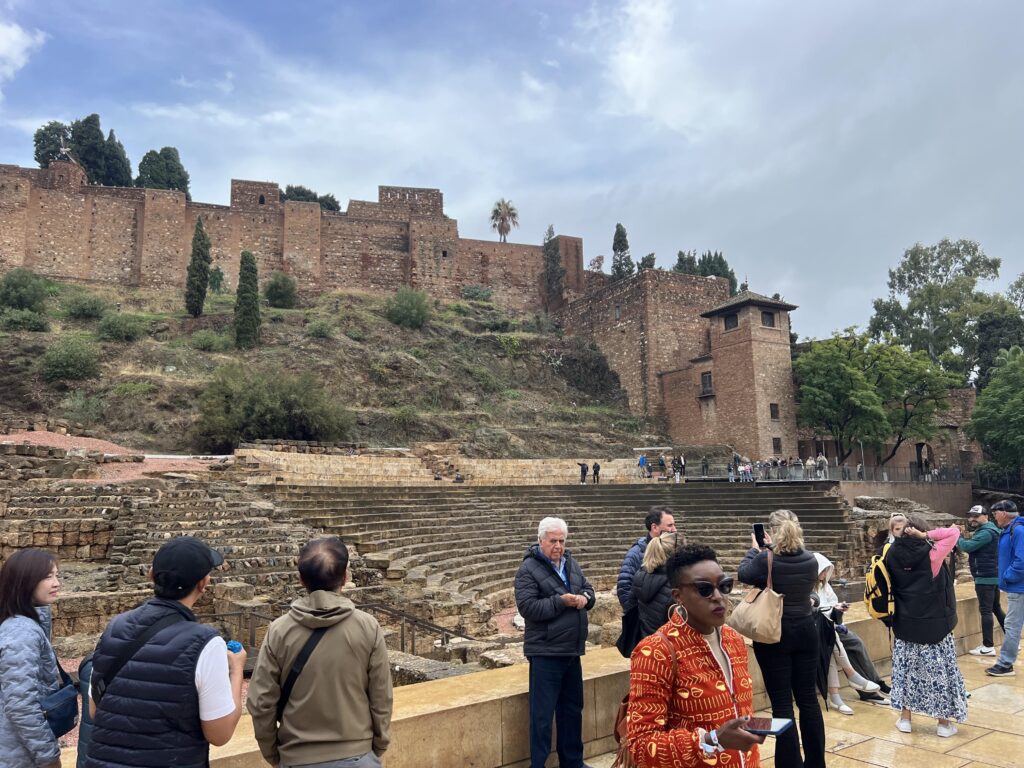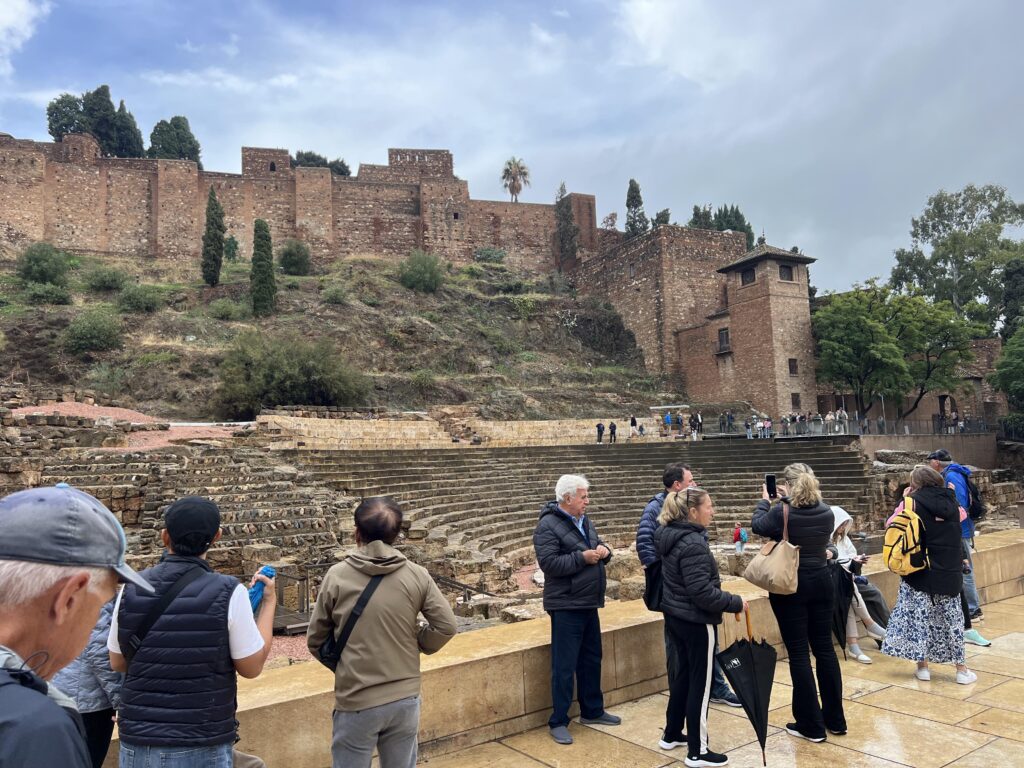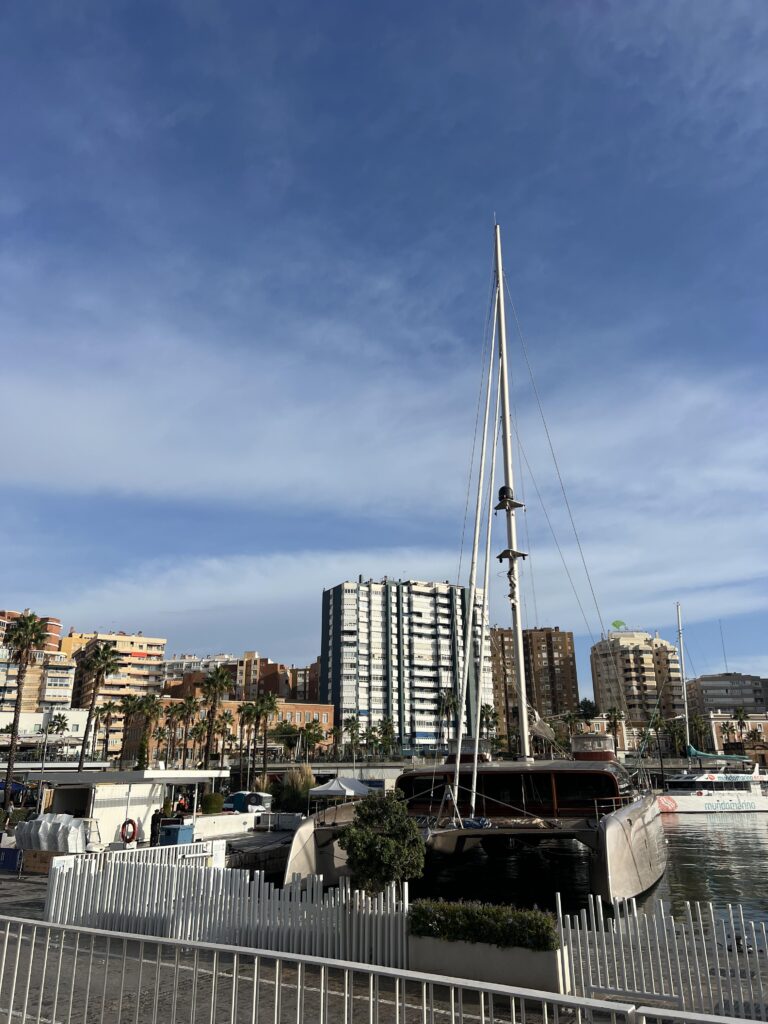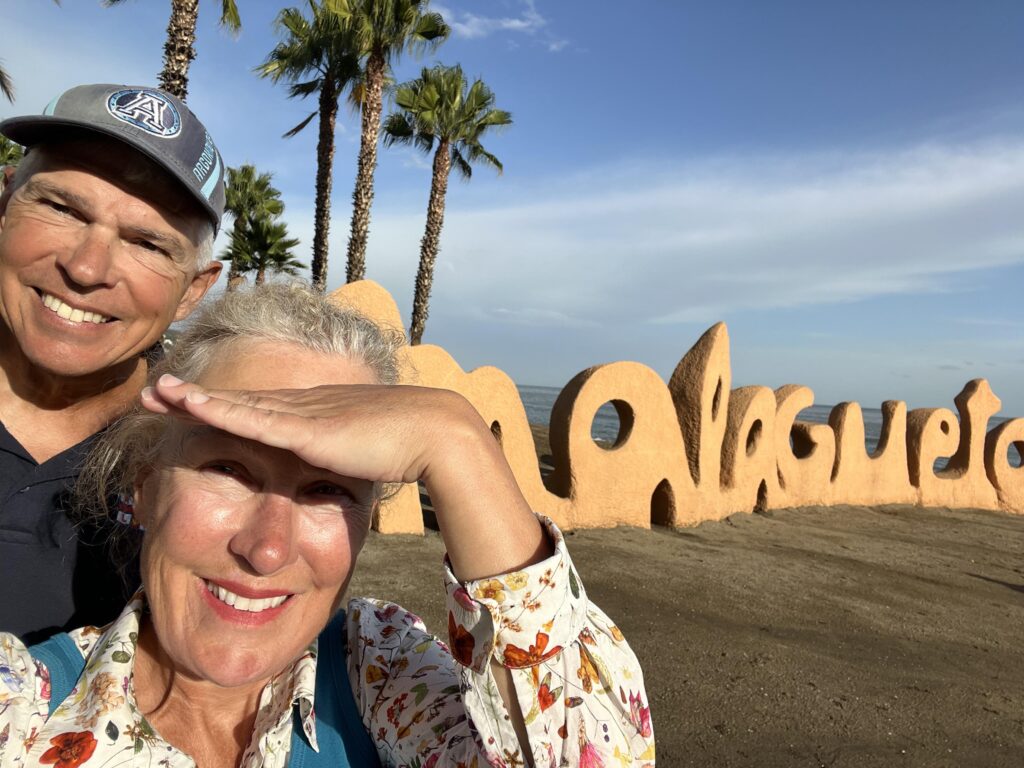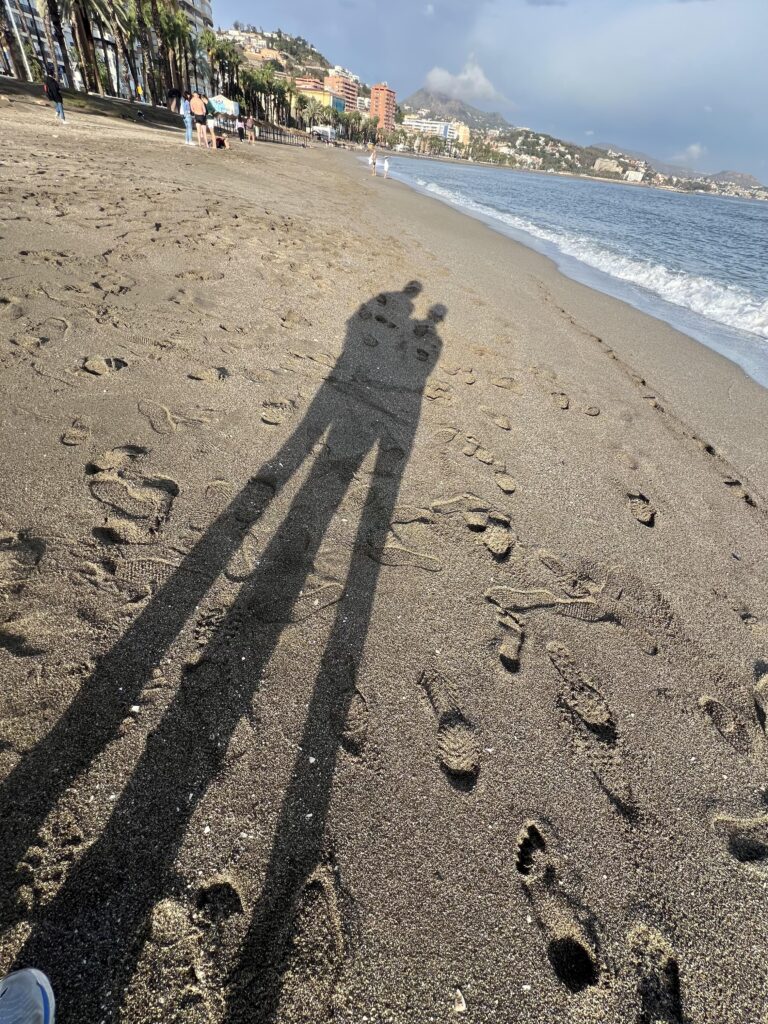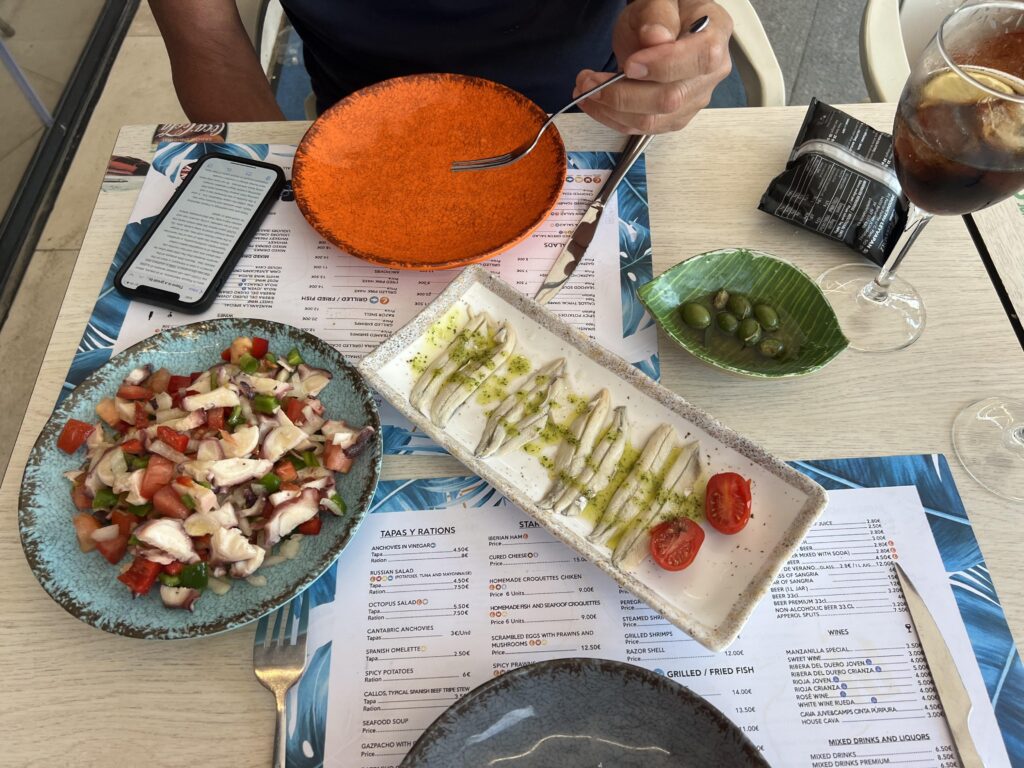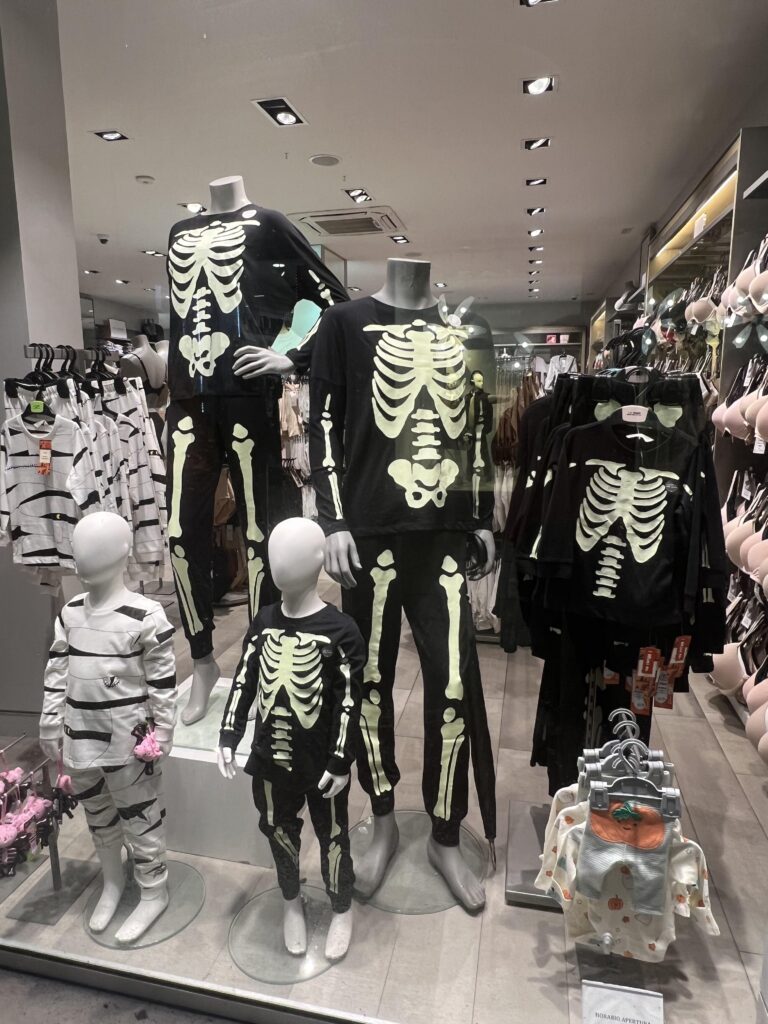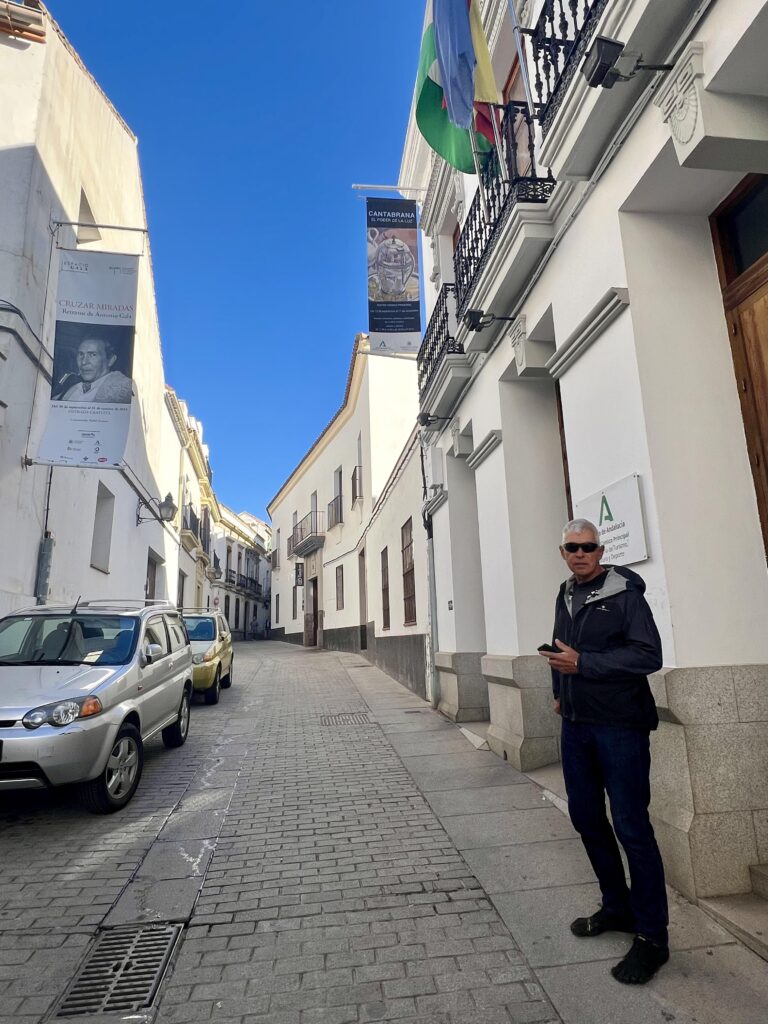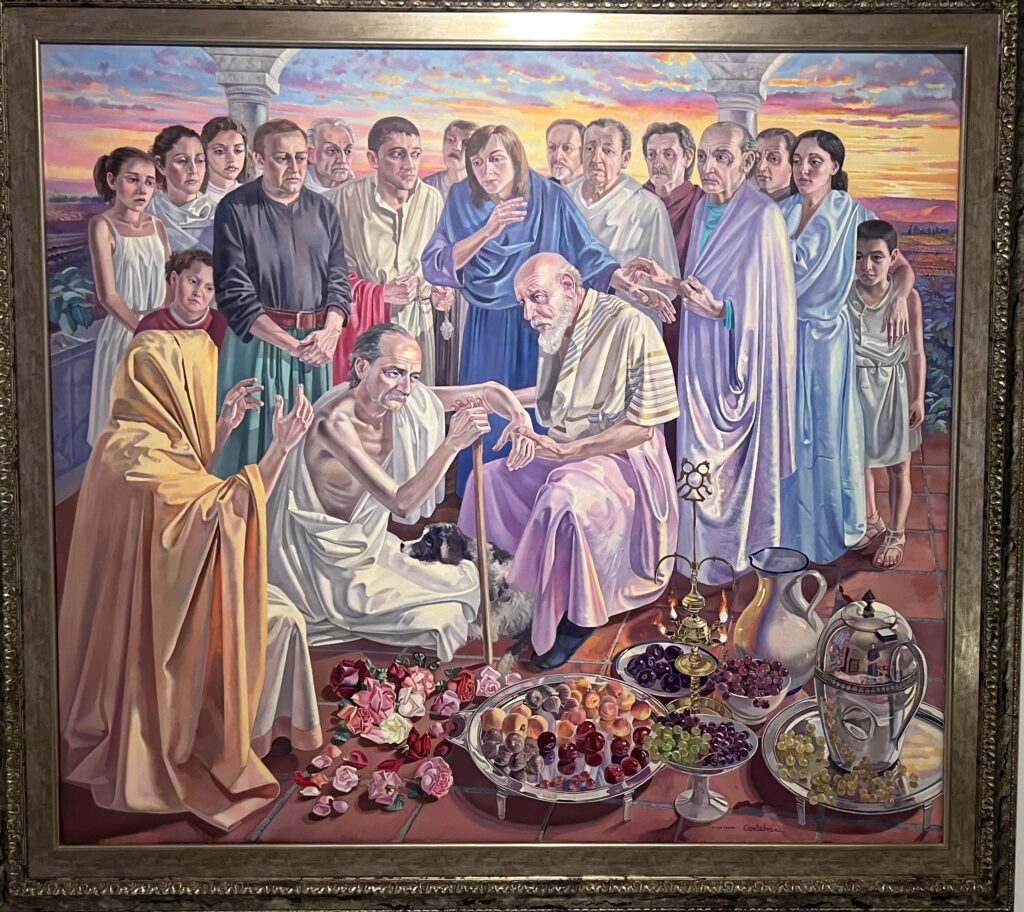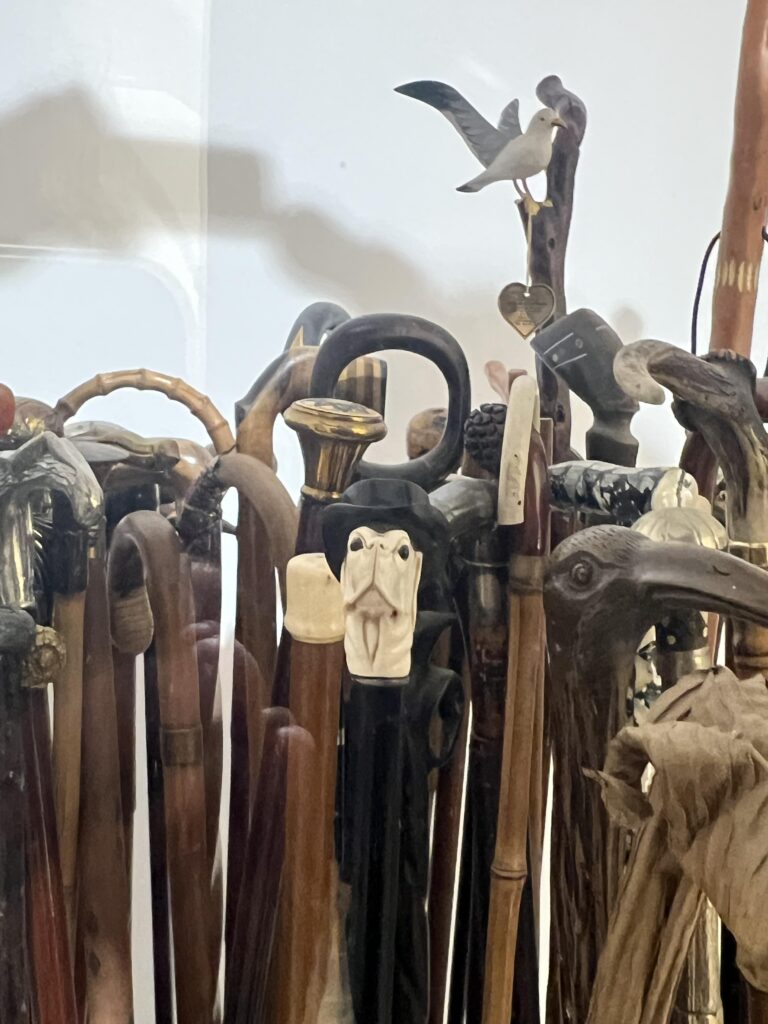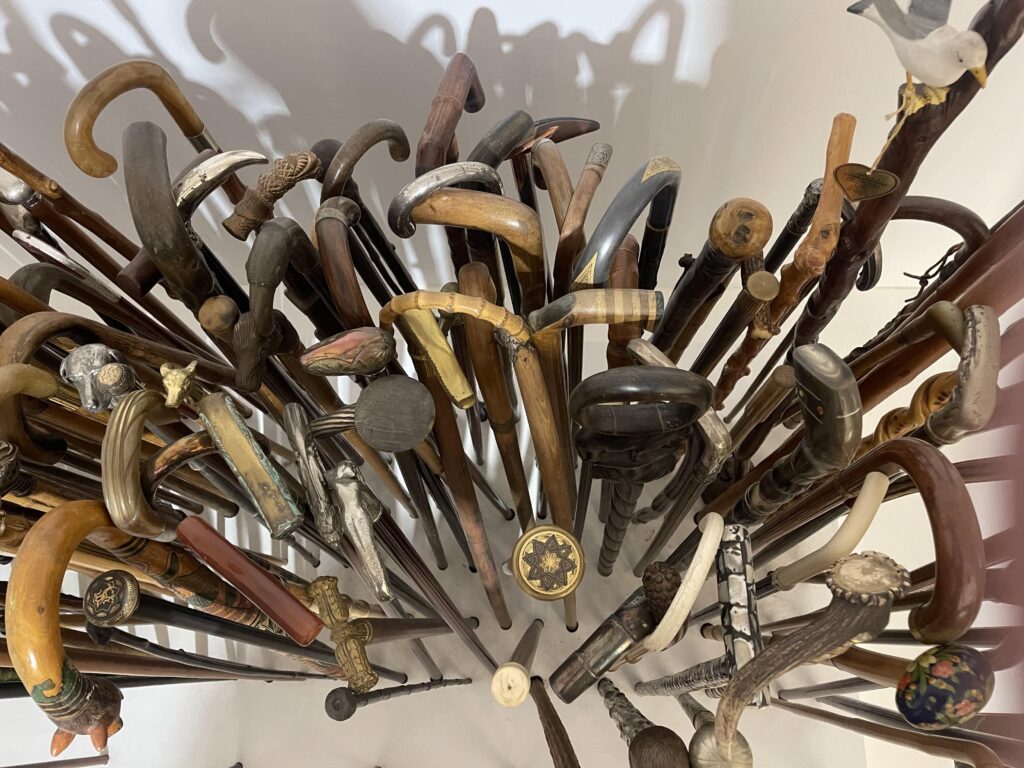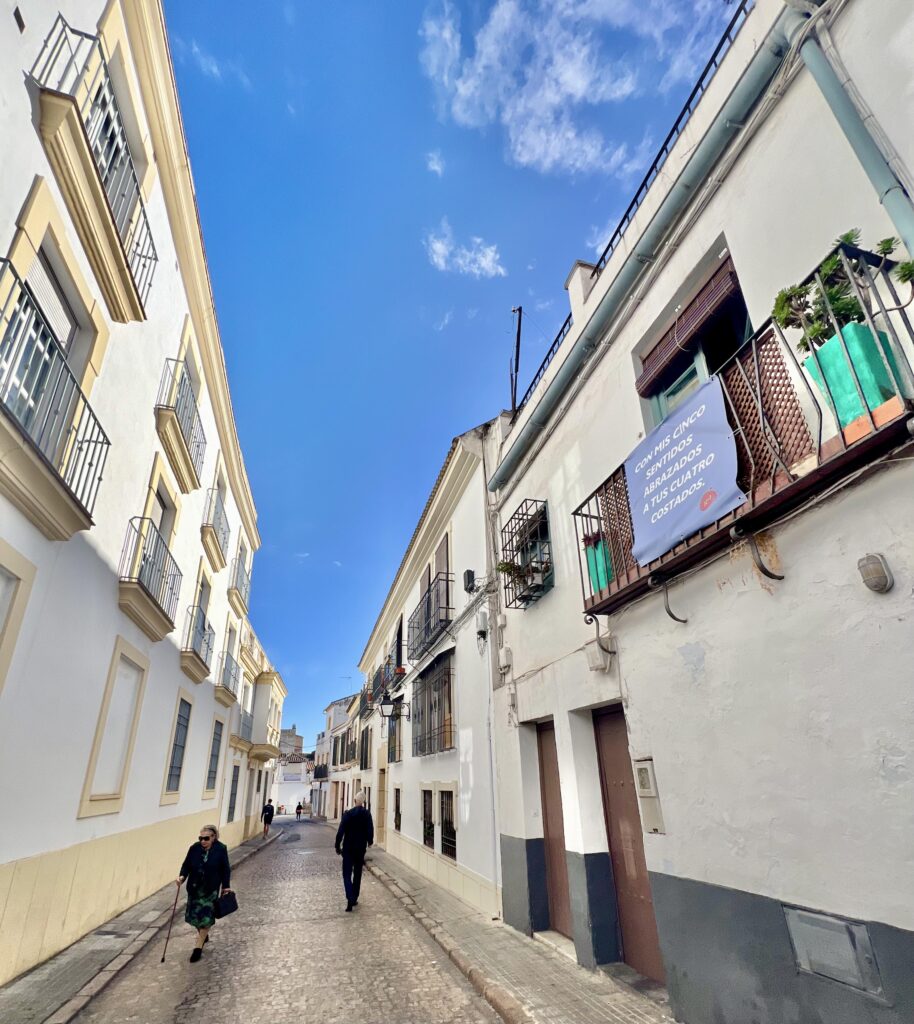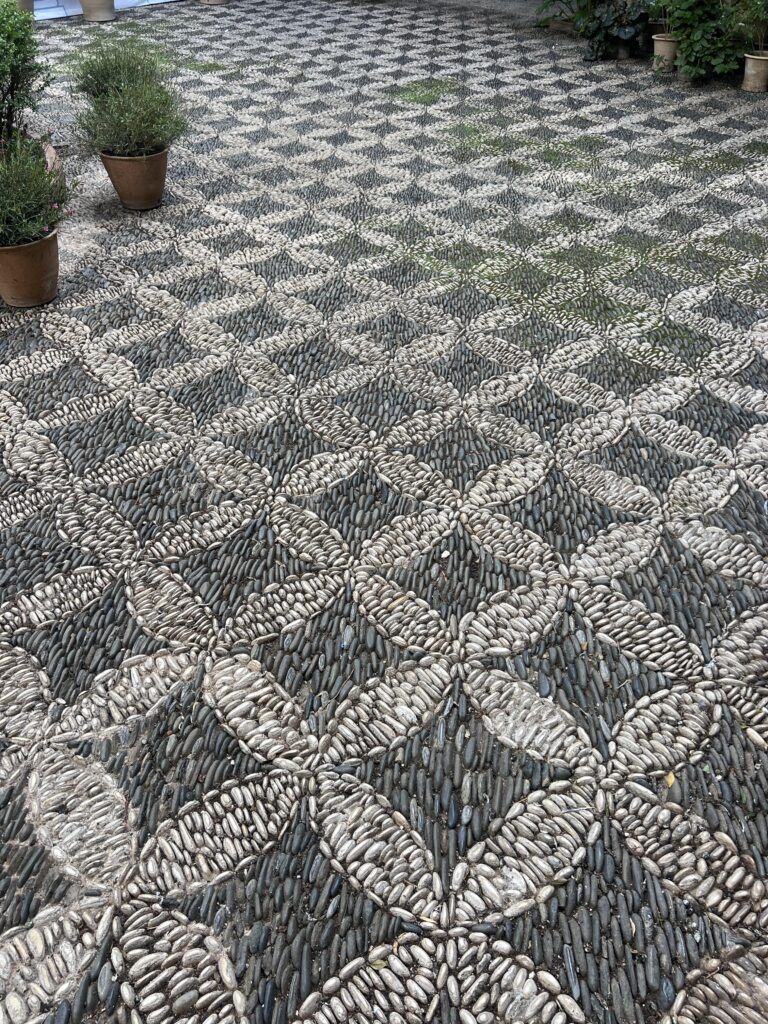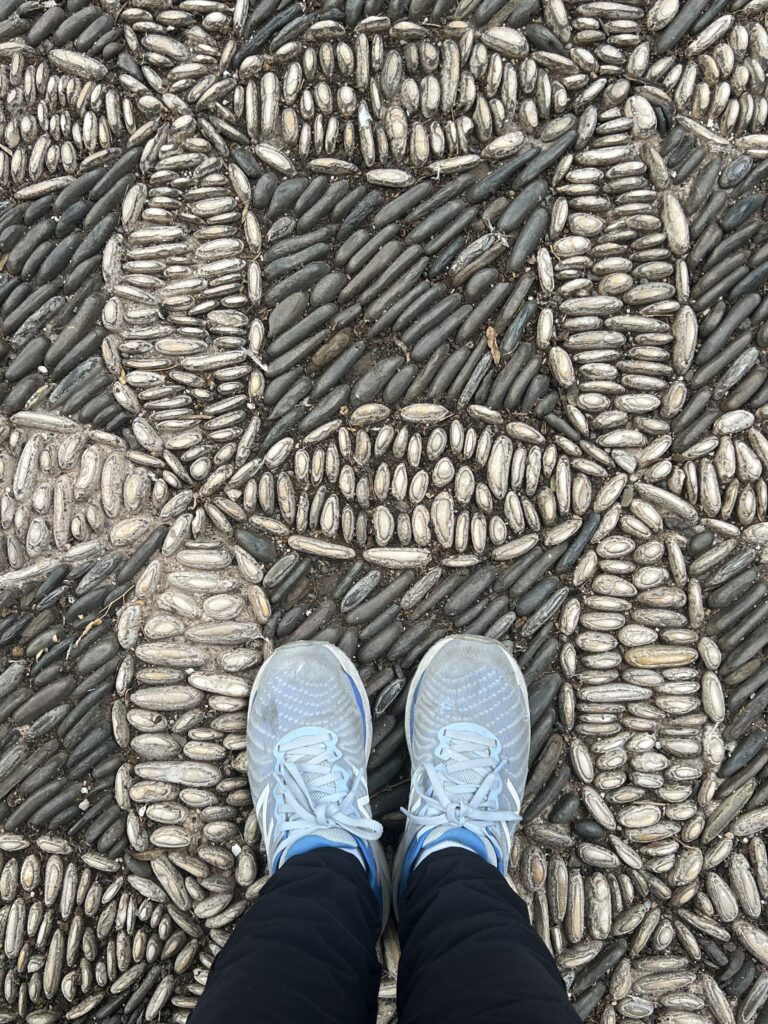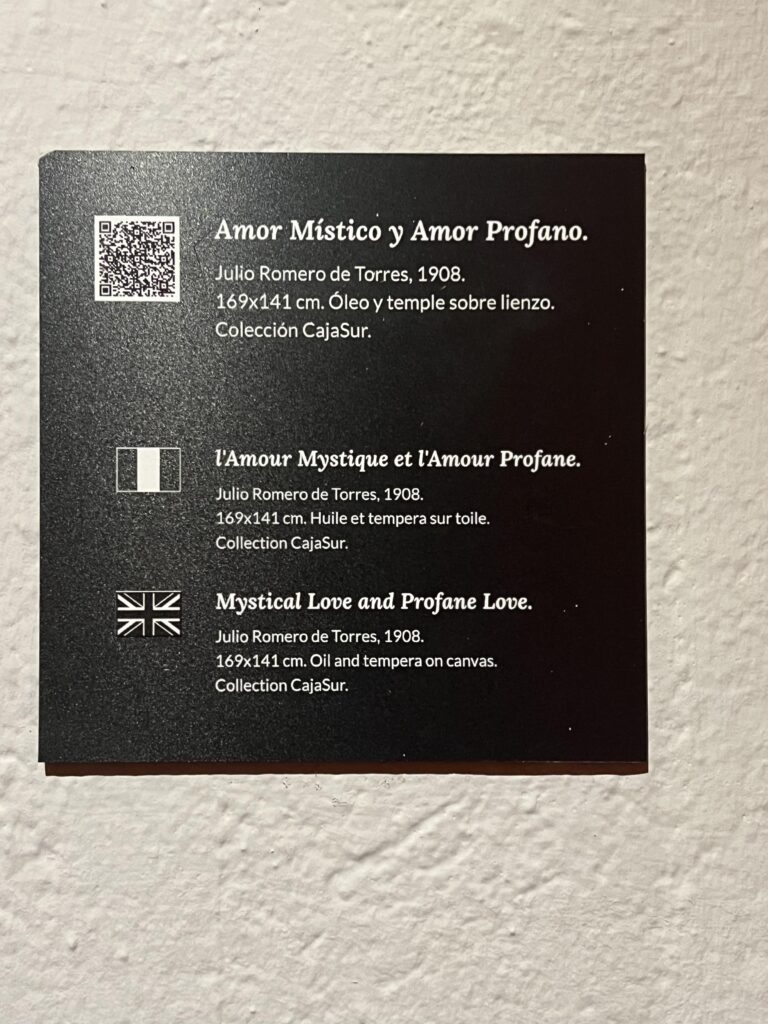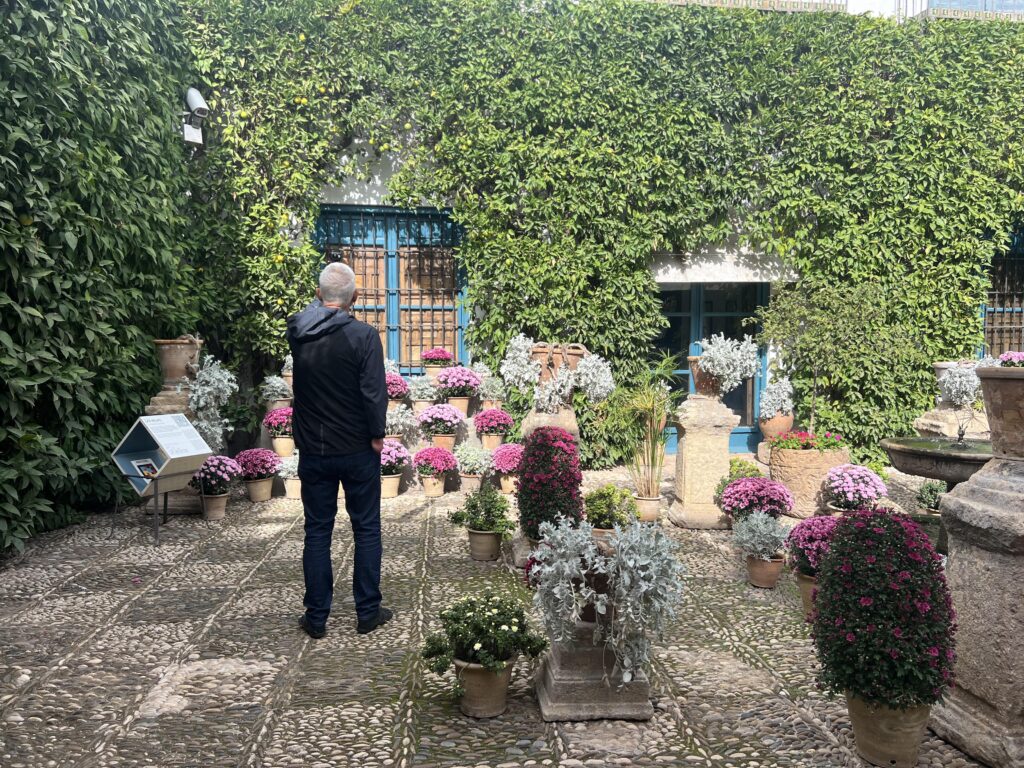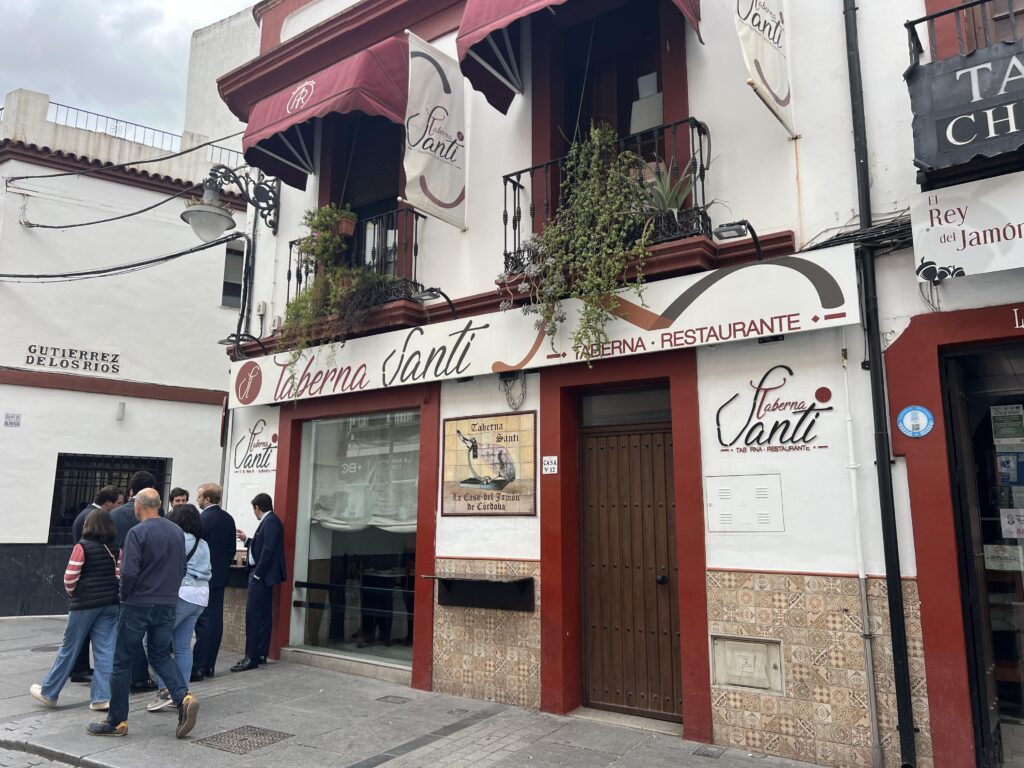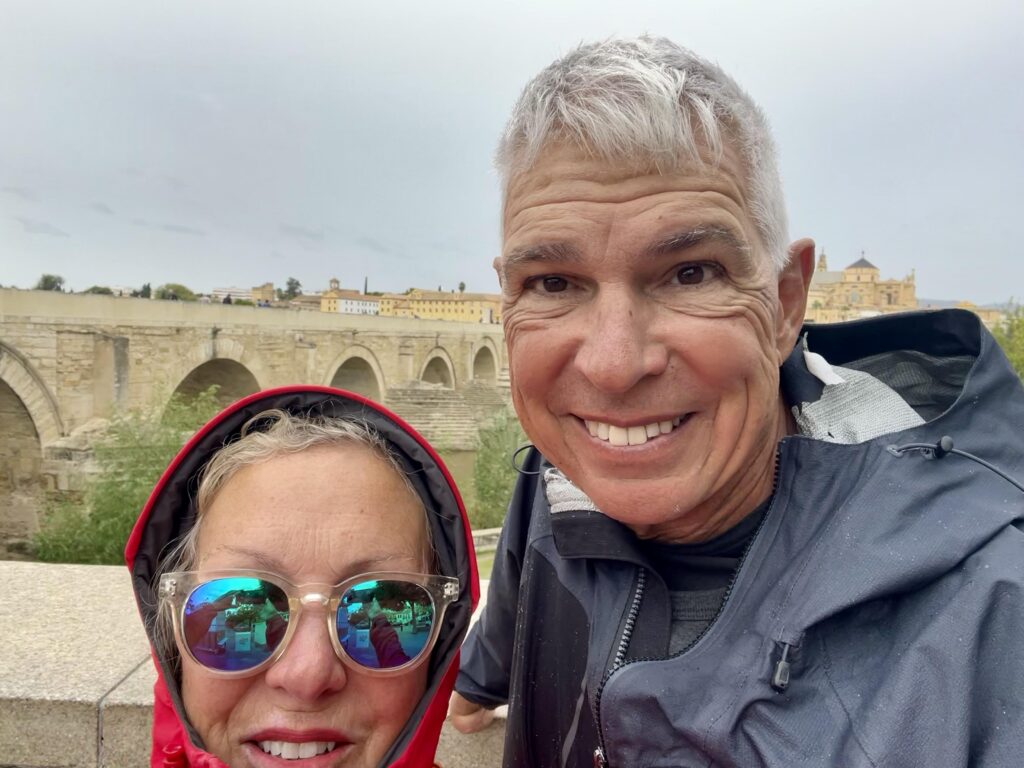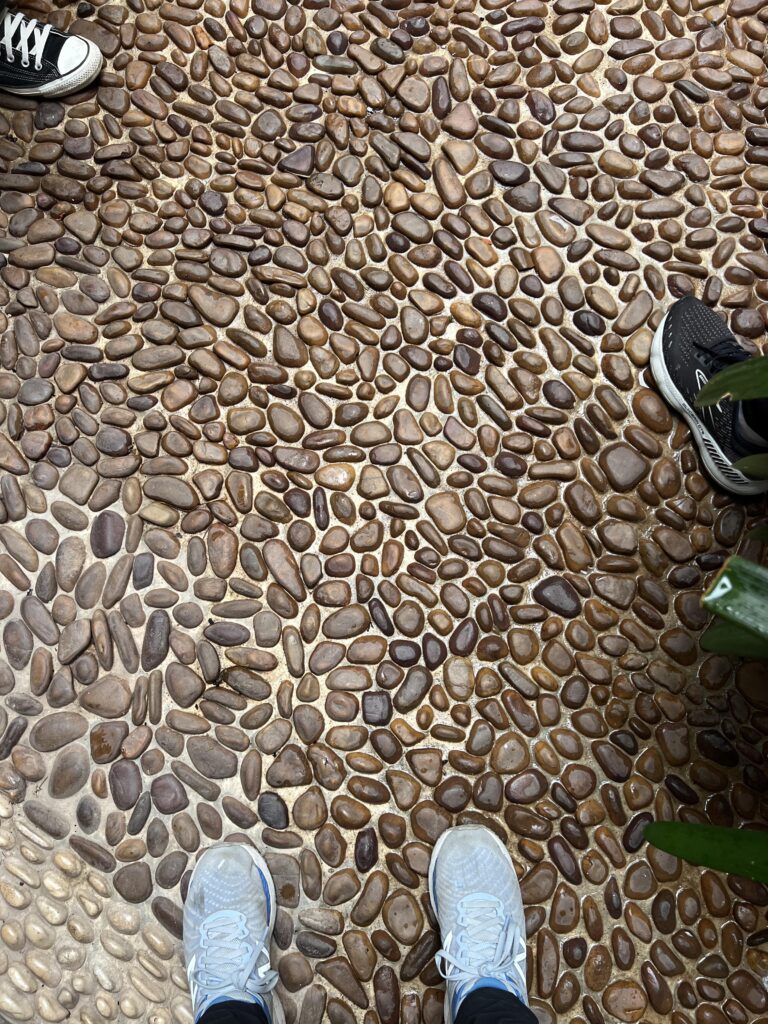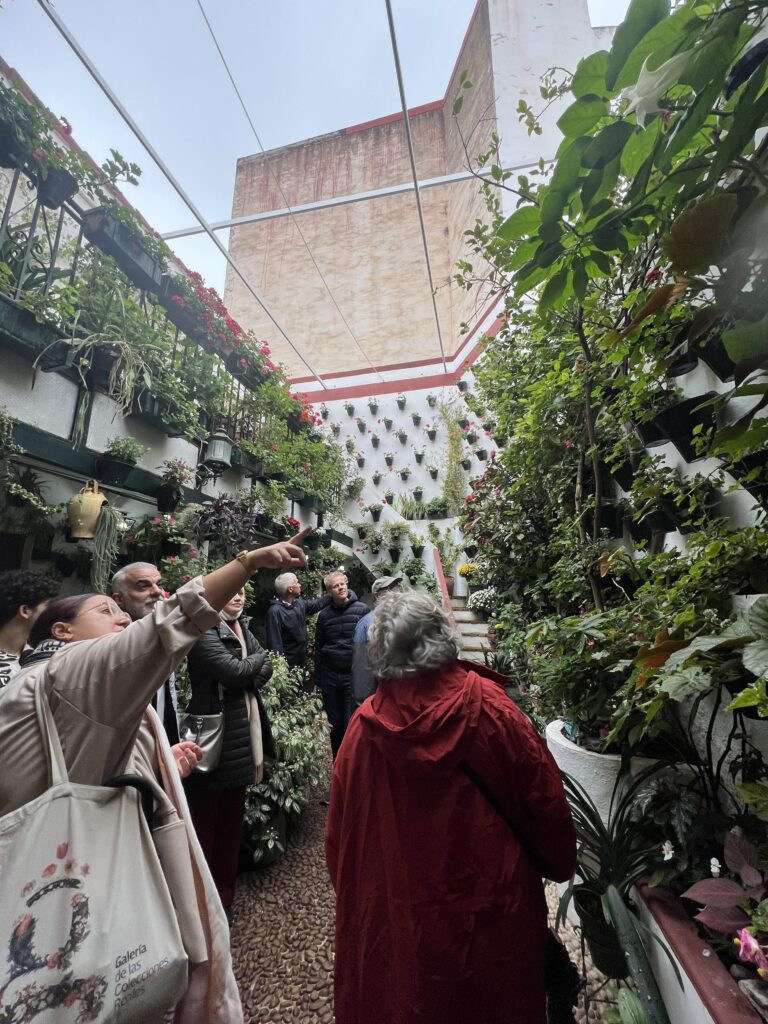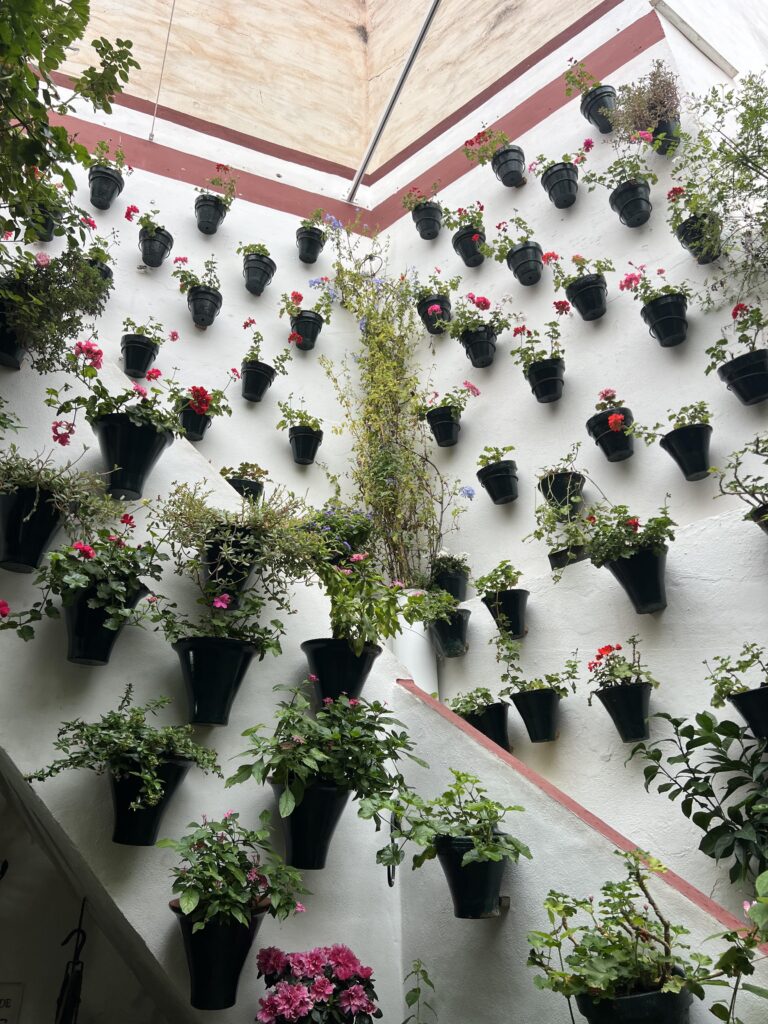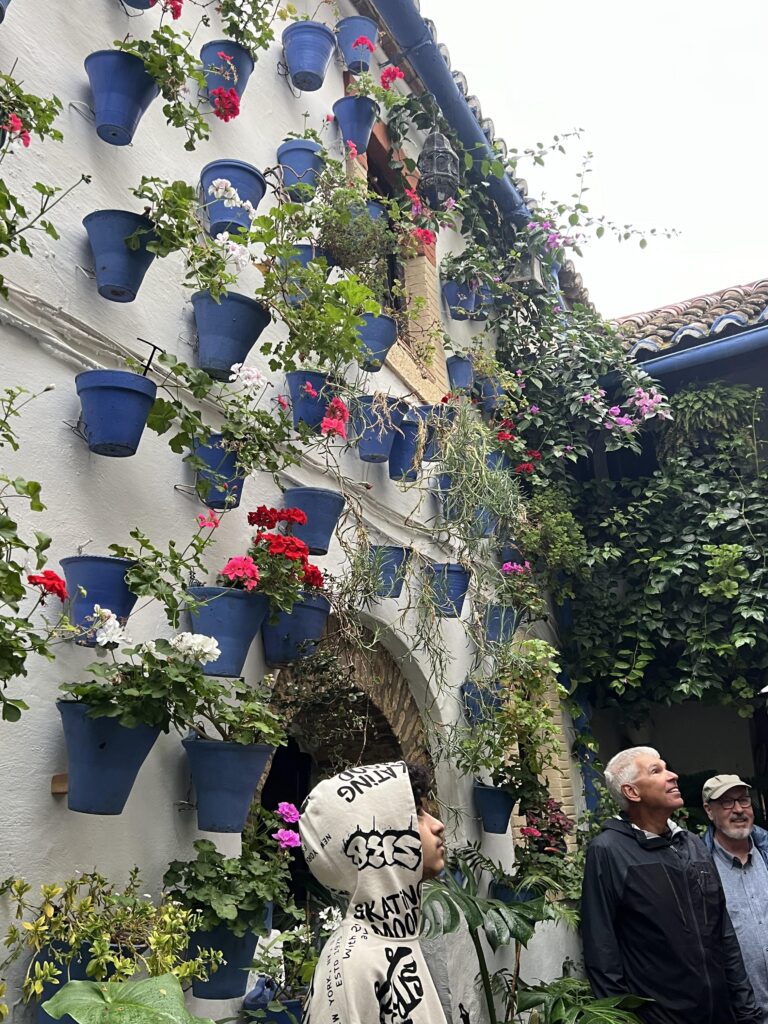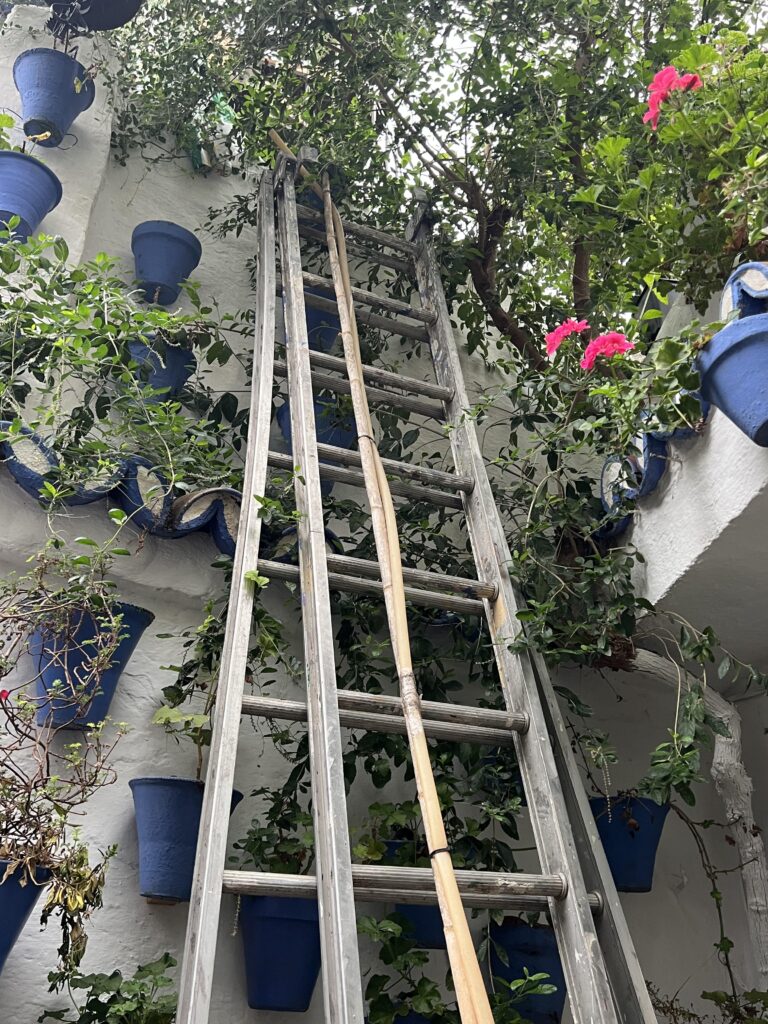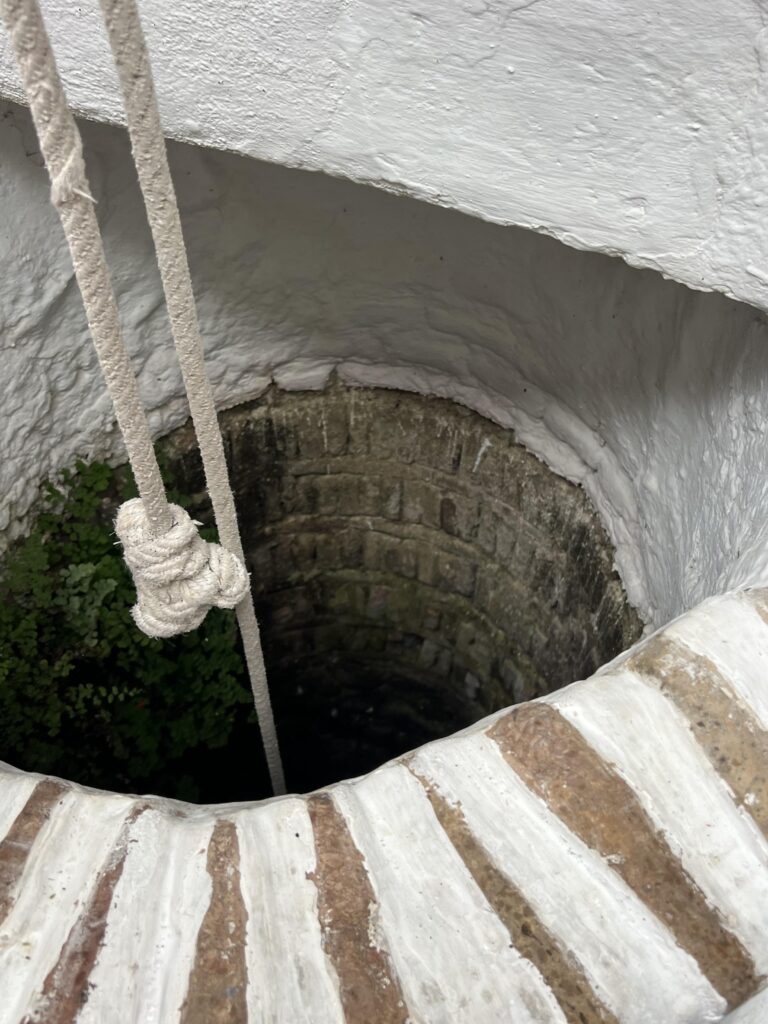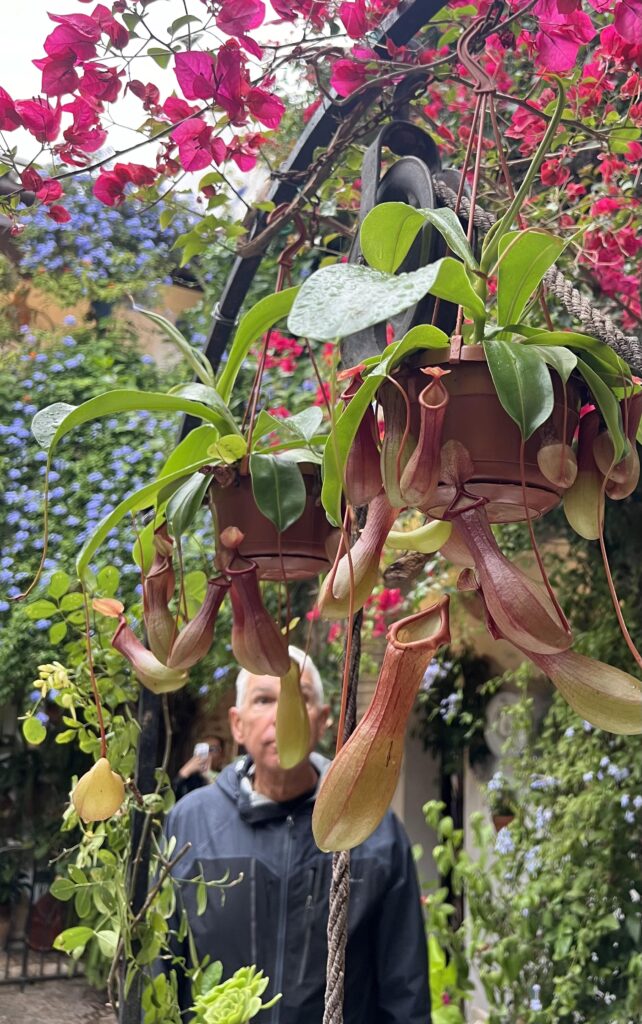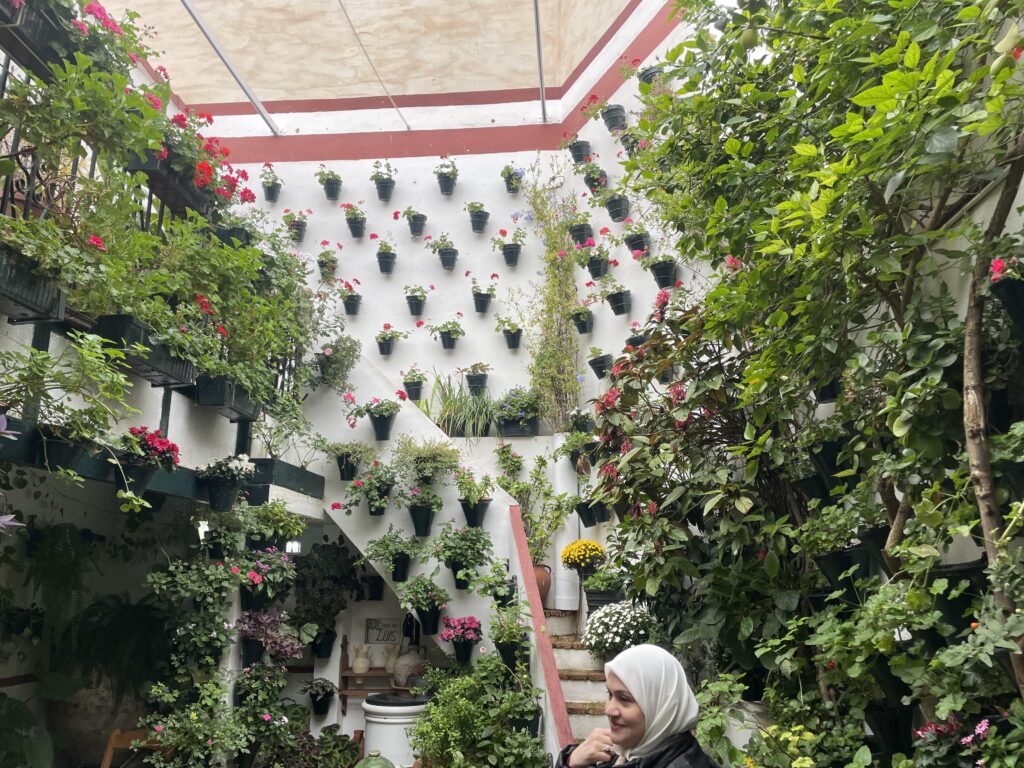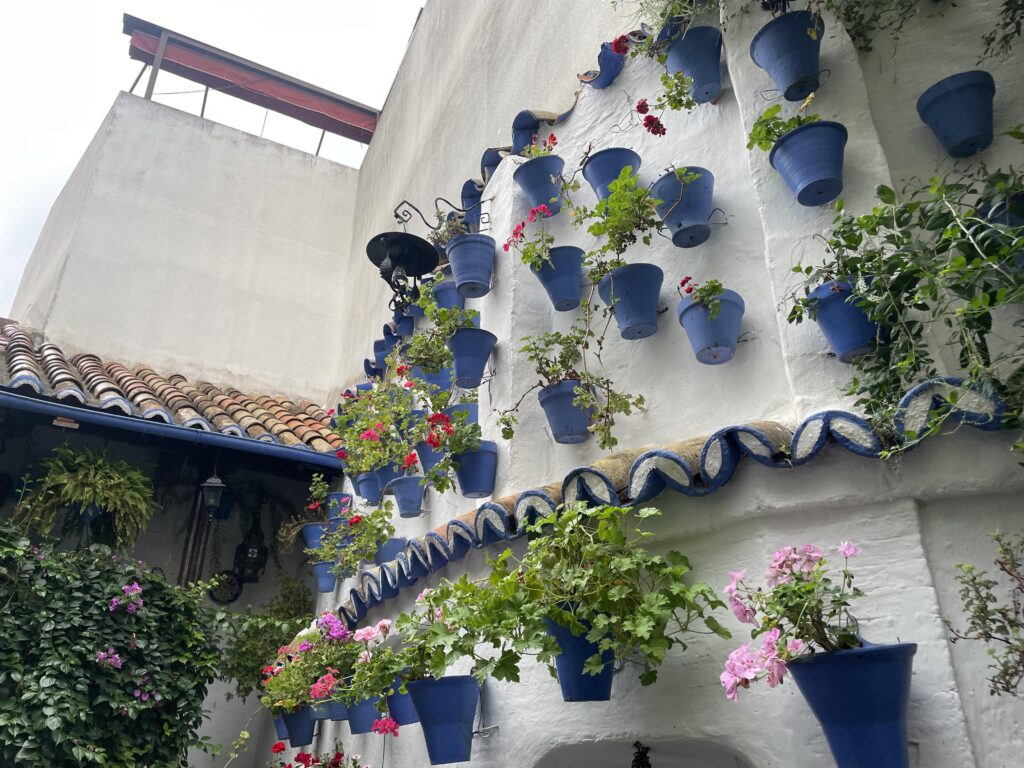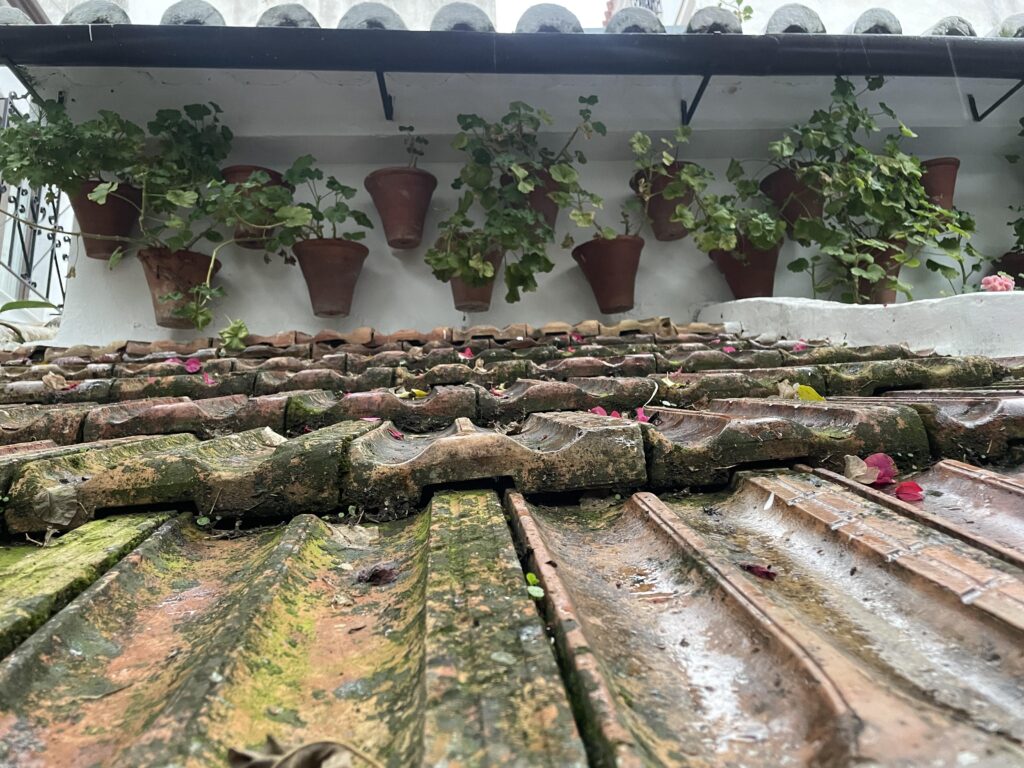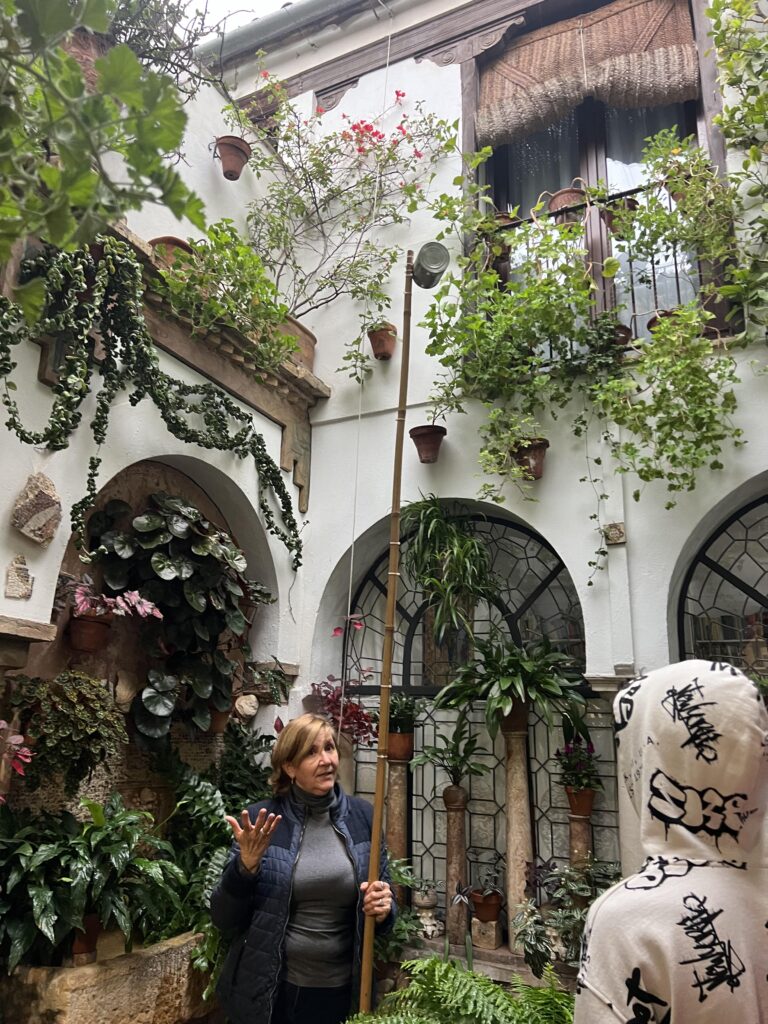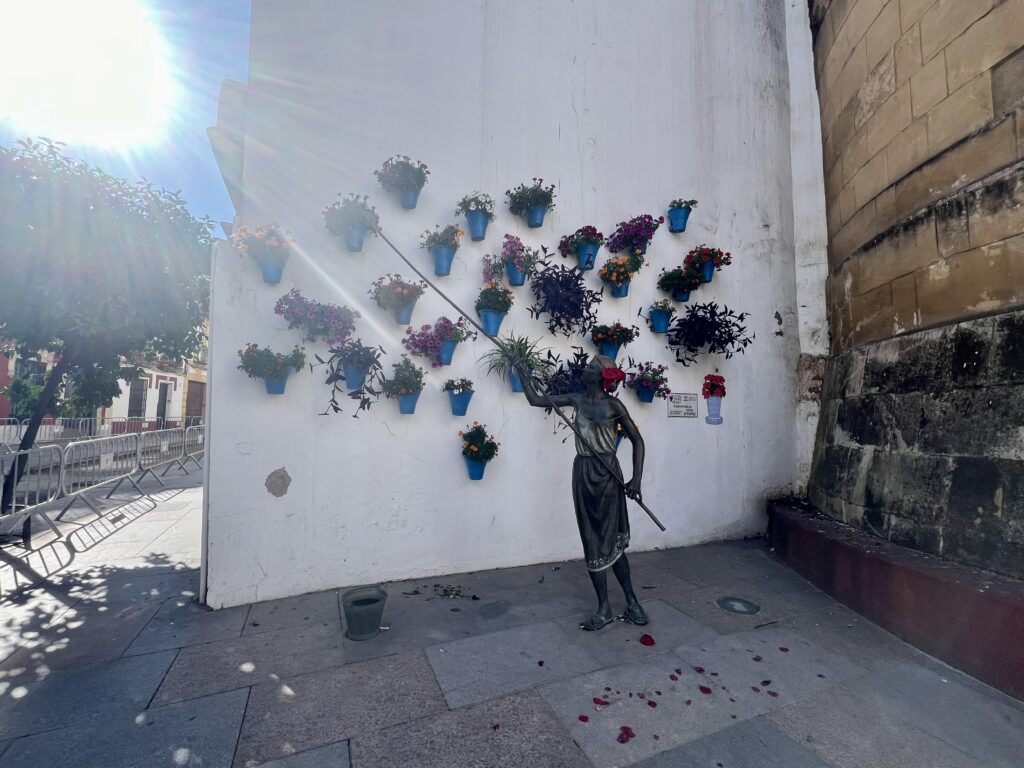Days 19-25 – Granada, Almeria, Alcabendas & San Sebastian (Oct 31 – Nov 5)
Here are a few photos we forgot to include in the previous post. The cave tour in Nerja was truly impressive and beautifully presented. Look at those stalagmites and stalactites: some of them resemble a gigantic pipe organ. The meal at “Patanegra 57” restaurant was spectacular. We really really liked Nerja and only regret not getting down to the actual beach. The shoreline is hostile/inviting. But there was the wind, and the rain with the brewing storm, and we had to get to Granada the next day.
We reluctantly said goodbye to our sweet Hotel Paraíso del Mar in Nerja (where the location for breakfast could not be beaten), and packed up the van under a rainbow. Our roads followed the coast which sounds idyllic and romantic until you remember the coast is curvy and full of ups and downs and you are in a van, not an Alfa Romeo convertible. I begged John to put us up on the superhighway and he obliged. Lots of tunnels and viaducts and therefore much flatter and faster and we had only a little rain.
Granada. City of pomeGRANATe. A city with a highly protected old section – traffic bollards that pop up so you have to talk to a disembodied voice explaining why you are entering that section. (We were going to our hotel.) You leave the wide and fast highway and the streets become one way, never straight, higher and higher, and increasingly narrower. The navigator becomes prone to groans and tries to muffle her gasps. Finally you reach the hotel, and park Ann-the-van which was a harrowing experience but no one got hurt or scraped.
The driver earned the plate of paella and the espresso he ordered in the plaza 100 yards down the street from the hotel, and then we walked down into the city. There was a flag up on one of the balconies protesting mass tourism in the Albayzin area. I think the same sentiment is prevalent all over Spain right now. (E.g. Barcelona residents waterbombing tourists this past summer.) It’s a precarious balance when your economy is dependent on…
We had prepurchased a ticket that gave us entrance to the cathedral and Royal Chapel and access to the “tourist train” so we took advantage of those sites, in addition to walking walking walking in the city. (See photo of elegant Spanish women of a certain age.) It was Halloween evening and there were a few people dressed for it. There seemed to be lots of guitar-makers (luthiers) in the city, something we hadn’t noticed in other cities before. Is Granada famous for this? Or is it famous specifically for flamenco guitar?
We continued to monitor the situation in Valencia closely, mostly by following what was being posted on expats sites from the city, and GoogleMaps which was posting road closures. Confusion reigned.
Finally we took one of the ubiquitous red city buses back to our hotel and called it a night.
November 1st – Friday – we took a different red city bus up to the Sacromonte caves which were inhabited by “gypsies” in the 16th – 18th centuries and more recently. From there, and from the convent up the road (I do mean UP), there were fabulous views of the Alhambra where we had a tour booked for 2:00. (Made the reservation for that about two months ago. Imperative.) We made our way back down into town and then walked UP the pedestrian path to the Alhambra, grabbed a light lunch at the iconic La Mimbre restaurant and then met our guide, “Pablo”, a knowledgeable young history teacher with a couple of Masters degrees in history who supplements his income by taking on tours as a subcontractor. I’m not going to say anything about the Alhambra, it has to be seen in person to be believed. See the photos. There’s a reason we had to reserve those tickets months in advance. I’m glad we had a guide. Imperative to fully appreciate what you are looking at.
Meanwhile, reports were coming in about the severity of the flooding in and around Valencia. We grabbed a meal of deep fried anchovies at a restaurant in the plaza down the street from our hotel and called it a night.
Saturday we were headed back down to the coast, to Almería. (Pronounced Al Maria.) We still didn’t know how we would or could continue from there on to and then past Valencia, but we had a couple of days to figure that out. HOWEVER, as we were leaving the hotel we chatted with a young couple who had just arrived from Andorra where they live/ They were planning on visiting the woman’s mother in north Valencia in a couple of days; she hadn’t been negatively impacted by the flooding. When they heard that we weren’t sure what to do about our plans to somehow include Valencia they urged us VEHEMENTLY to do whatever we could to abort those plans.
Our three hour drive to Almeria was spent exploring options, it was now abundantly clear we could not go to Valencia. But it wasn’t just a case of skirting around the city, the roads all lead you BACK to Valencia. (Damn mountains.) By the time we got to Almeria, we’d decided: scrap in their entirety the plans to continue eastward along Spain’s beautiful but somewhat harsh and mountainous coast (and forecasts of more extreme weather) and drive due north, spend a night just north of Madrid in a Holiday Inn Express, then push onward the next day to a city we had visited and loved before, San Sebastián, on the north coast. From there, we’d head up into France and the Loire Valley, and end in Chartres, store the bikes, take the train to Paris and fly home as planned.
There were a lot of ifs in that plan, but it’s the best we could come up with at the time. *Could we indeed return the rental car to an entirely different location than what was on the contract? Could we find hotel rooms in what is high season in the Loire Valley? Could we get tickets to the popular sites? (Chenonceau). Were we allowing enough time to be able to cycle the kilometres needed to get onto our flight out of Paris on the 22nd?
Bottom line, we made it to San Sebastián. John’s 69th birthday dinner was an UberEats pizza in the Holiday Inn Express on the outskirts of Madrid rather than paella in Cartagena, as planned. I forgot to say: Almería was an interesting city, unfortunately the tour we had booked of the miles of tunnels built to protect its citizens during the Spanish Revolution was cancelled at the last minute (during these times one doesn’t ask), but if you are planning to visit, that looked fascinating. Franco and Hitler’s Luftwaffe practised bombing this area just before World War II began. and there is a fantastic market there. if you g, budget three nights.
The roads from Almería to San Sebastián were fantastic feats of engineering. Lots of aqueducts. Lots of tunnels. We went through many different types of weather – rain, fog, sunshine, wind – and the terrain was always beautiful.
It was a relief to get here and say adios to Ann the Van. When we turned her in, the people at Enterprise pointed out that we had a flat tire. Gulp. It must have been a very slow leak but there was indeed a screw embedded in the tire. We got lucky. I would not want to be stranded on the side of those superhighways with a puncture.
And now, I think we’re mostly caught up. What a pivot. My travelling companion is levelheaded and competent. He’s a great driver and forgiving of my navigational hiccoughs. We are very, very lucky to be able to turn on a dime. And now he’s 69!!!
Onward.
*ALL of these questions paled in comparison to the devastation wreaked on Valencia and the towns around. The images on television are heartbreaking but the country is rallying in a beautiful way. It seems hopeless, the clean-up, but they are working together. As I write this, America is voting. Let’s hope that the goodness in humanity will prevail there, as well.
